|
|
|
|
|
|
Collecting in the Río Tapiche drainage
By Tom Christoffersen
In October 2009, I visited the Peruvian Amazon again, exploring dwarf cichlid
habitats and collecting fish ( among other things ).
This time I had the pleasure of having Mark Breeze (Microman) accompanying me.
From the jungle capital Iquitos, we carried out several expeditions to examine different biotopes, fish
and their habitats.
One of these expeditions was a long, amazing boat trip up the Río Tapiche and
back, a journey of more than 1100 km (700 miles) on the rivers.
Some photos of a fish a fisherman had sent me earlier. motivated this long trip.
The fish has similarities with
Apistogramma rubrolineata, but it had been collected a long distance from the Río Madre de Dios drainage, where the
A. rubrolineata lives.
To me: Obviously a new species......
In Iquitos, Peru

In October 2009,
I was in Iquitos,
Peru, again.
This map shows where
it is located, in the
Peruvian Amazon:
The fish
In 2008 the Japanese Minoru Matsuzaka, the editor for "Aqua Life" in Japan,
bought a fish from a fisherman in the Río Tapiche area, and presented this picture of it, in a magazine:
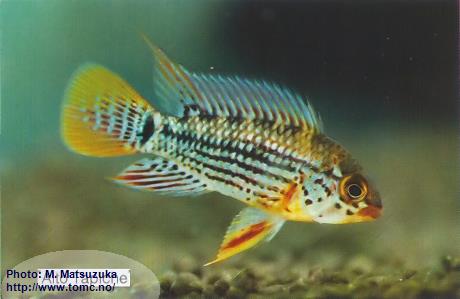
He gave it the name
Apistogramma sp. "Alto Tapiche"
The fisherman sent me this picture, and
claimed to know where the fish could be found.
Could we resist this opportunity?
No way :-)
The plan
We planned to take a big boat ("lancha") from Iquitos (blue sircle),
to Requena (marked red on the map):
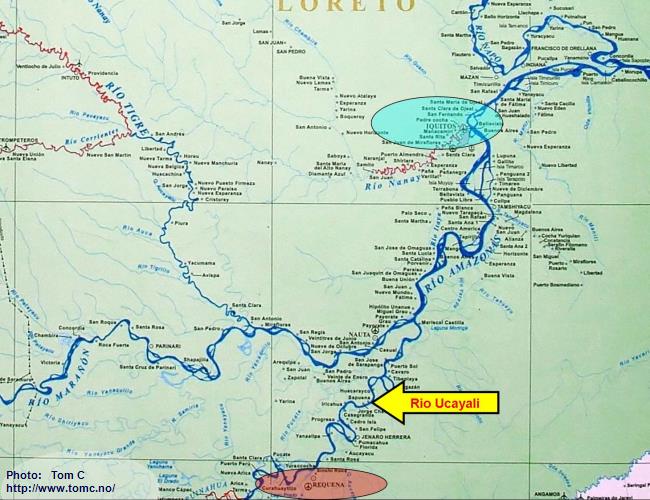
We hoped to find a small boat, with a driver, in Requena, that could take us all the way up the Río Tapiche to Santa
Elena (marked yellow), spend the night there, and from there take the long trip to the area where the Apistogramma sp. "Alto Tapiche"
were supposed to live:
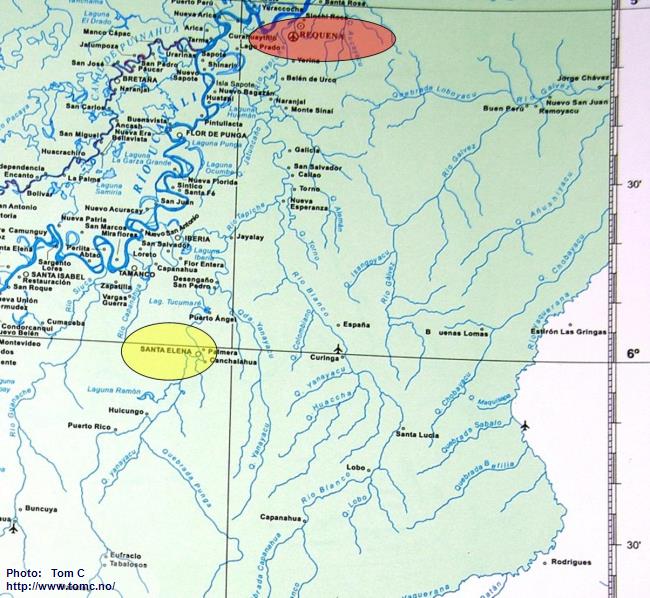
We planned to collect fish several places on our way back.
Iquitos - Requena
We left Iquitos at 14:30 (2:30 pm.) in a big boat:
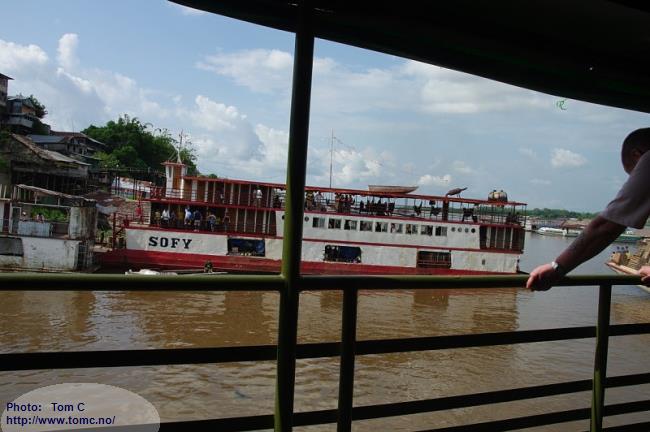
After a few hours, we could, as usual when passing Tamshiyacu, observe the river dolphins:
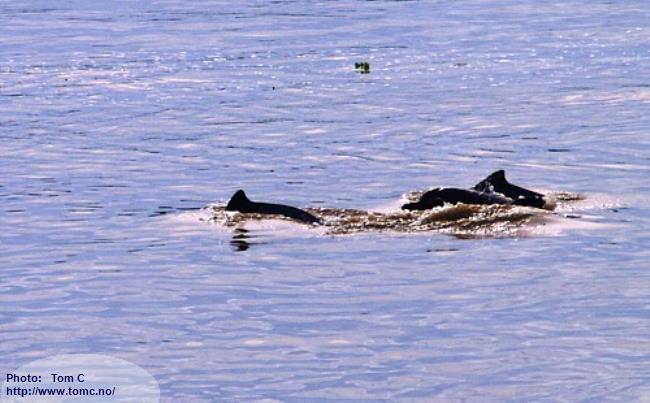
After a few more hours, local people selling home-maid white cheese and bread,
entered the boat at Jenaro Herrera.
After this nice meal, the night approached:
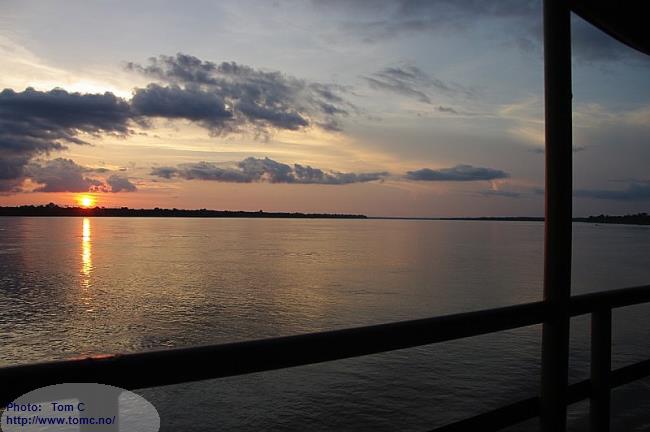
and soon the sun disappeared:
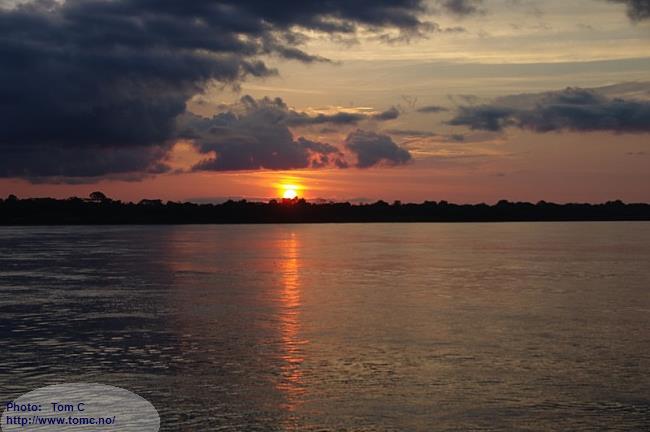
A spectacular view:
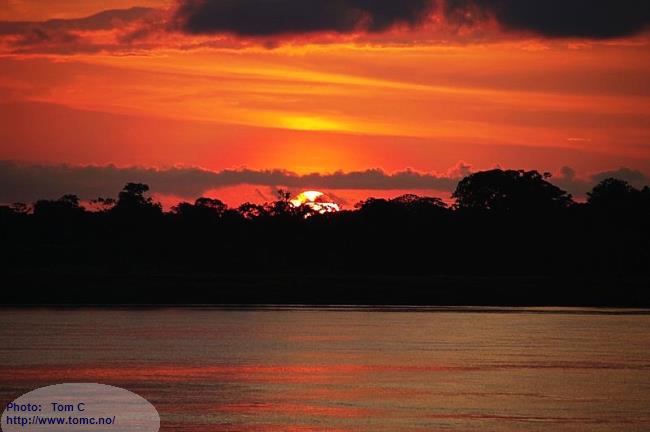
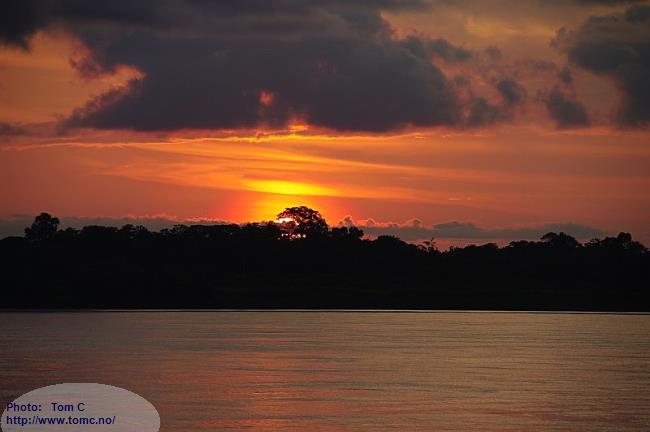
In the dark, we, and the lights on the boat, were attacked by hundreds
of these hard-as-a-rock-when-they-hit-you-in-full-speed
and heavy creatures:
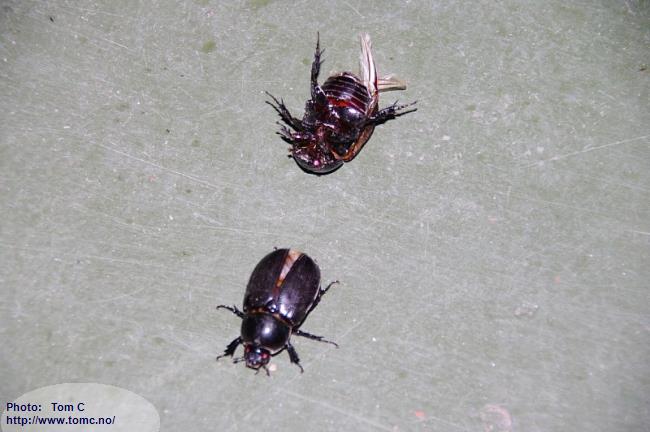
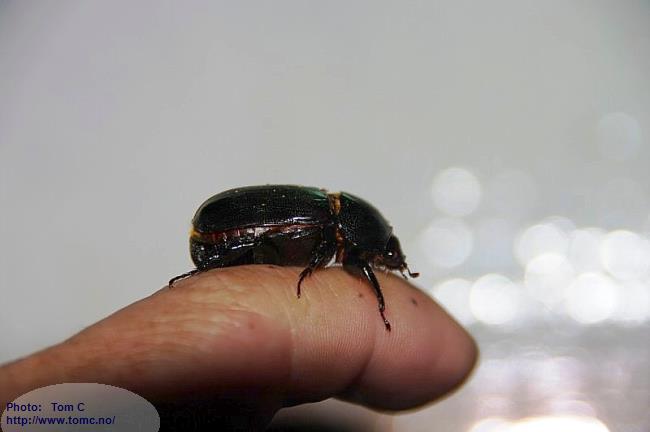
After a good night's sleep, the next morning brought us amazing
sights along the banks of Río Ucayali:
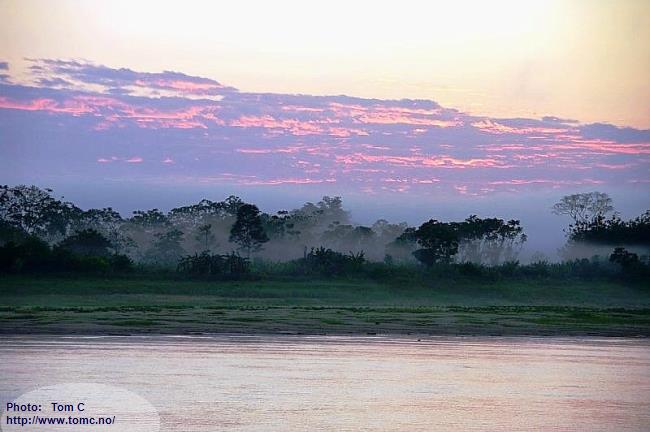
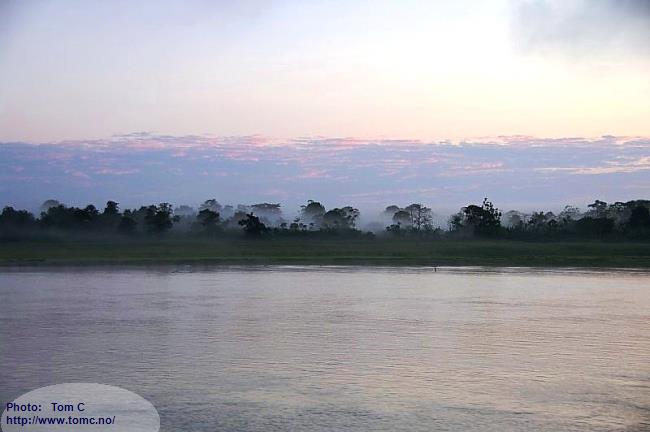
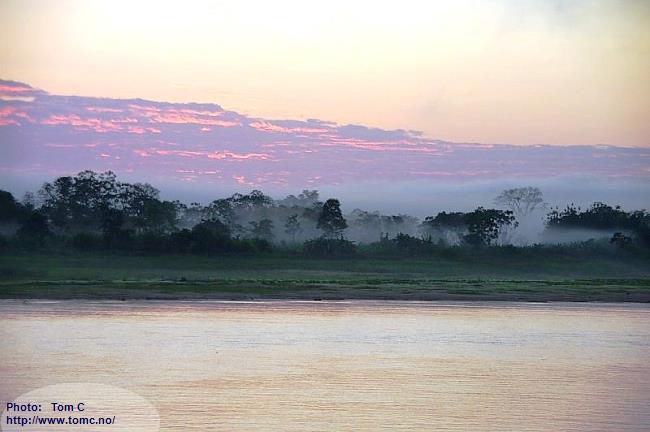
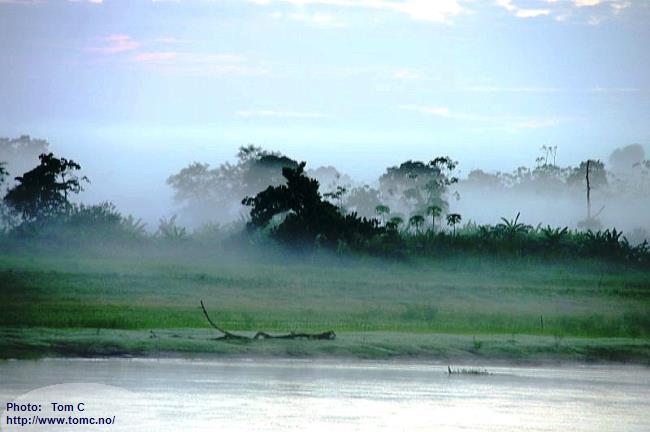
We arrived Requena at 09:00 am.
Requena
The day was used to find a driver with a boat and an engine, willing to bring us up the Río Tapiche.
We managed to make a deal with a local boat owner, bought 180 Gallons of gasoline, and agreed to start from Requena at 05.00 the next day.
After some food at a local restaurant, we went to bed at Hotel Sadicita.
The next morning we were ready outside the hotel at 04:30.
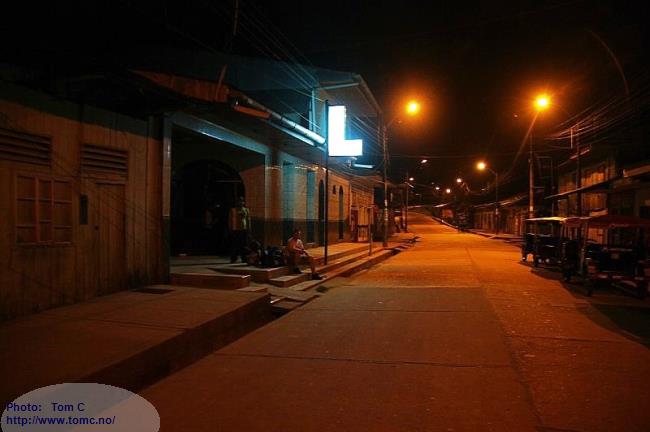
In the harbor, the boat that brought us from Iquitos was still there:
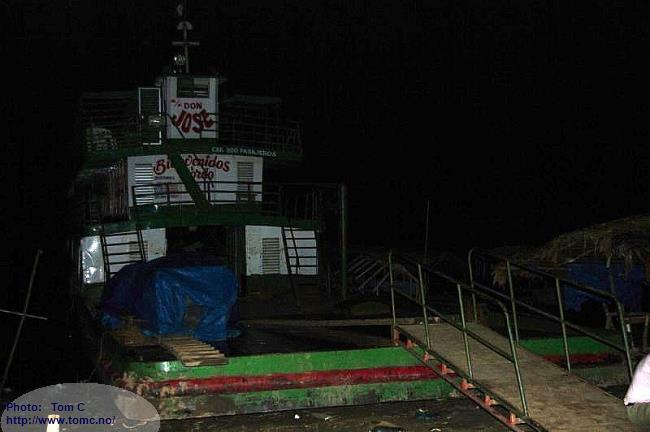
and so was our driver, with his boat:
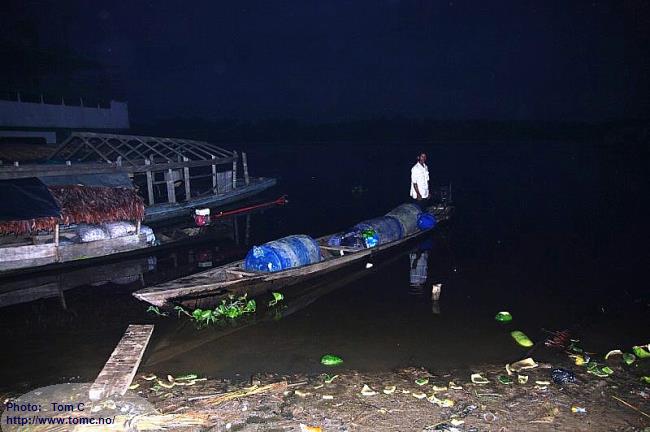
The 180 Gallons of gasoline were already brought on board, in 3 large barrels.
Not much room left for us and the local fisherman we had
brought with us from Iquitos!
The harbor of Requena was still quite dark and calm:
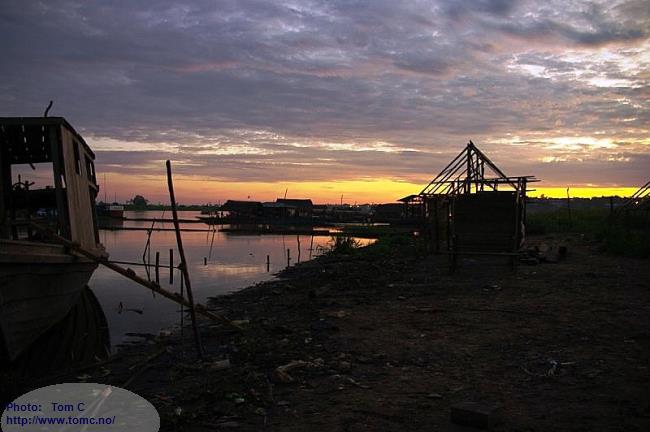
Up the Río Tapiche
Ready to go!
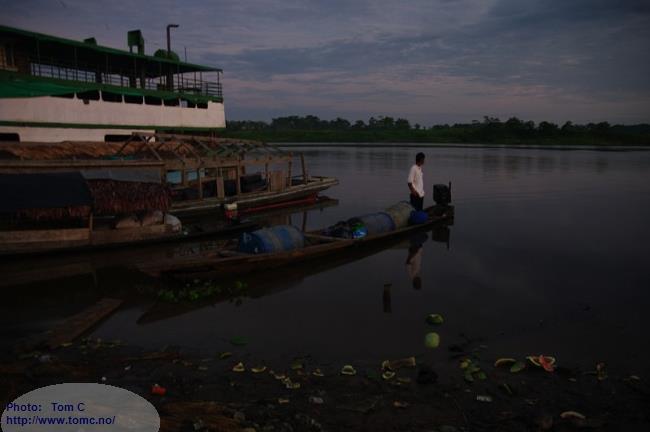
And at 05:15 we left Requena.
The estimated time was a trip of 10 - 12 hours to Santa Elena.
Our fisherman, from Iquitos, in the front of the boat.
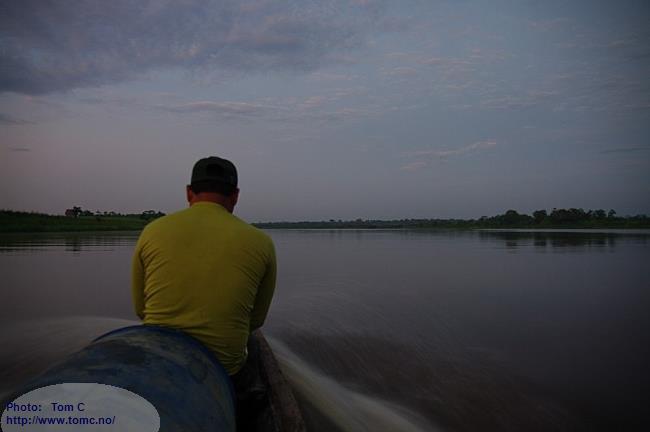
A nice time of the day, not too hot, as the sun was not yet up:
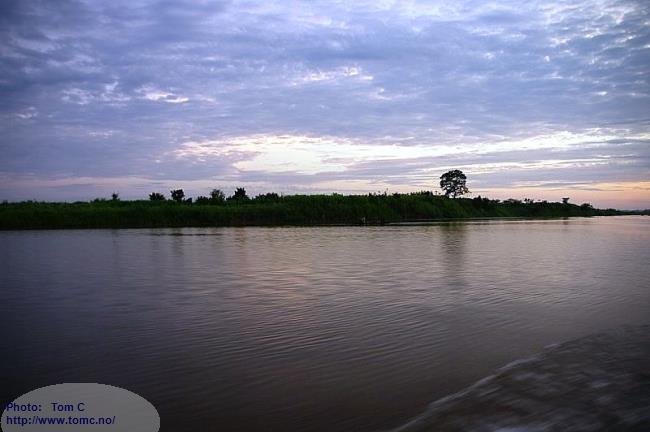
Lots of migrating birds in the morning:
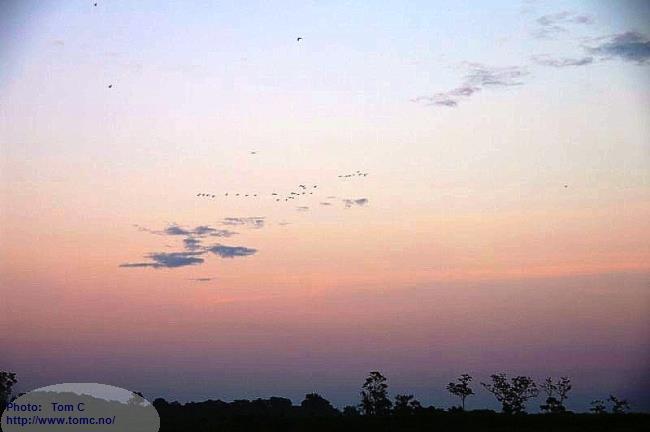
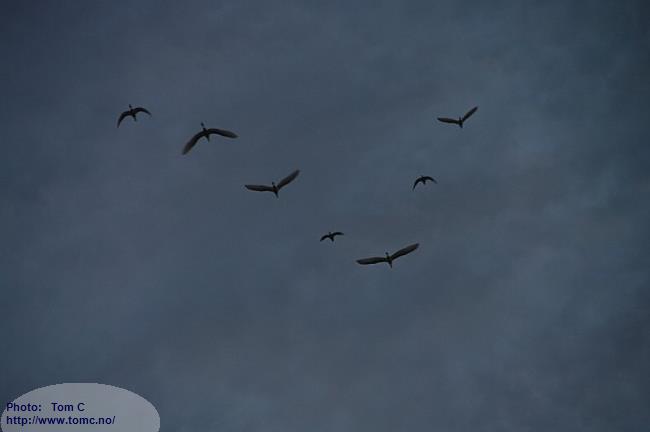
We entered the Río Tapiche:
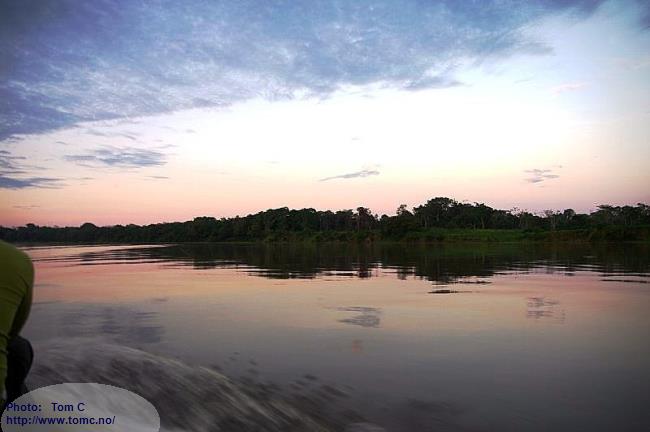
A breathtaking luxuriant river:
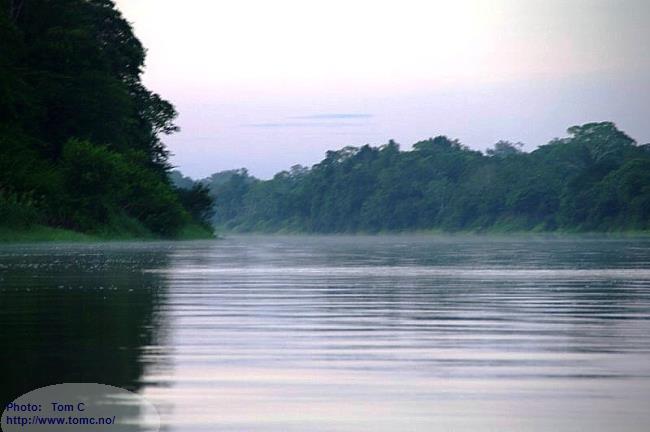
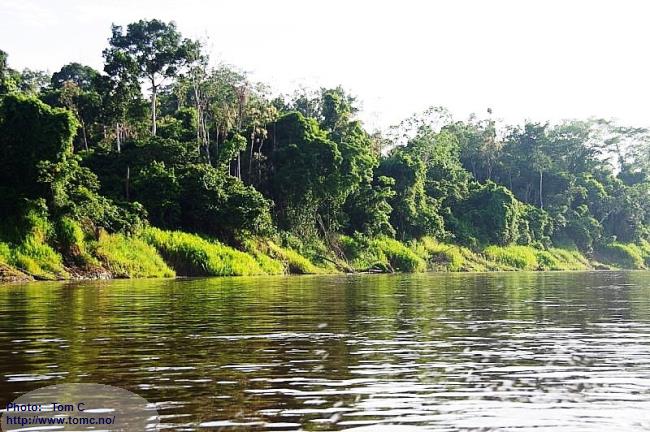
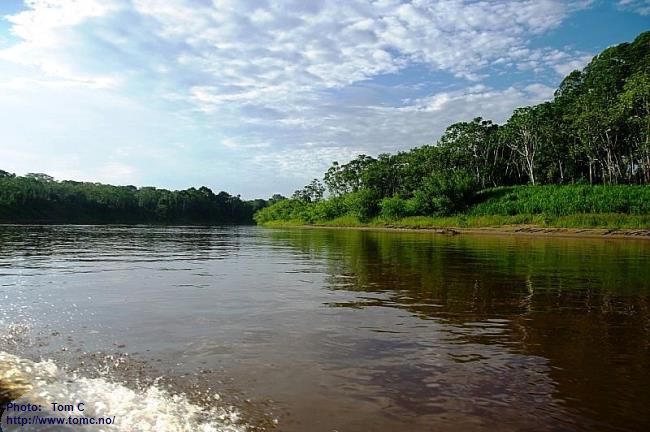
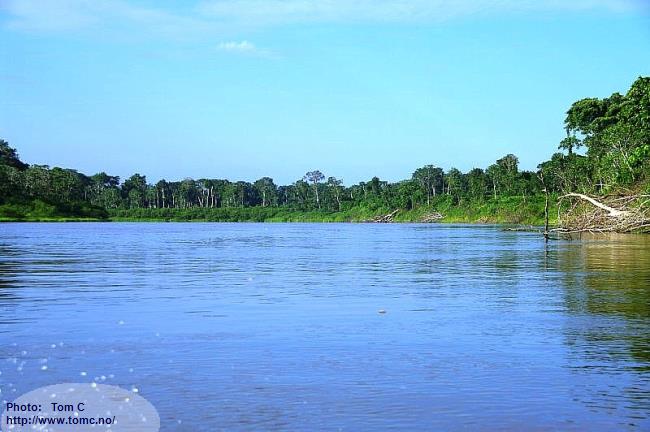
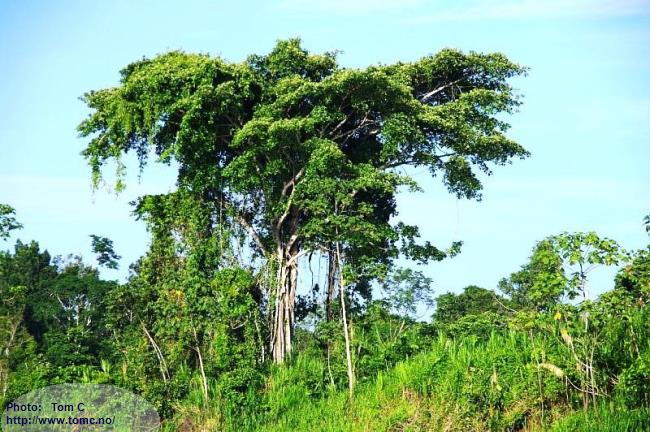
The everywhere seen Black-collared hawk, Busarellus nigricollis, was here too:
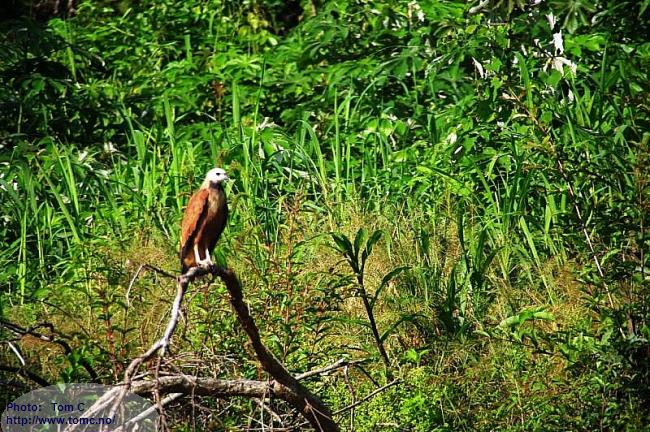
and Herons:
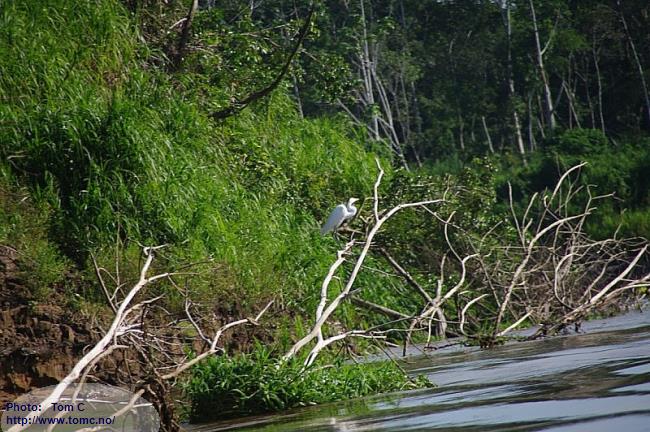
Local people live sparsely along the river:
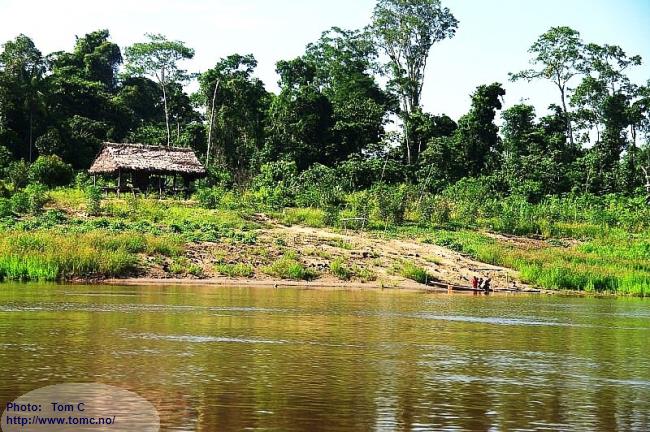
Several other birds of pray could be spotted along the shores:
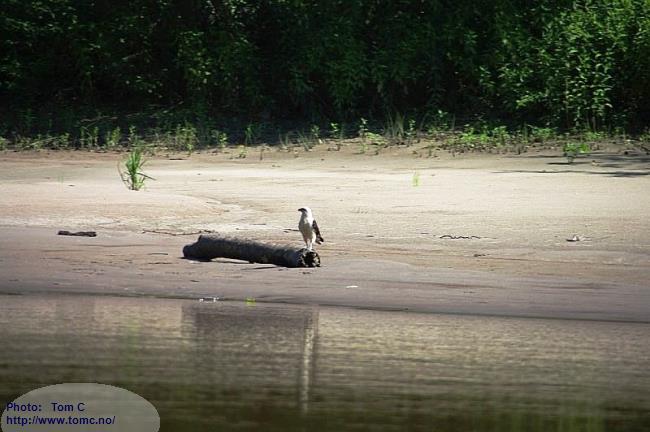
After many hours in the boat:
The only stop we made between Requena and Santa Elena.
(I have no idea who that strange Welsh(?) lady with the hat is. Maybe Mark knows.....)
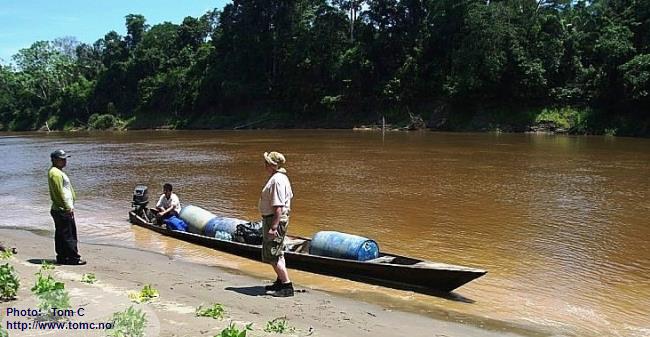
The small village "Nueva Esperanza":
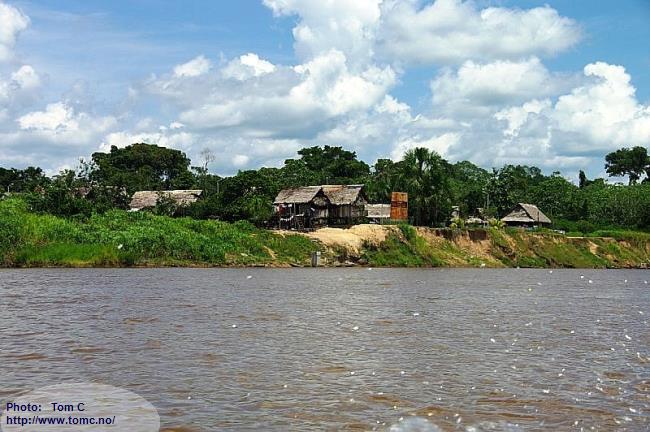
They have a campaigne against the widespread illiteracy:
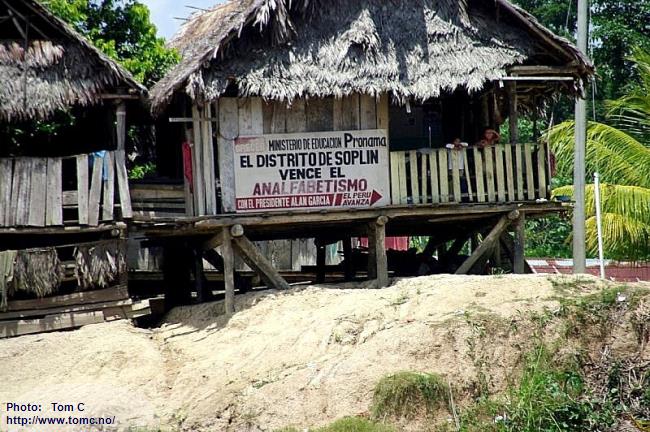
Just after we passed this village, we arrived at the point where the Río Blanco
meets the Río Tapiche:
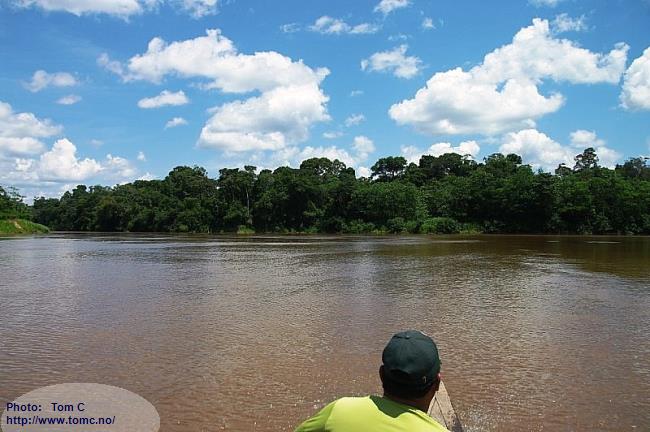
The Río Blanco comes down from the left, the Río Tapiche from the right.
Amazingly, the Río Blanco (which means "the white river") is a black-water river, while the Río Tapiche mainly is a white-water river,
but in parts more or less influenced by black-water.
We turned right, up the Río Tapiche:
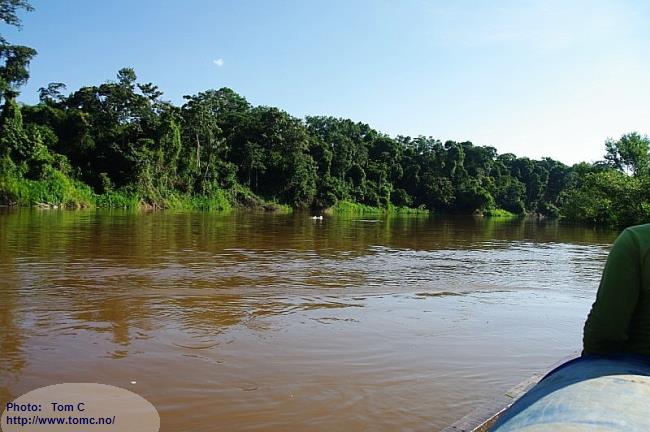
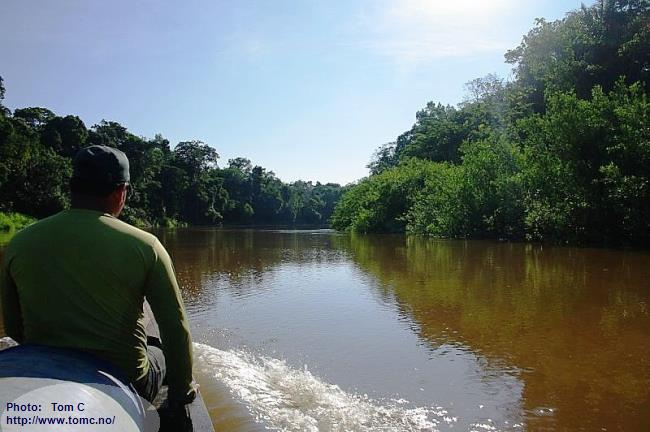
Our driver.
The water was very low, and branches and trees in the water forced him to drive quite slow.
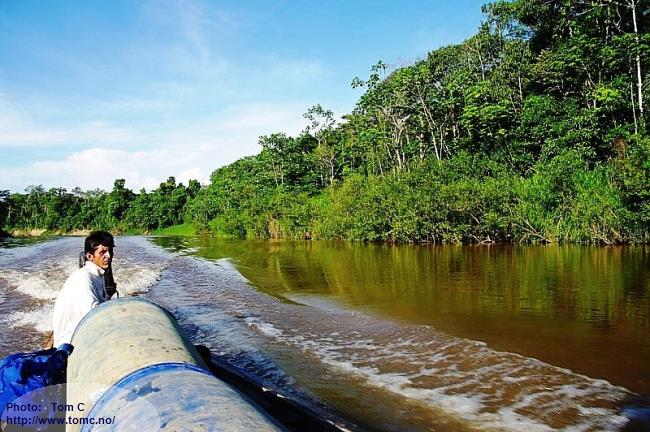
Our trip from Requena to Santa Elena, which was estimated a 10 - 12 hours trip, lasted more than 19 hours, sitting in the boat.
The last 6 hours in complete darkness.
Pictures from this part of the river:
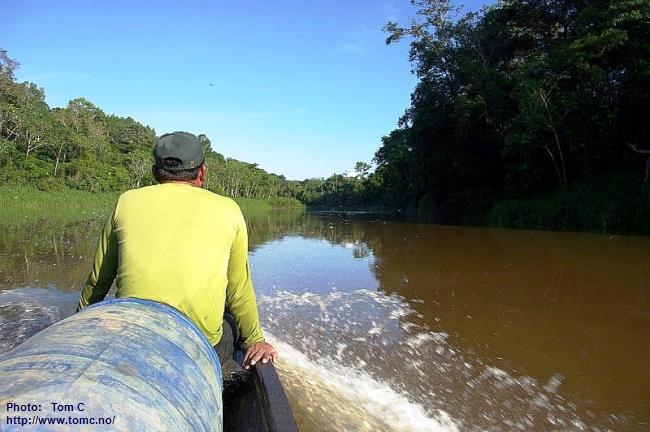
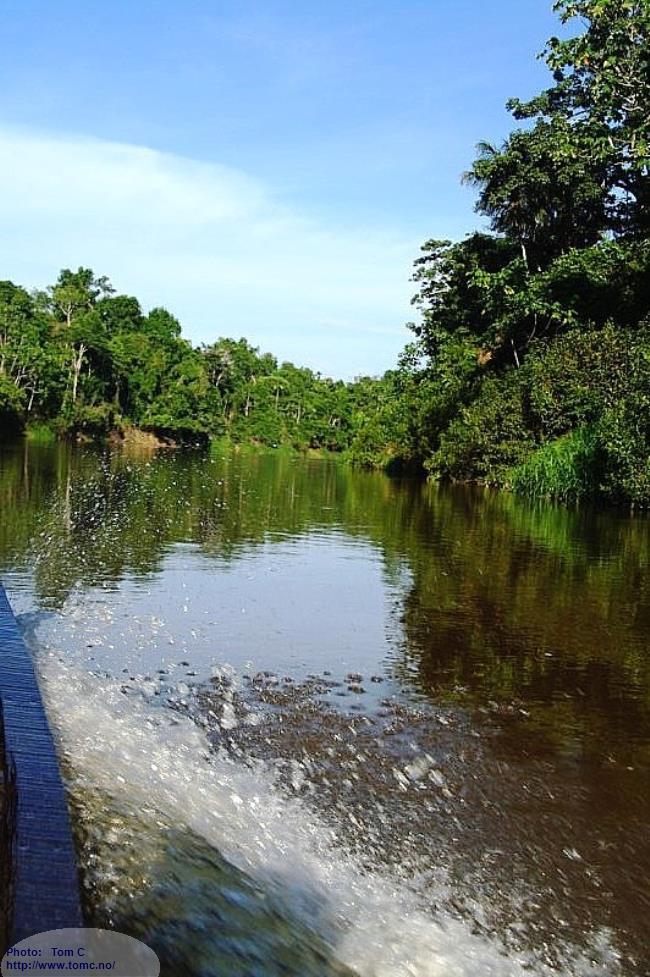

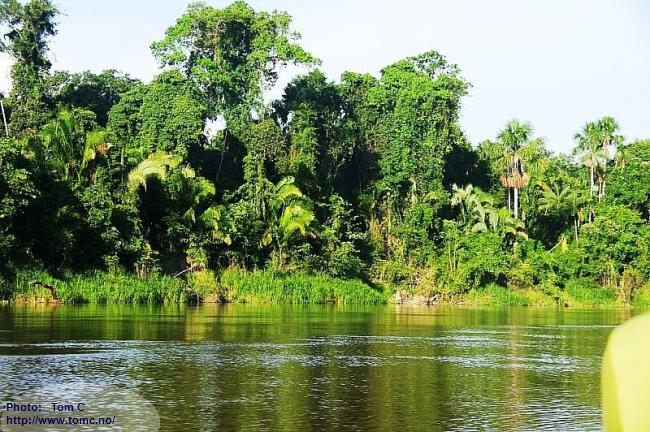
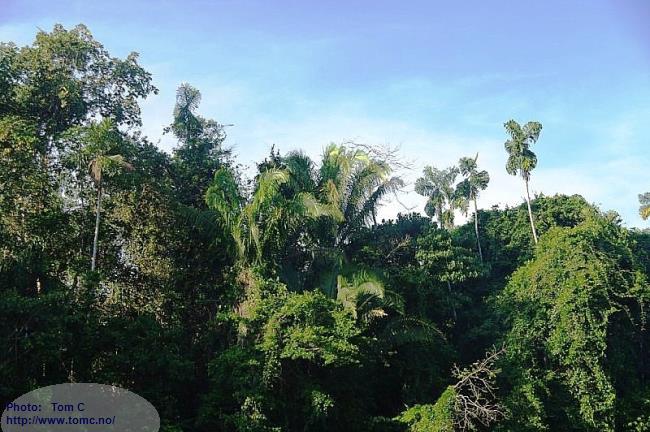
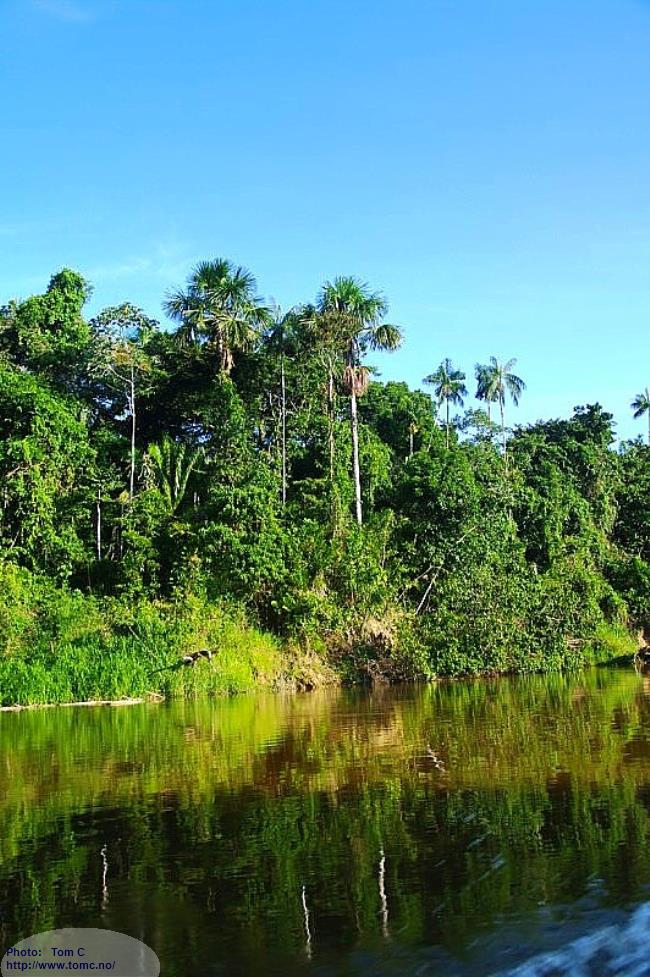
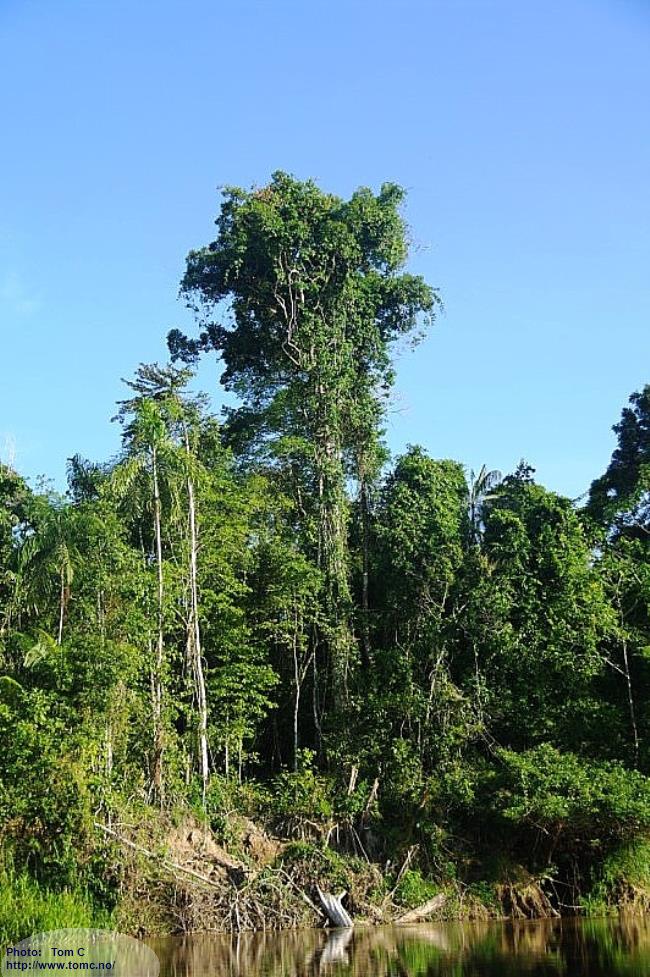
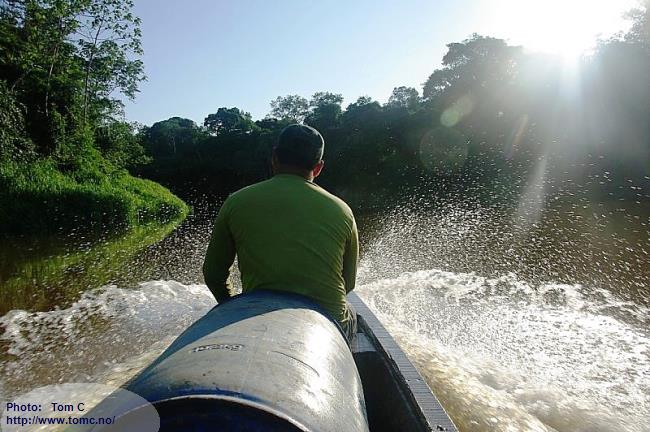
We arrived Santa Elena at 00:30 (after more than 19 hours in the boat). After waiting and searching for the owner of the "hotel" in
complete darkness, we at last got rooms at 02:00 am., and could sleep a few hours.
Next morning we woke up at 06:00 am.:
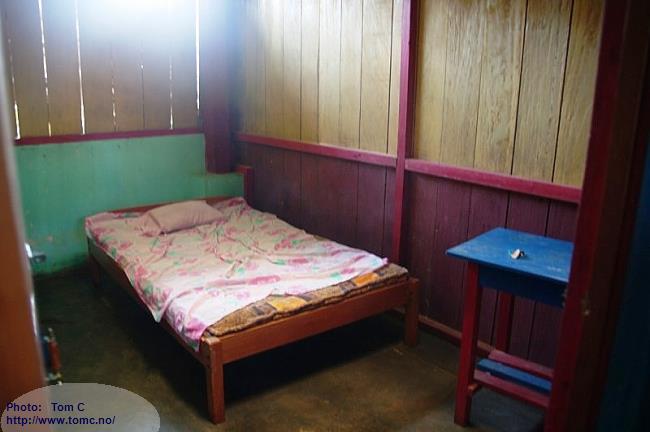
The desk:
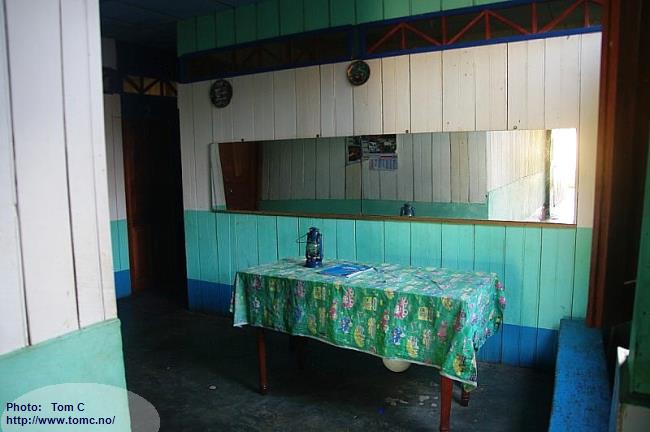
Mark is leaving the "hotel" at 06:30 in the morning
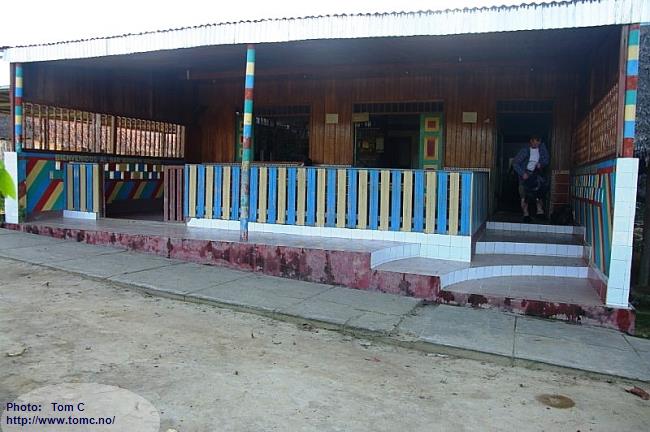
Some of the children were already out, waiting for the school to begin:
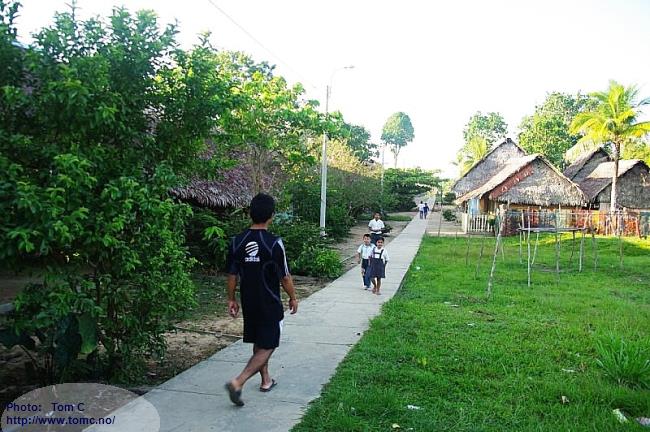
We all had some luggage, Mark too:
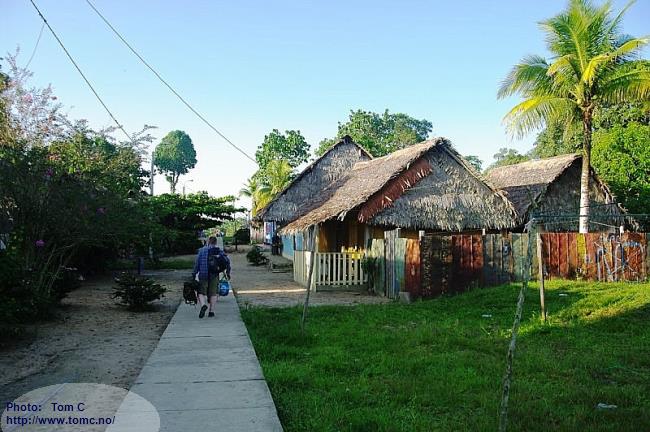
We had to register and show our passports to the local police:
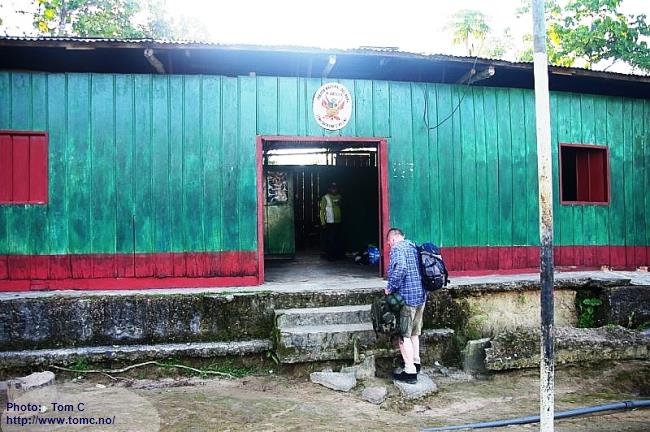
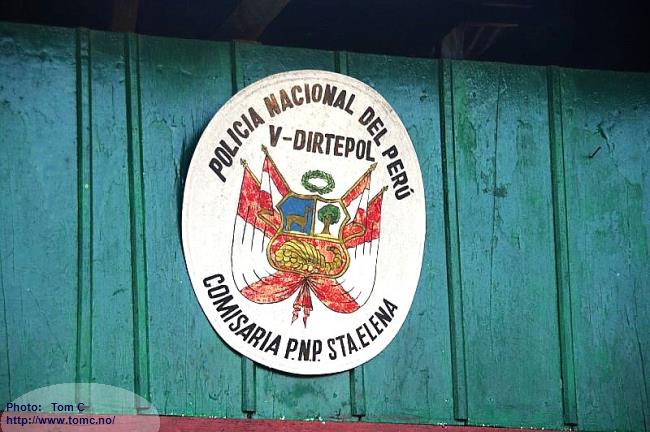
It was a wonderful morning in Santa Elena:
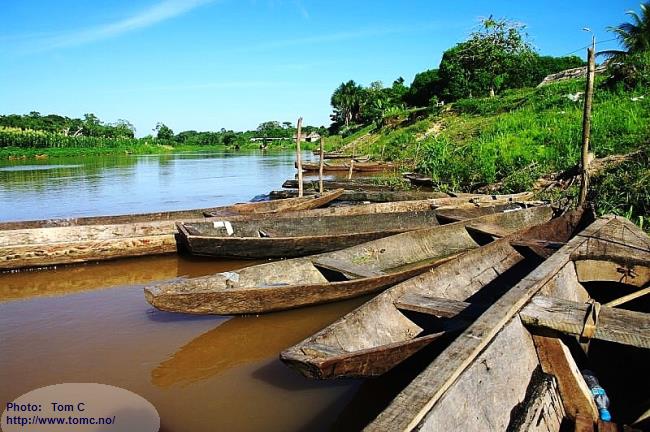
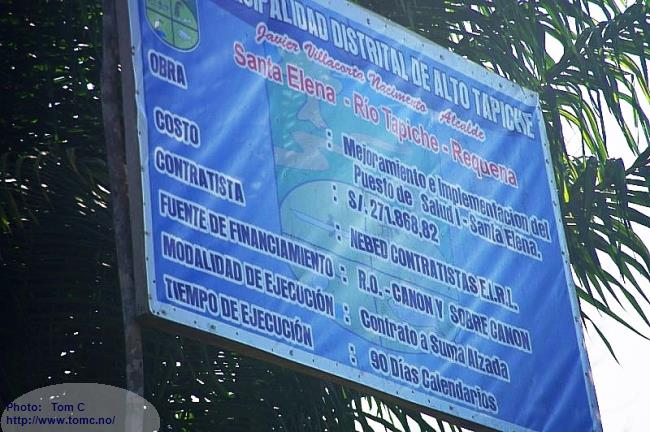
After more than 19 hours in the boat and only 3,5 hours of sleep, we were back in the boat, left
Santa Elena, and headed towards virginal areas, at 08:00 am.:
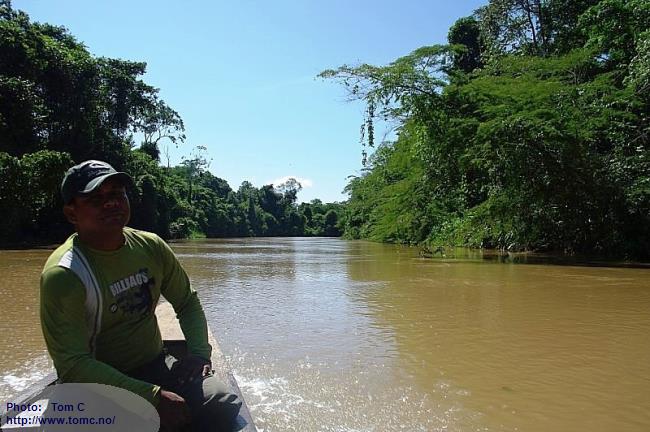
Amazing nature:
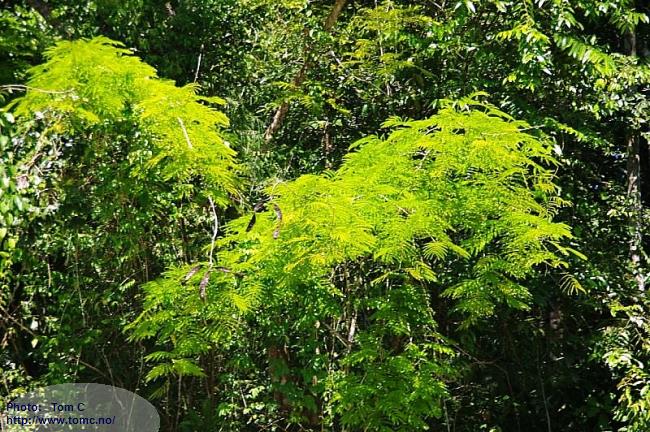
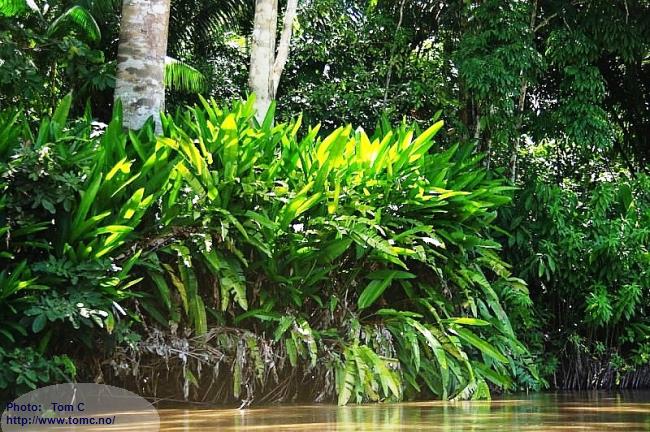
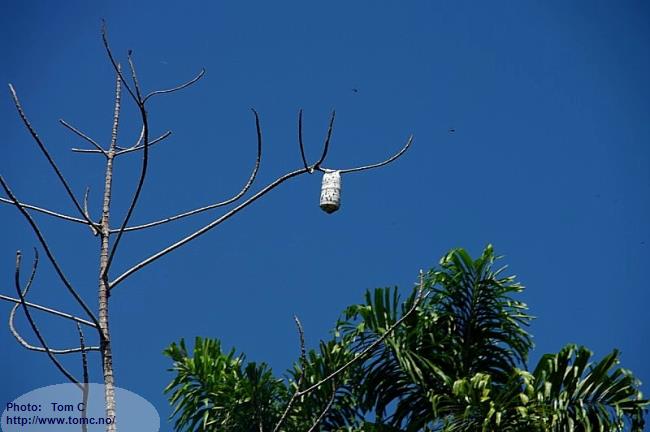
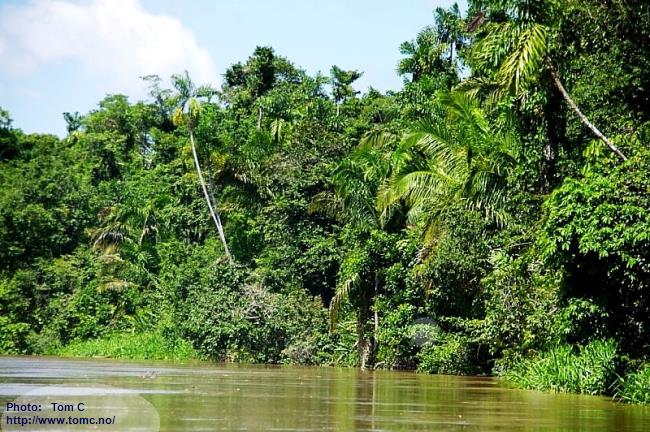
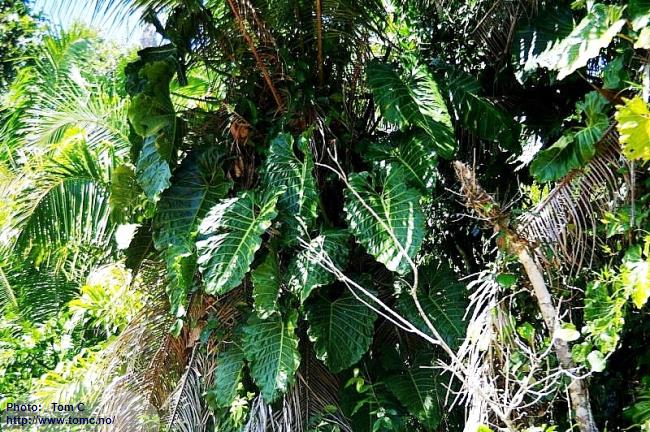
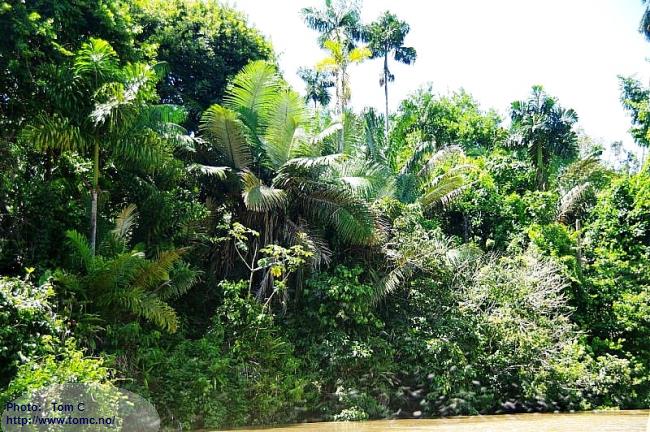
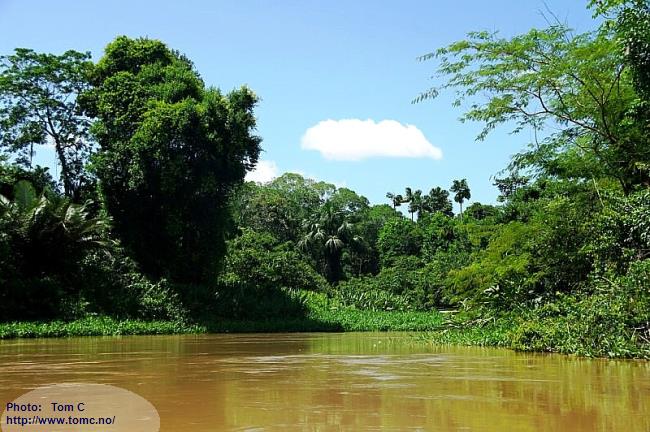
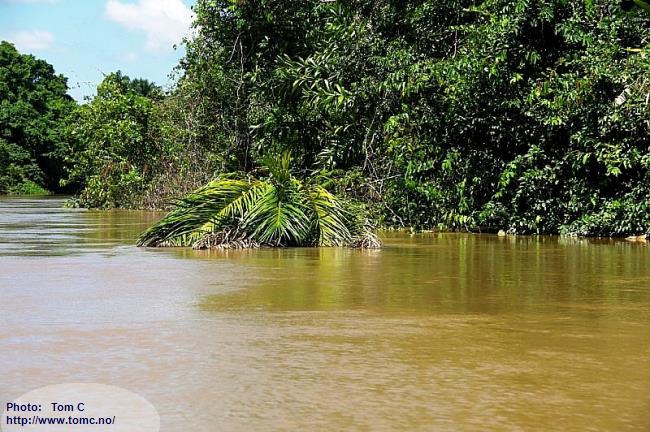
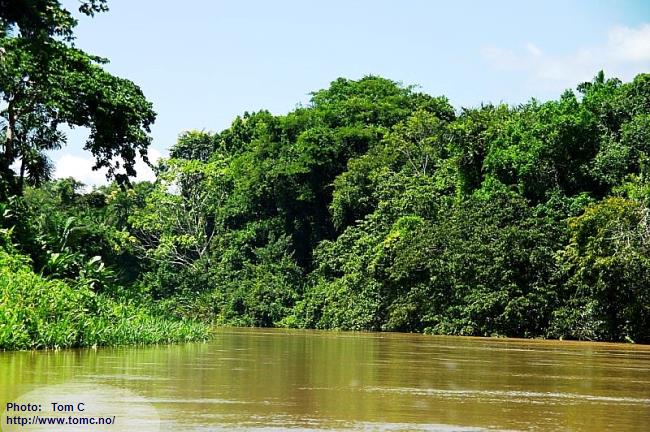
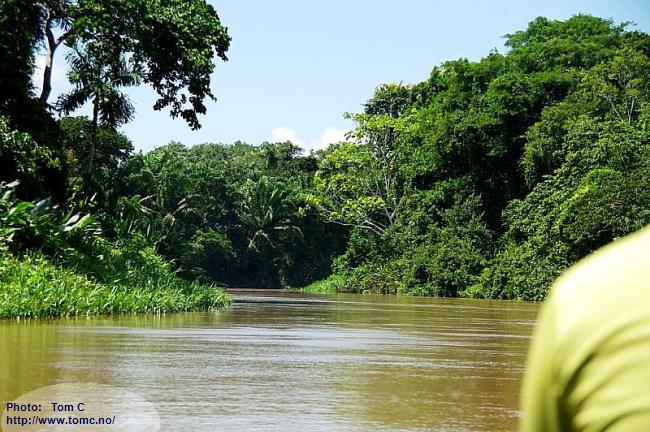
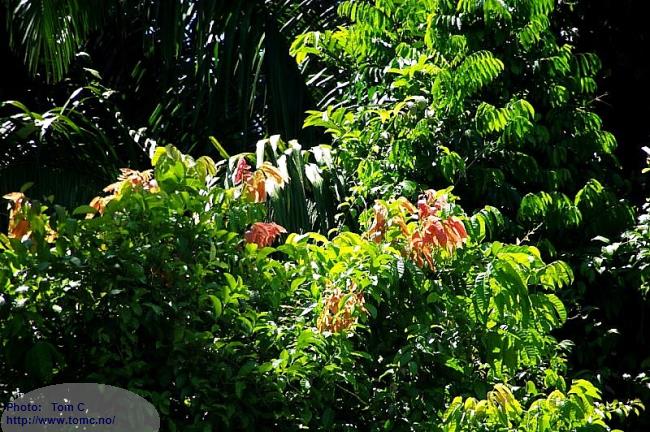
Not all the trees will survive another season:
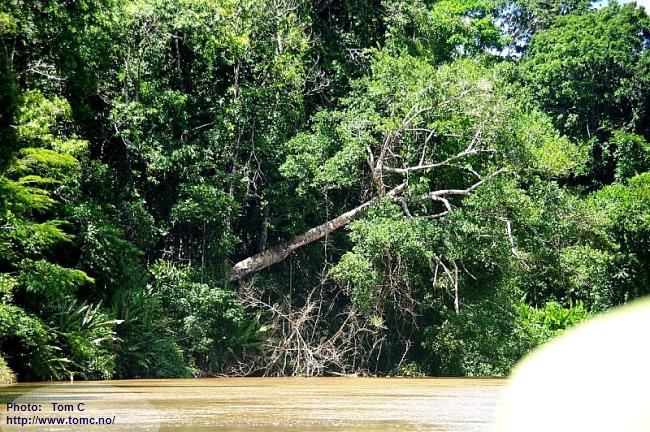
Birds' nests:
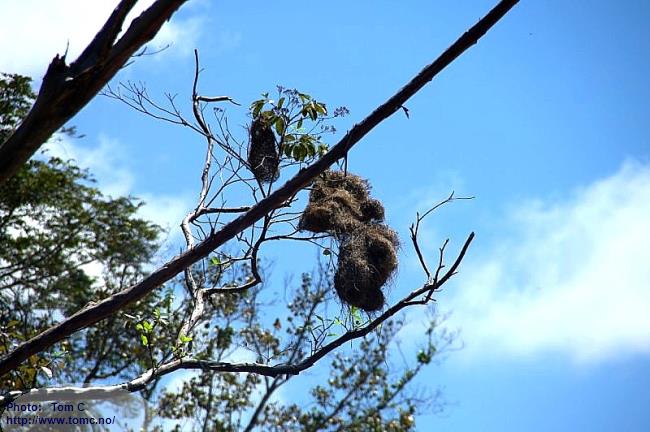
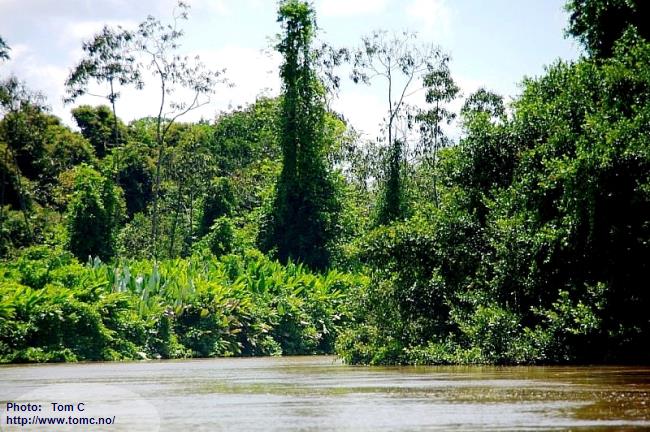
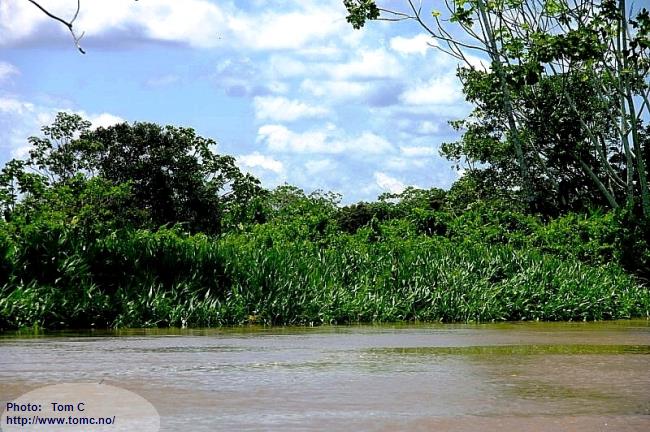
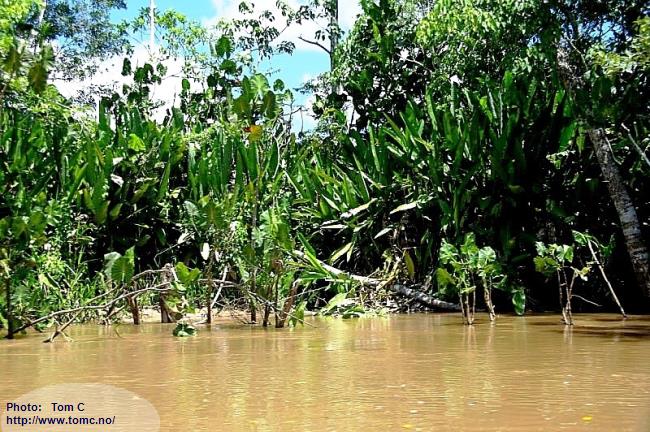
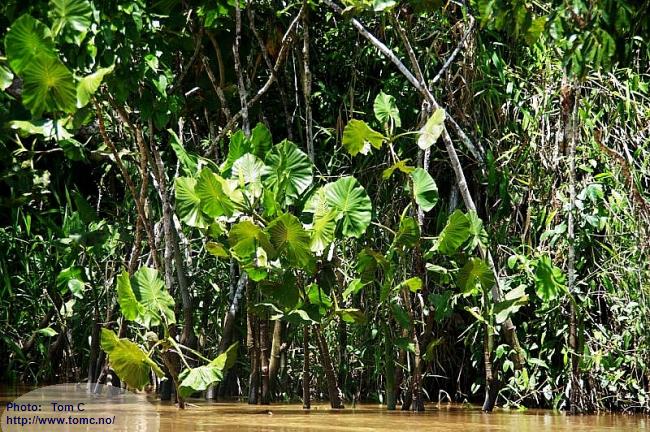
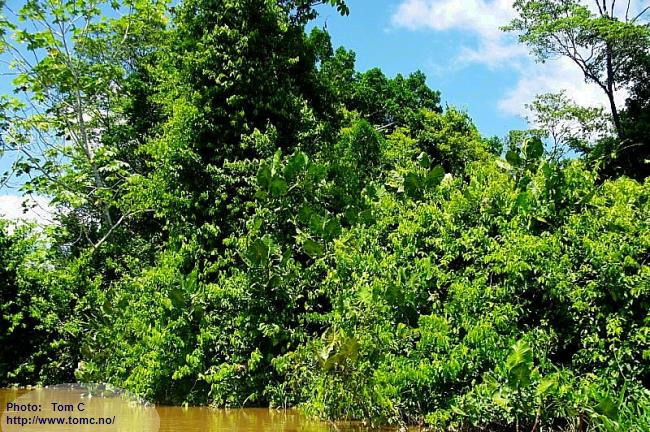
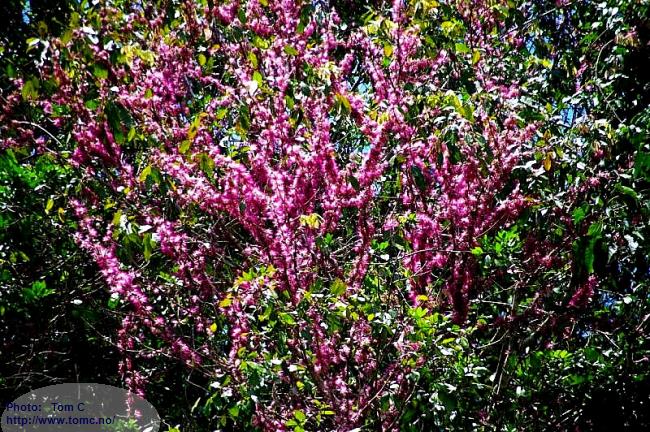
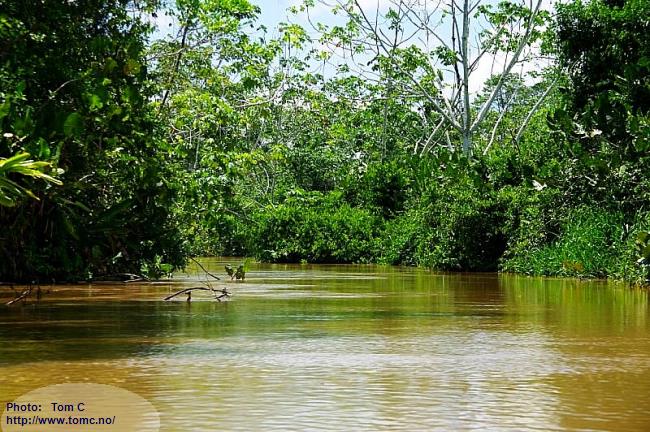
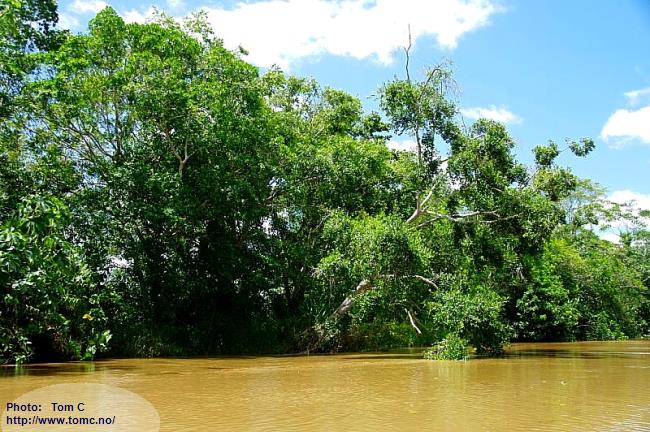
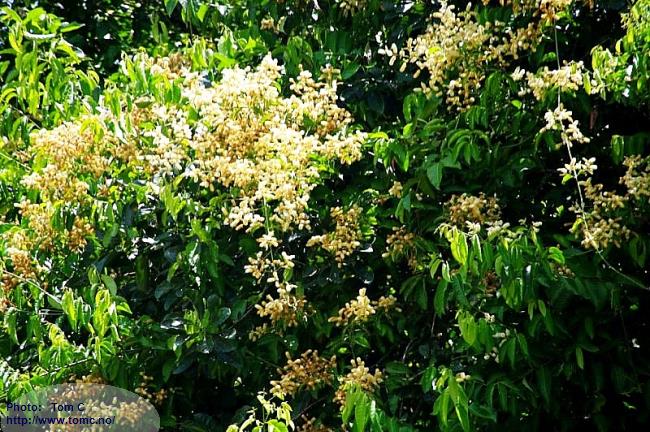
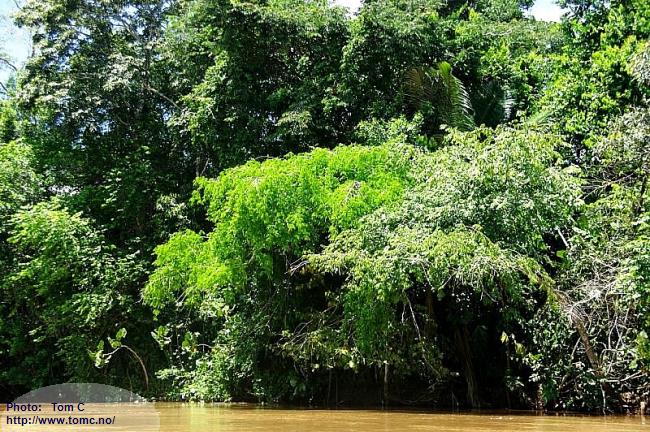
Here the water was strongly influenced by black-water coming from nearby swamps,
where a lot of Arowanas are collected:
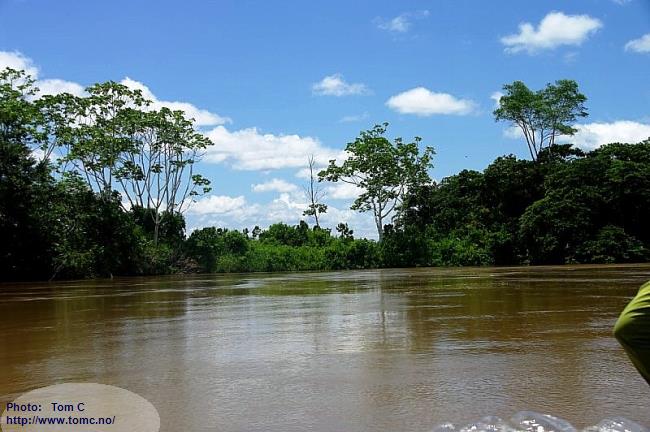
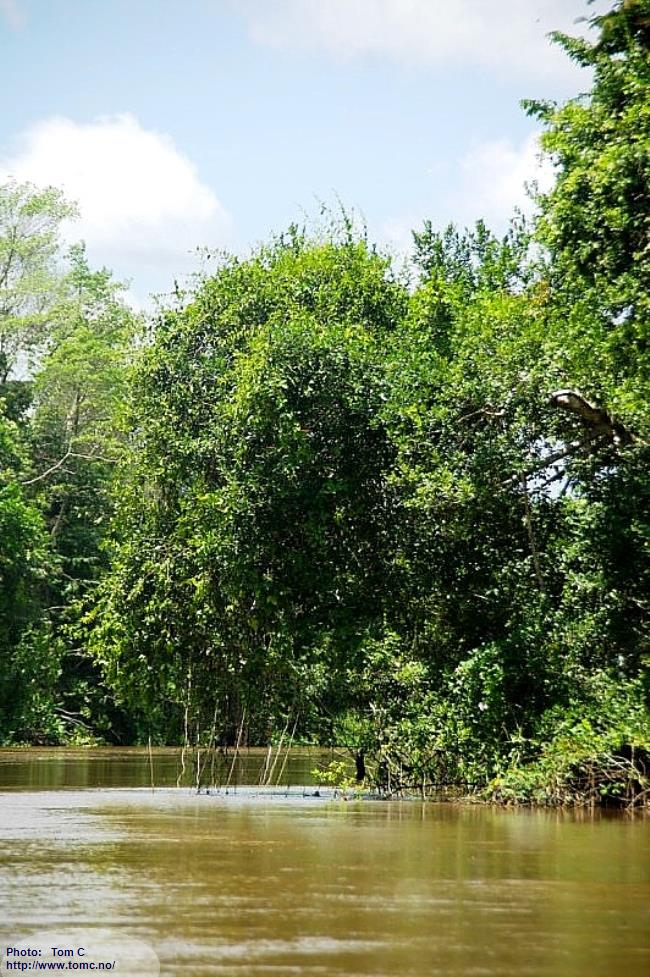
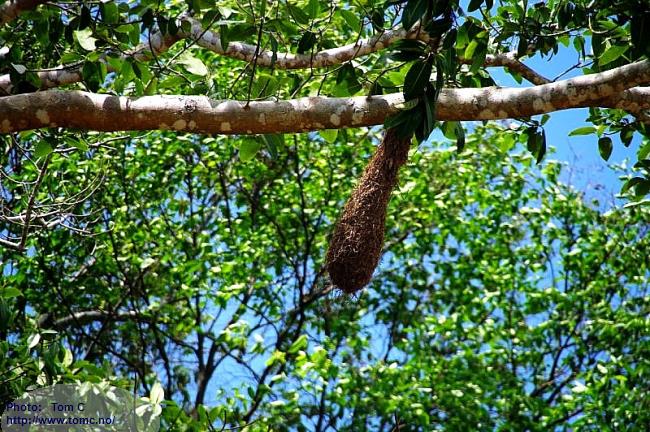
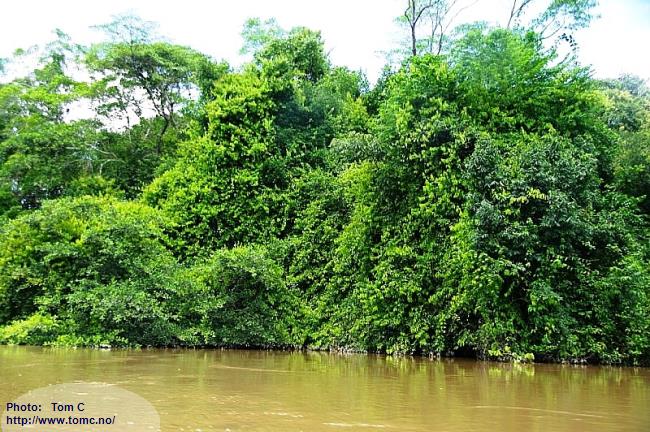
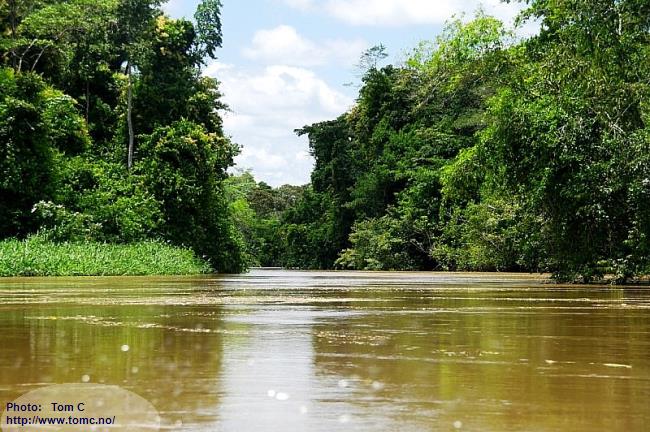
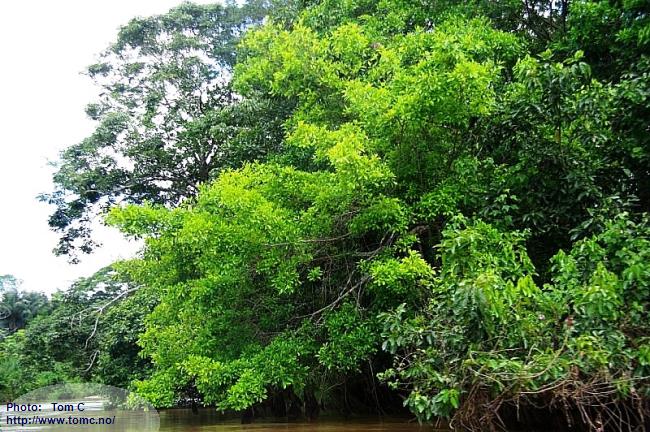
Again black-water coming from nearby swamps, strongly influence the main river
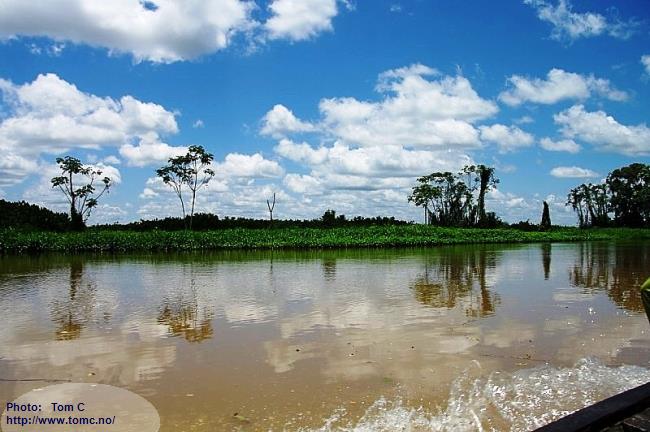
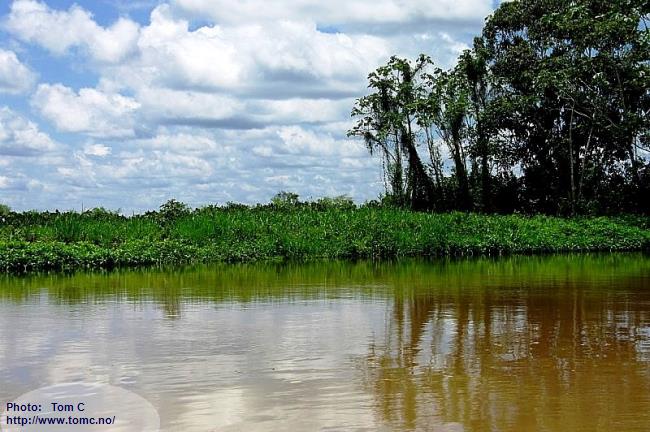
Plants in the genus Heliconia are among my favorites:
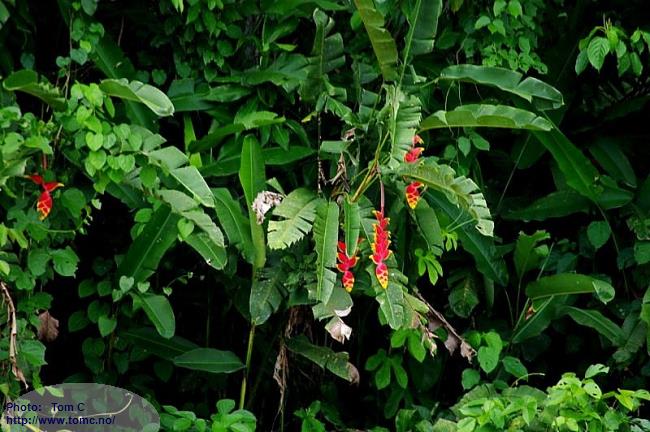
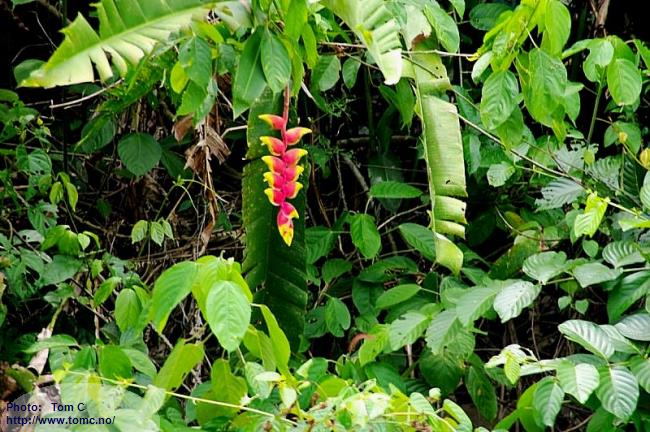
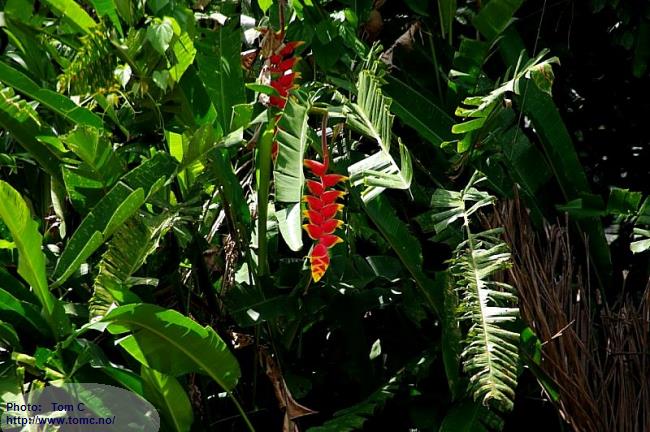
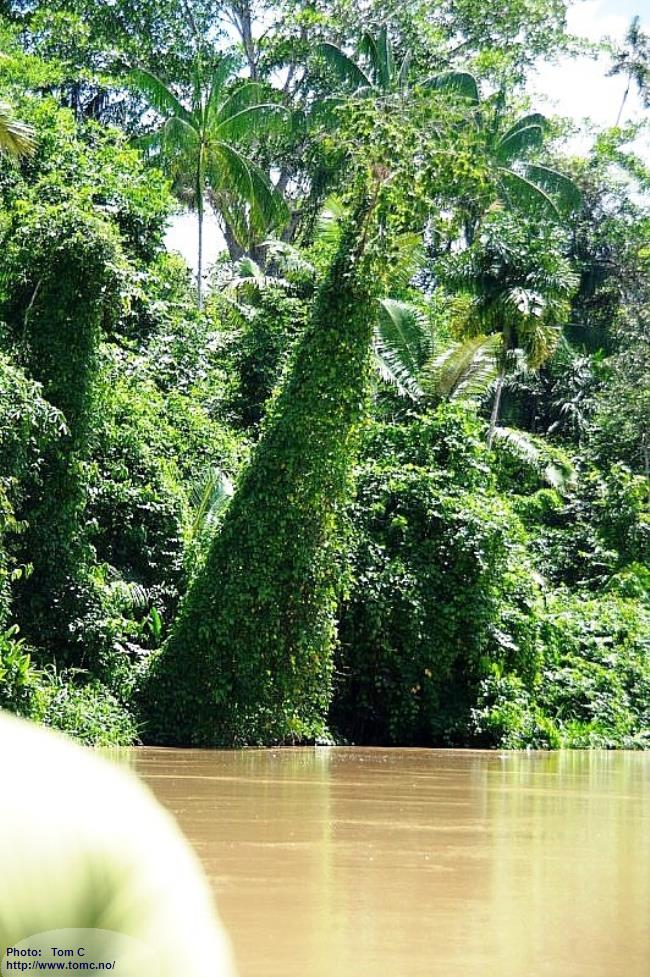
Lots of other flowering plants, too:
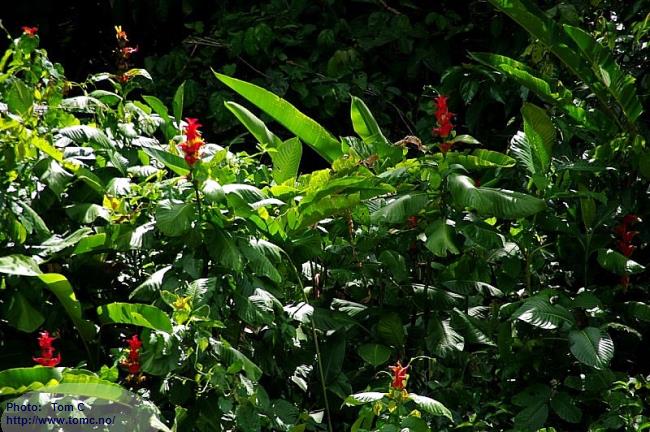
Not a pleasant thought to hit these ones in the dark:
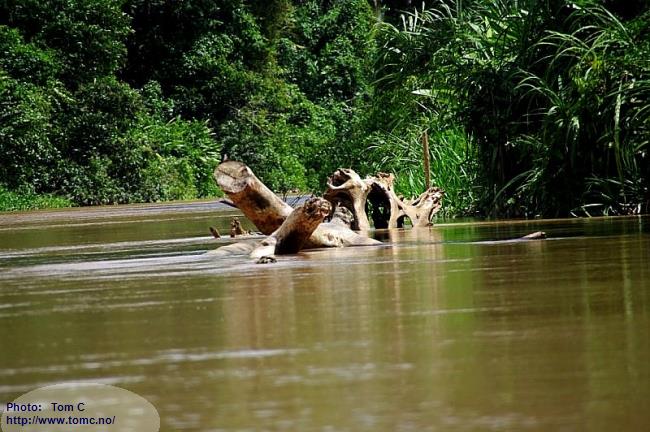
Maneuver carefully.....
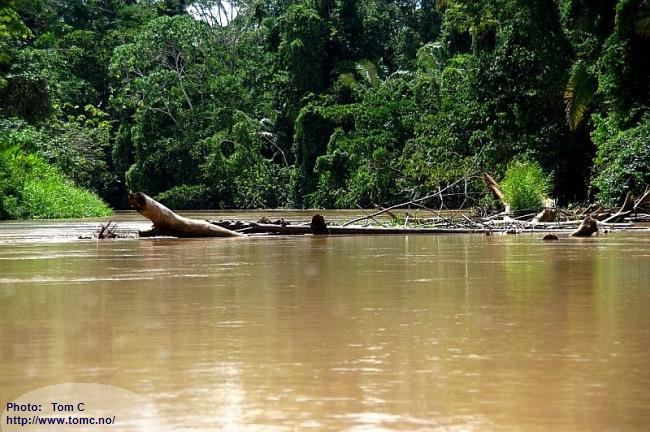
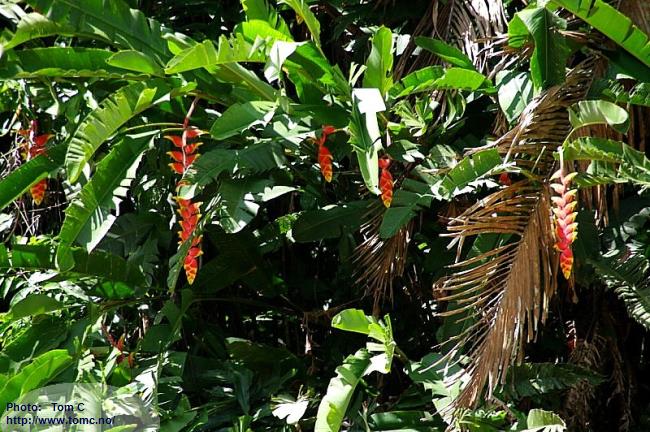
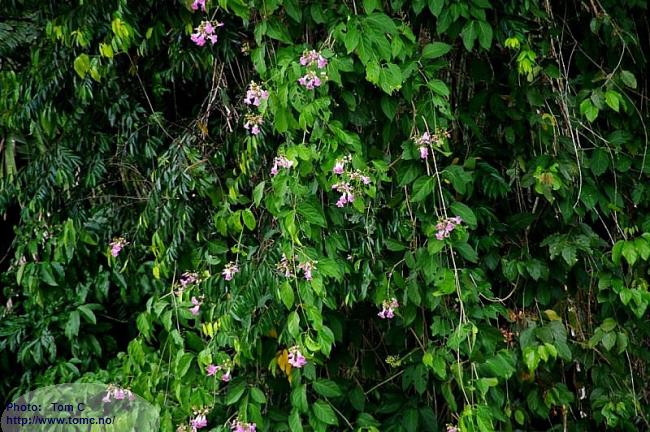
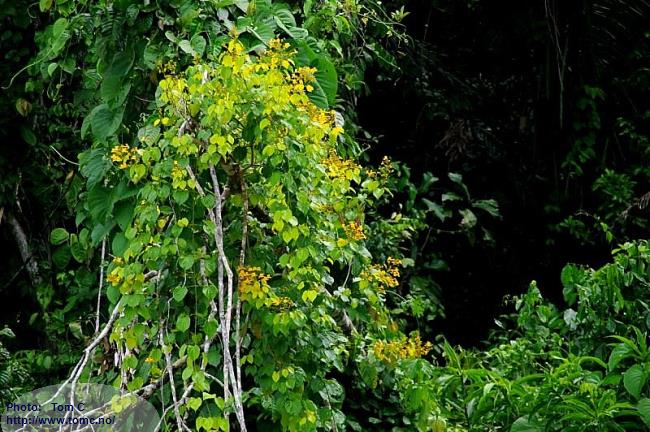
Watch your head!

Smaller birds:
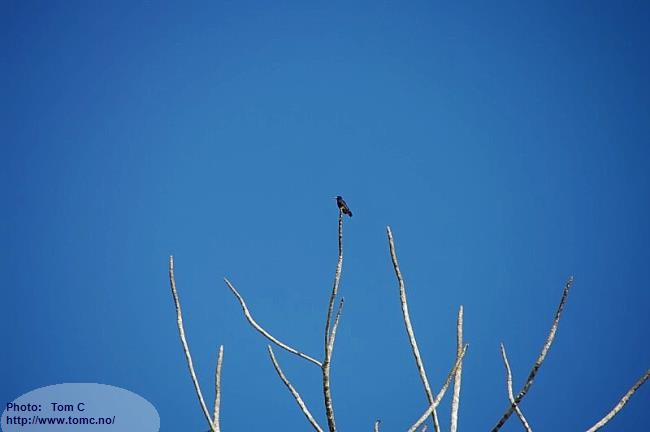
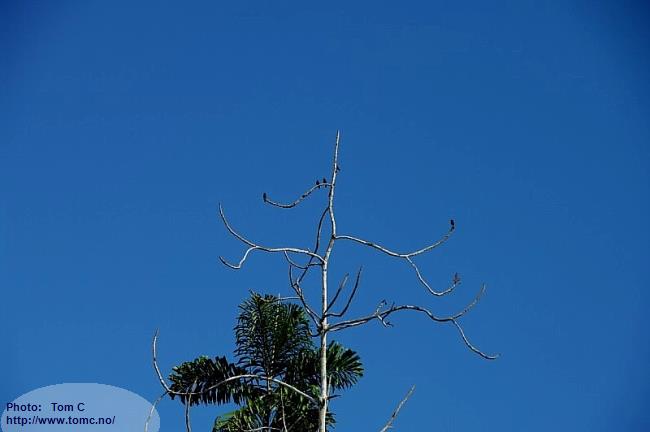
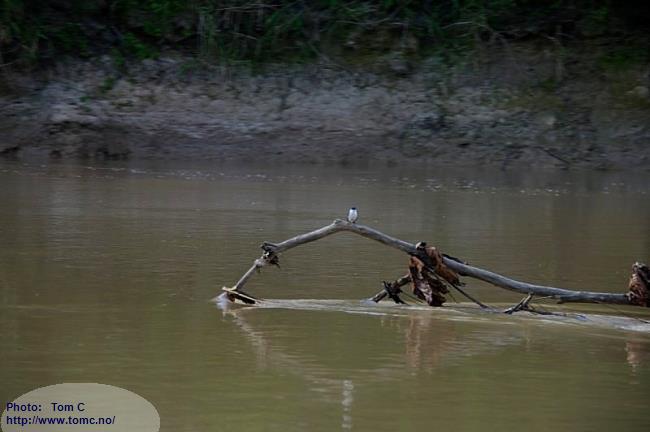
One of the very few local boats we met:
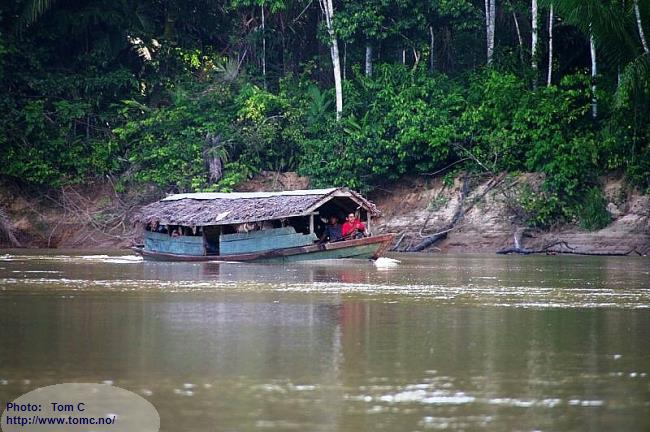
The river banks are constantly eroded, and the trees follow...
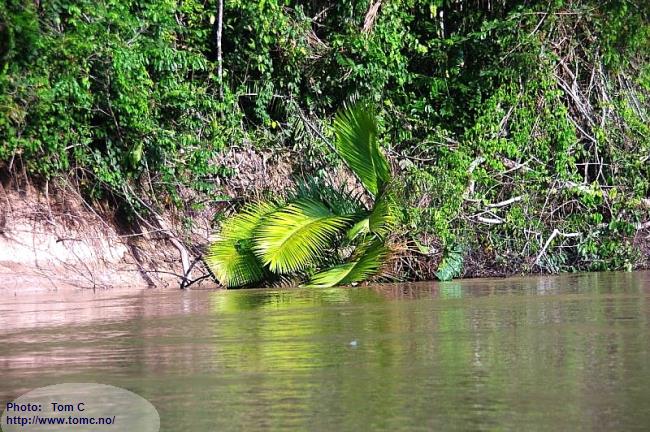
Tall trees
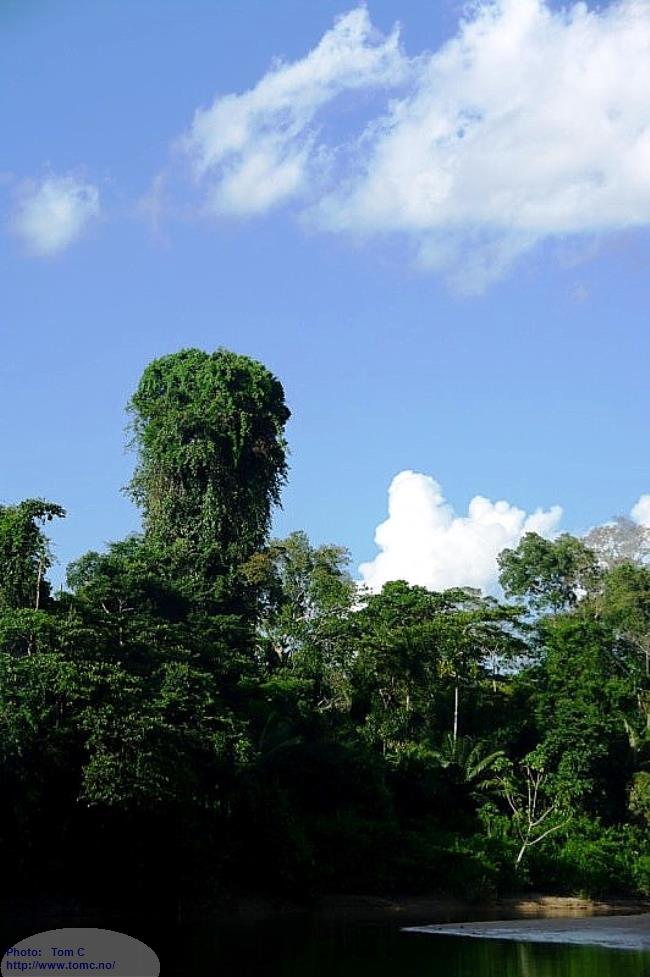
and wading birds:
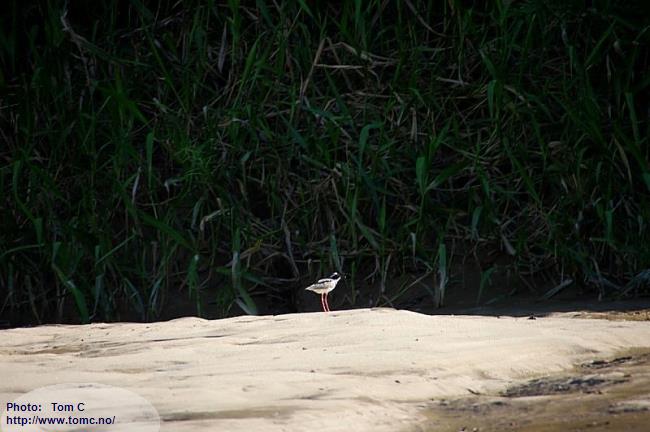
After more than 8 hours from Santa Elena, we at last reached the village where we
were going to spend the next days:
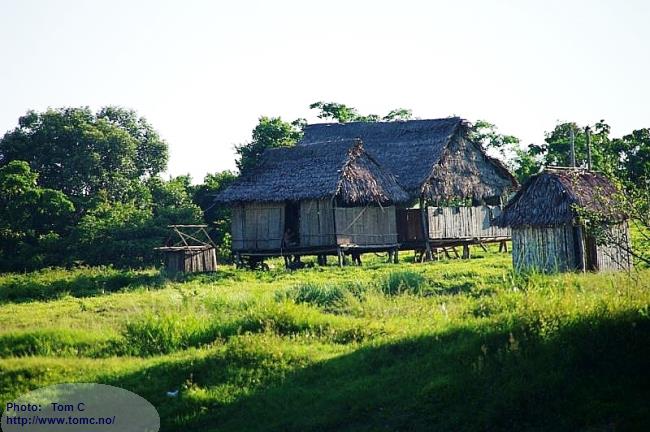
We were lodged in the house of the chief of the village.
The locals carried all our gasoline up to and under the house.
(If left in the boat, it might have been stolen by passersby)
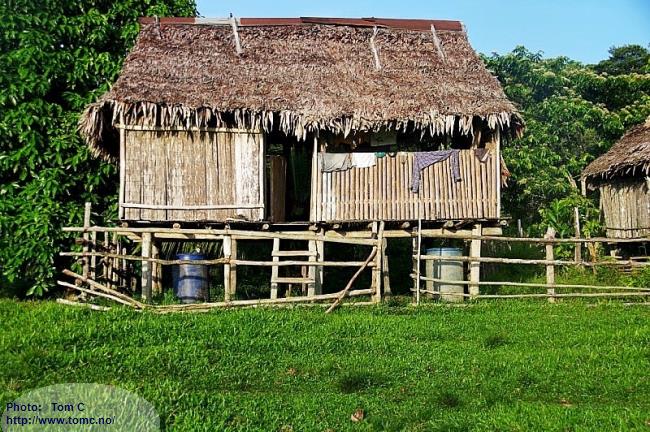
The house from the back, with our mosquito-nets and hammocks:
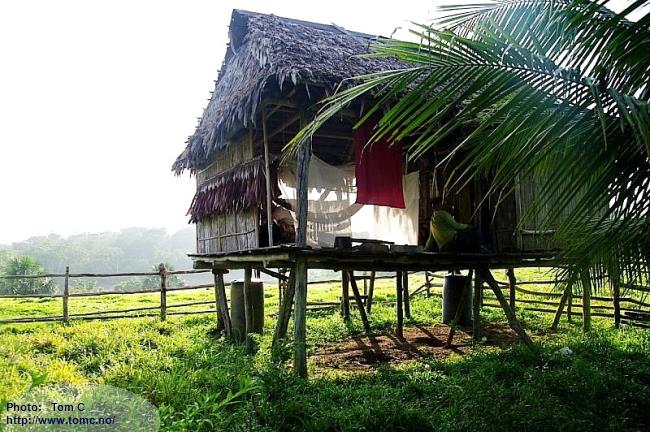
The well seasoned and cultured traveller in a hammock for the first time:
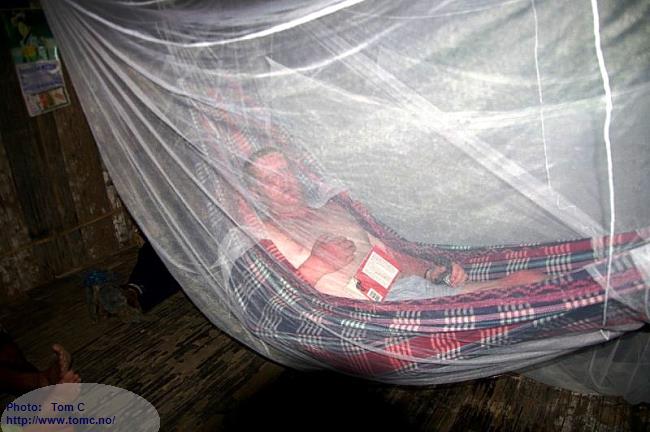
At last, the next morning, at 07:45, out in the jungle!
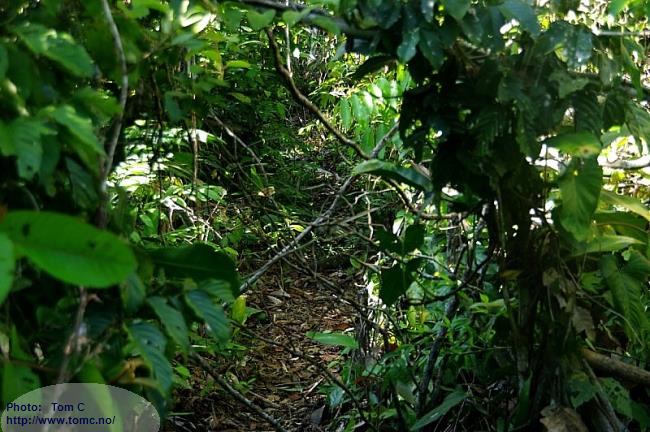
After 30 minutes walking: Our first stream to search for fish:
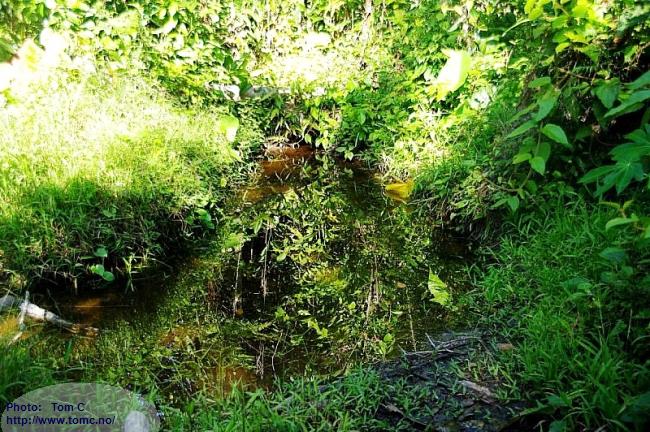
The water:
pH: 5.06
Conductivity: 8 microSiemens/cm
Temperature: 25.6 °C
We found a few fish:
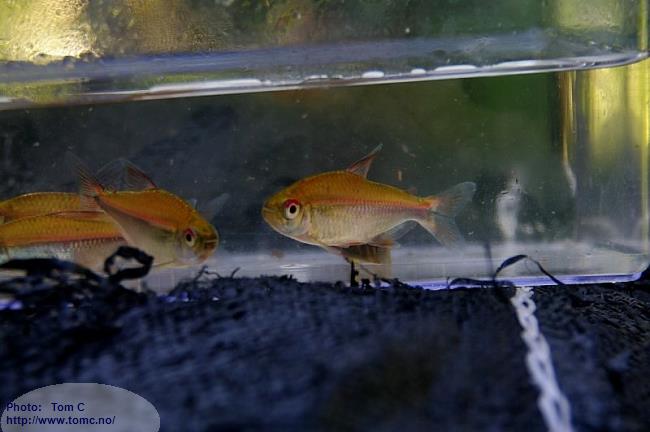
Only one Apistogramma (female), but it looked like the "right" species!
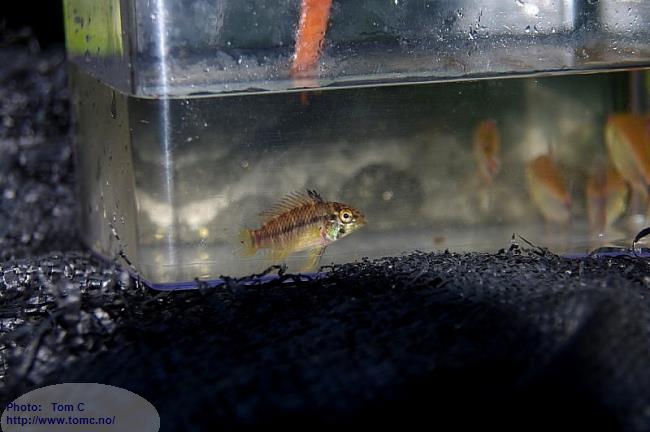
During the next hours we searched many small "quebradas":
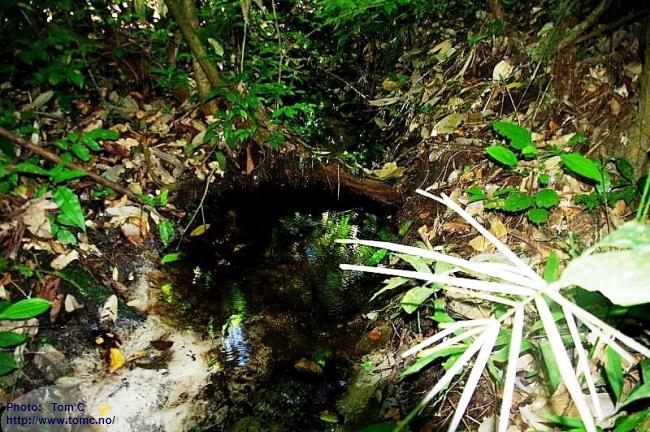
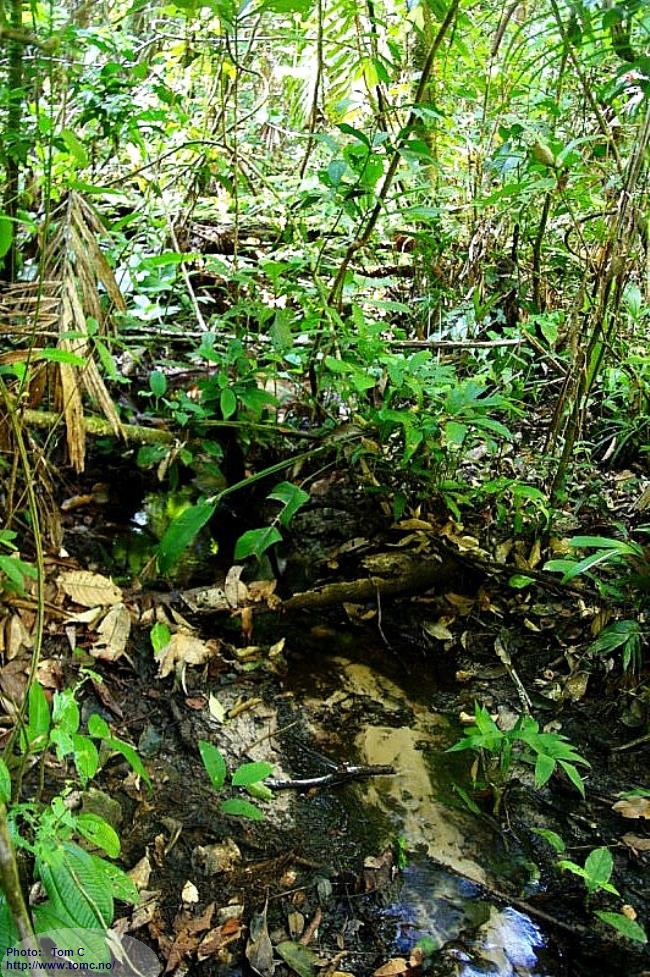
In every stream, the ground consisted of very fine whitish sand.....
(Keep that in mind when you set up tanks for Apistogramma!)
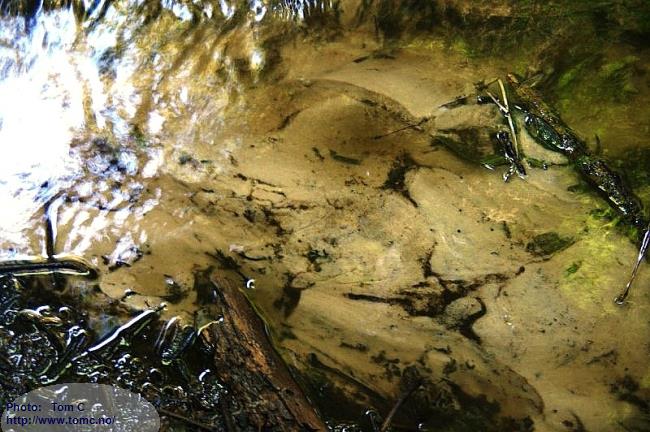
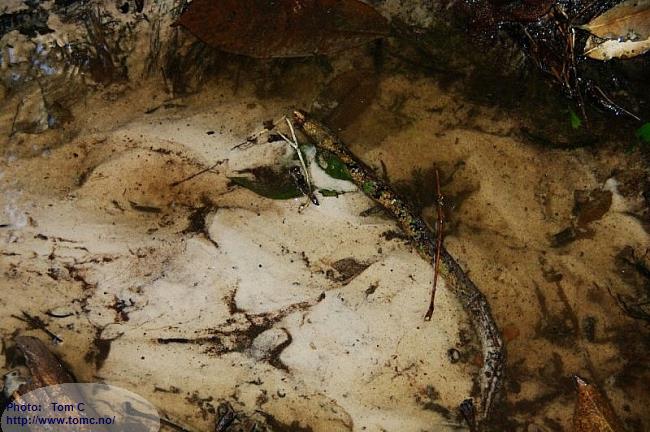
and we walked /climbed and struggled our way through the dense jungle,
in temperatures around 35 °C, for hours:
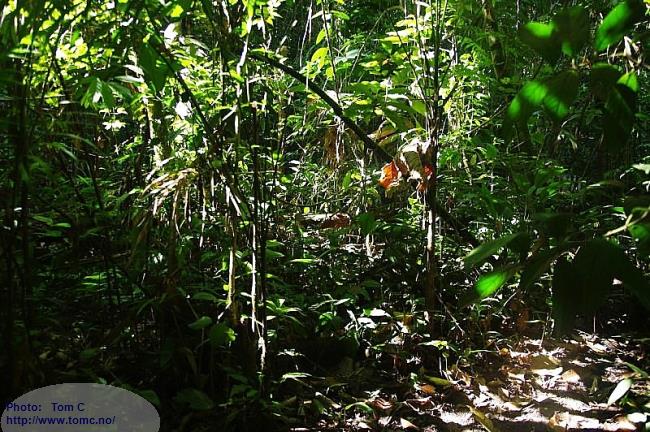
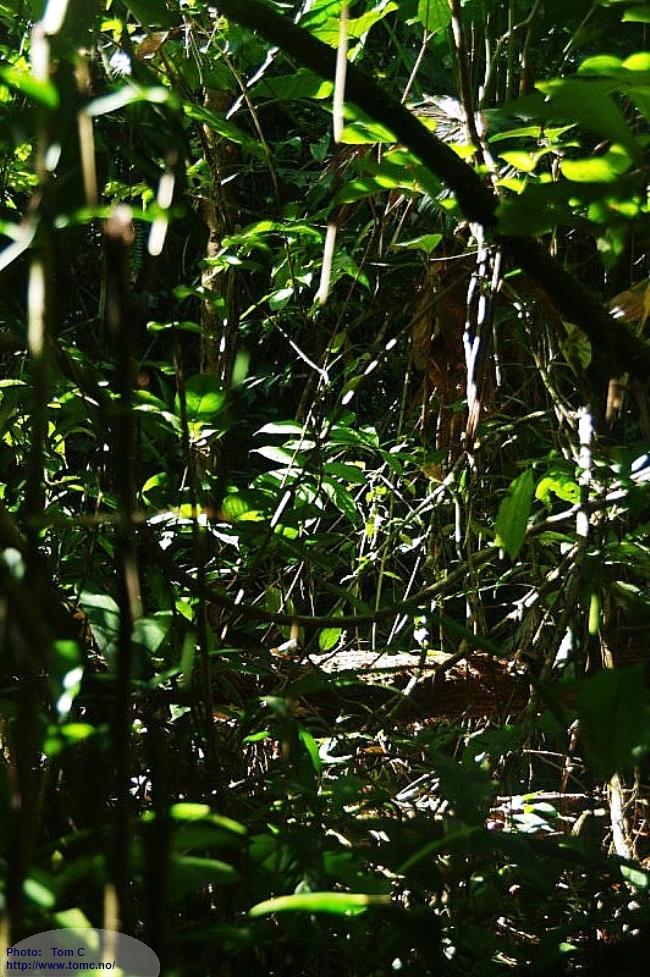
A miniature frog came our way:
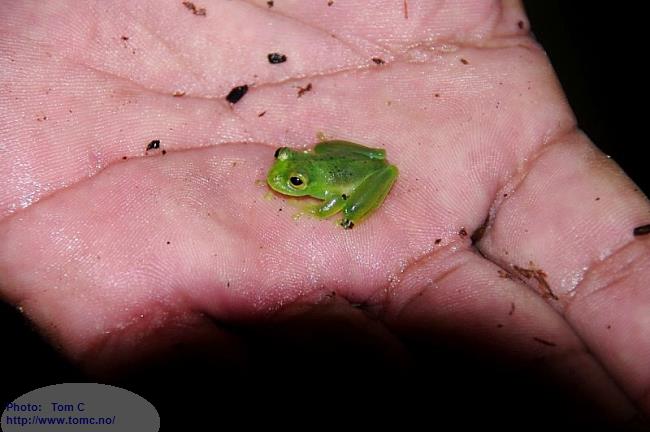
And more walking and climbing:
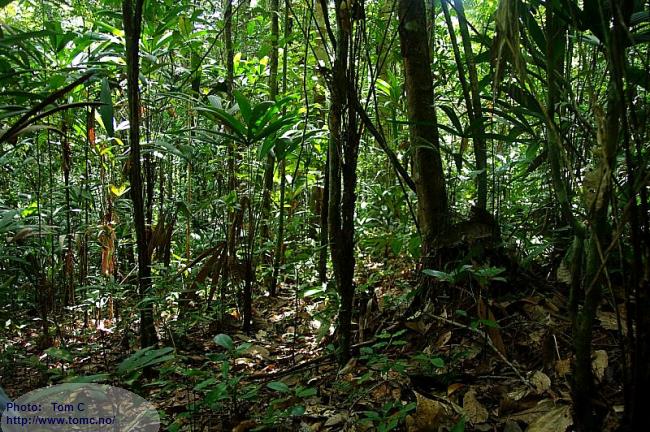
Our local guide found it quite amusing every time we, the gringos, had to take a rest:
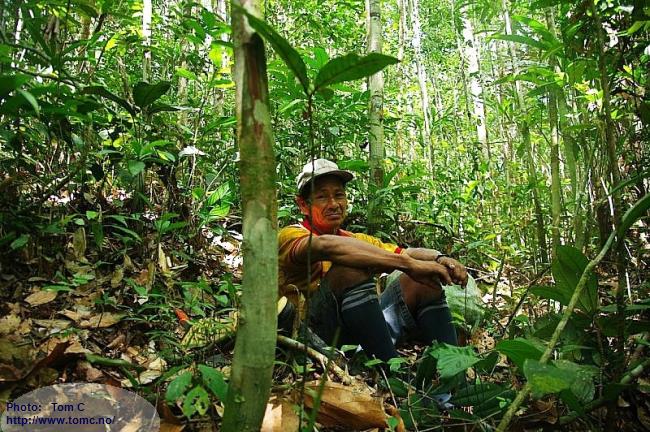
And every time we sat down for a couple of minutes, fellows like this were all over us:
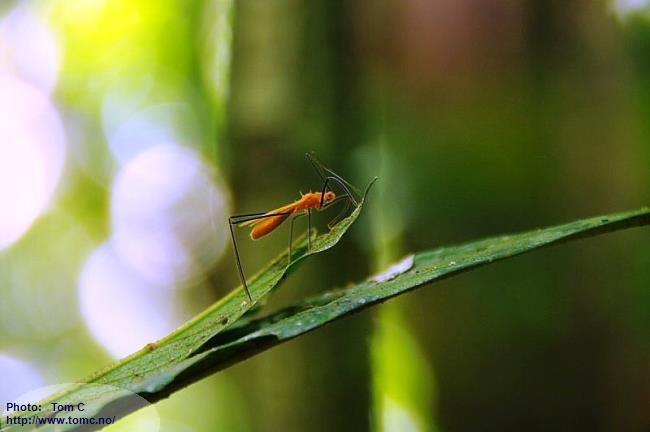
together with it's friends:
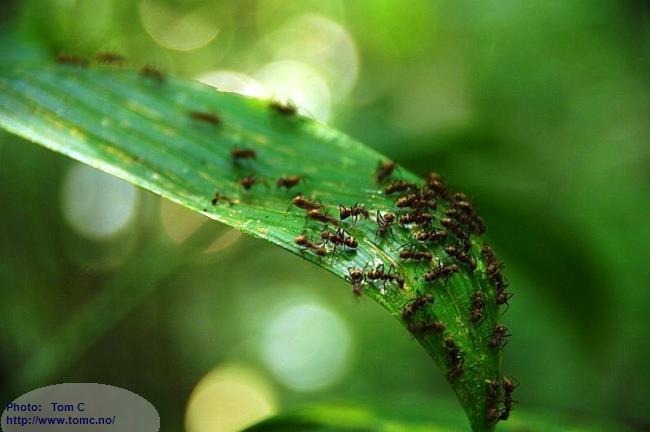
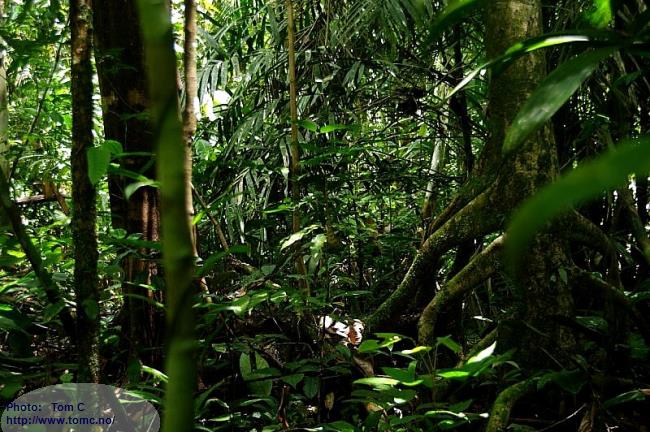
We met a Great Dung Beetle (Oxysternon conspicillatum):
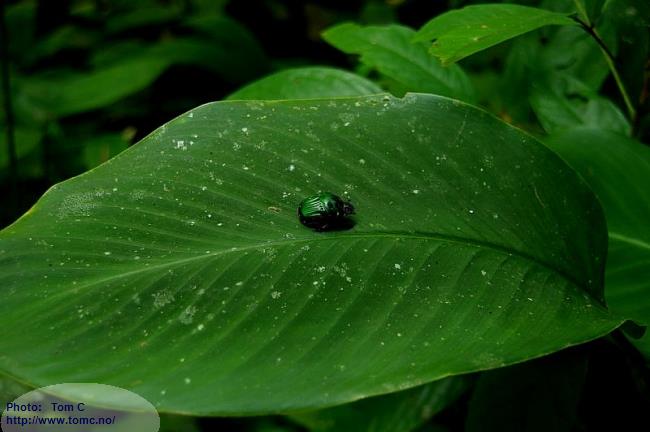
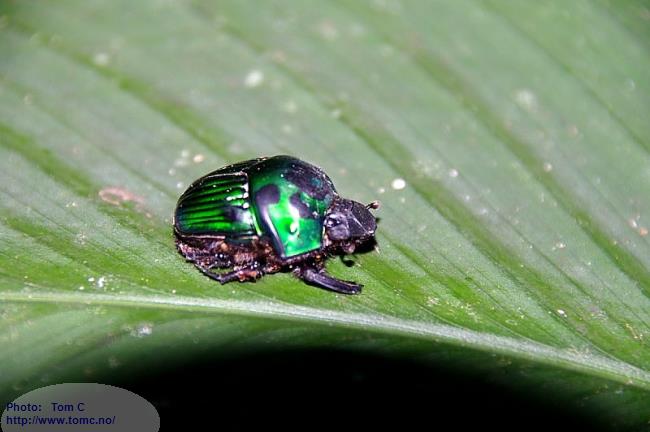
The water was in varying degrees influenced by blackwater:
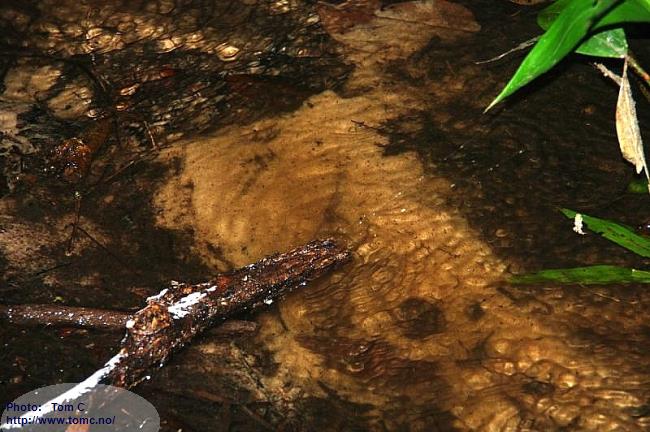
The water:
pH: 4.70
Conductivity: 8 microSiemens/cm
Temperature: 26.5 °C
and we found fish:
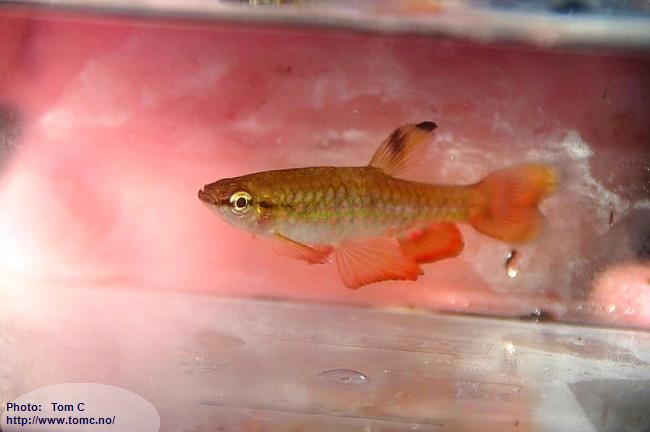
And.....YES!
The fish we mainly came here to collect, were found in several small streams during the day:
Apistogramma sp. "Alto Tapiche":
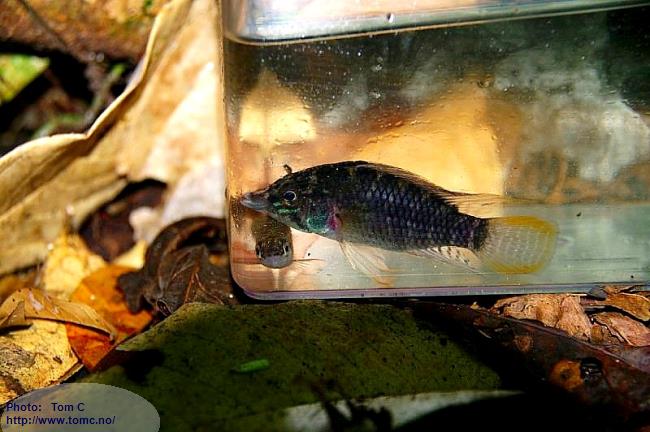
A true beauty:
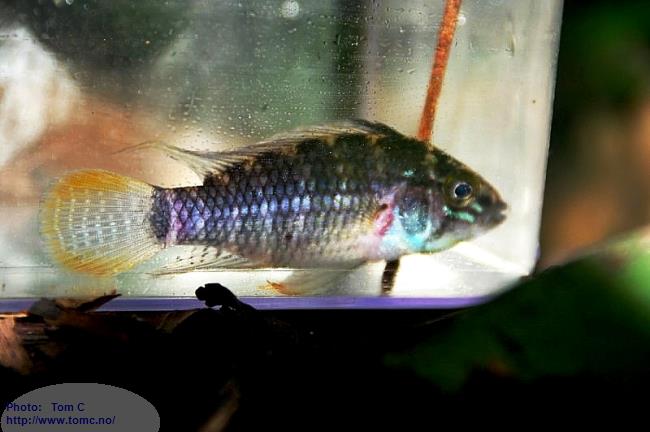
The last stream we had the time (and energy!) to search:
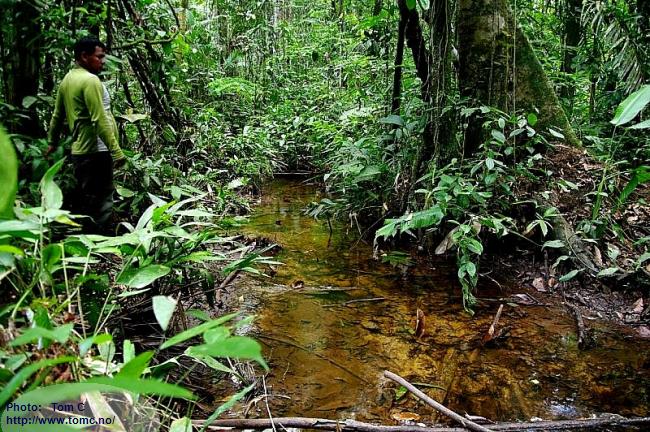
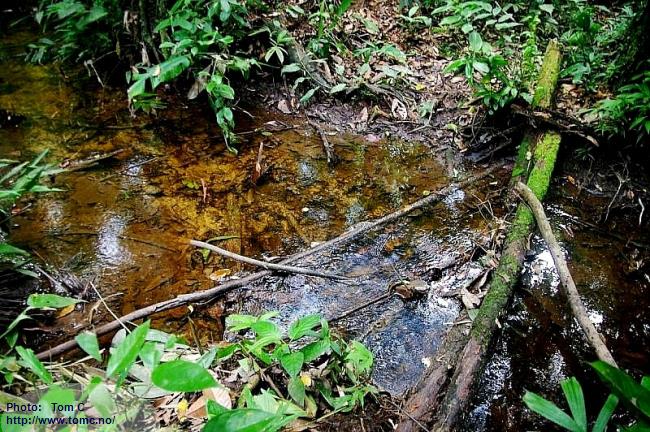
Strange creatures were watching us:
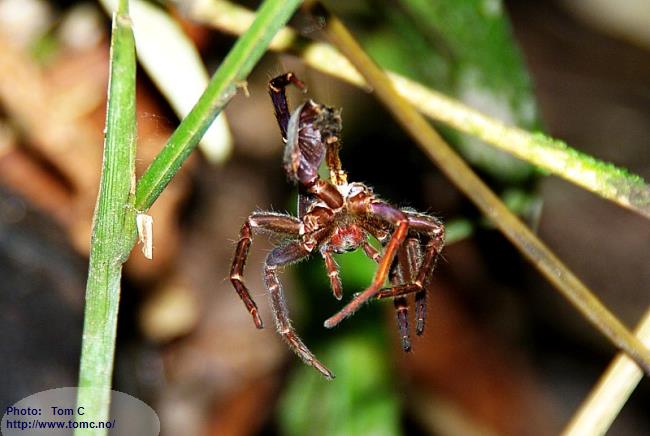
The water:
pH: 4.62
Conductivity: 7 microSiemens/cm
Temperature: 26.2 °C
Here this amazing fish showed a little bit different colors:
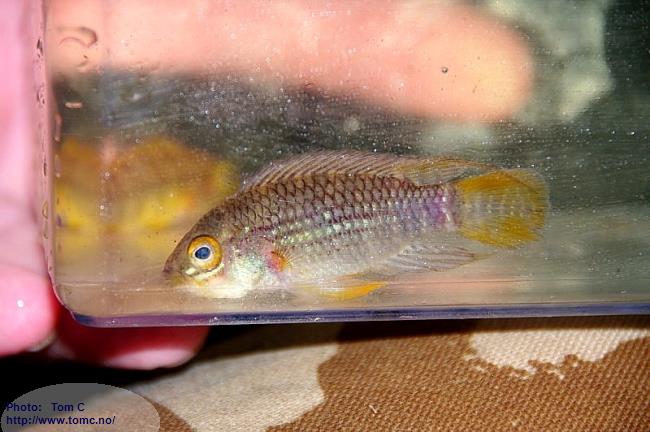
We found females too:
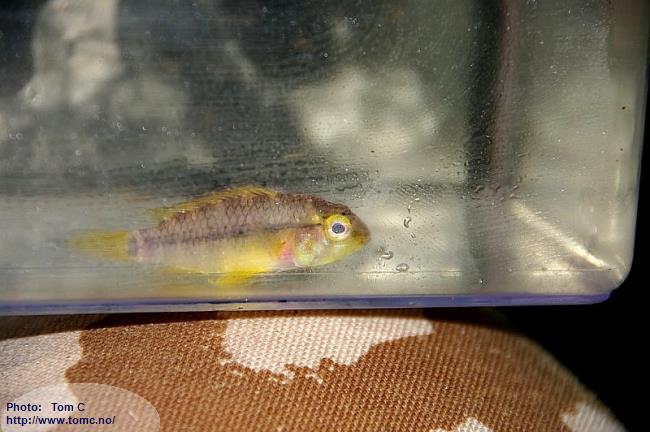
Our activities were monitored by many eyes:
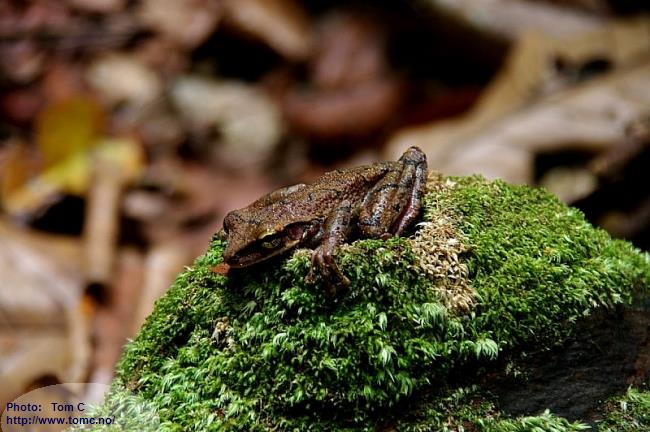
And some plants managed to capture light enough to flower:
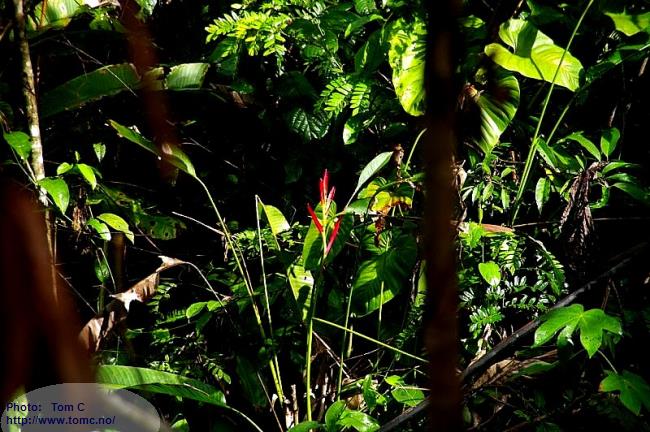
A long and exhausting walk brought us back to the small village. But what a day!
In the village, some of the inhabitants told me to come to have a look at "a very dangerous snake".
They were very proud to show it to me, and "of course" they had killed it:
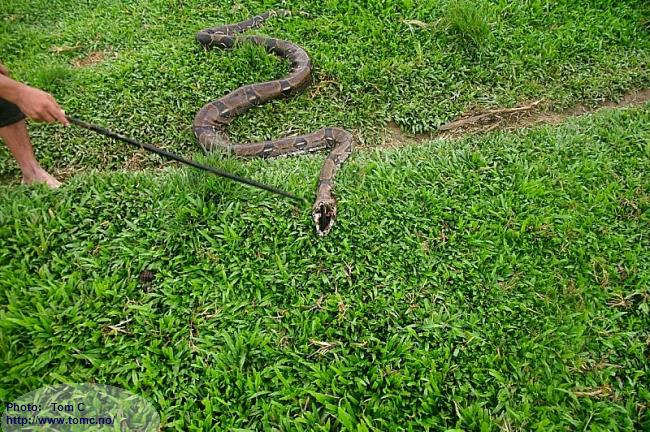
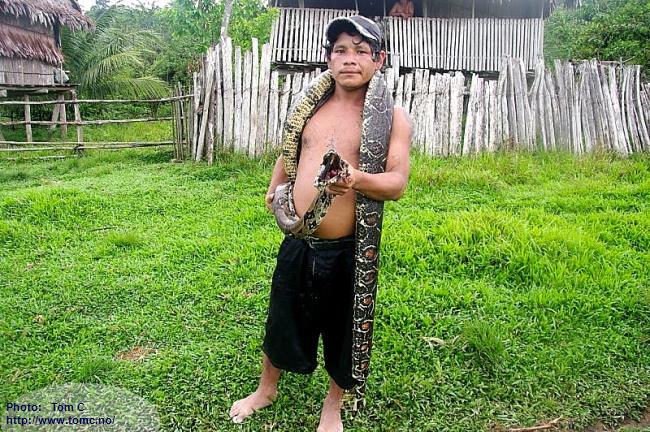
I told them that the snake was not dangerous at all to humans, it was a Boa, and it only attacks birds and small mammals.
But did they believe me? No way... the snake has big teeth; thus it is dangerous by definition :-(
The next morning:
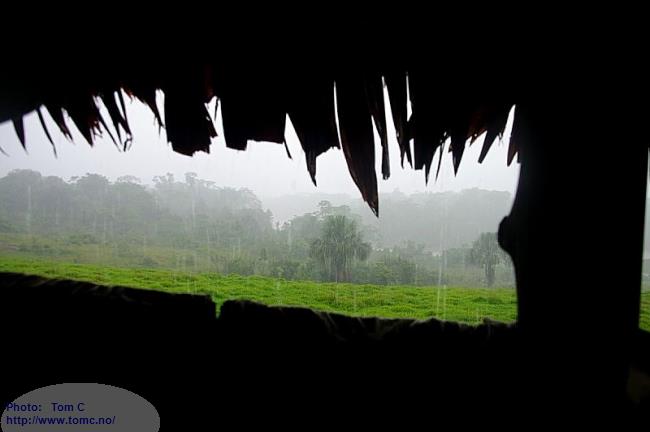
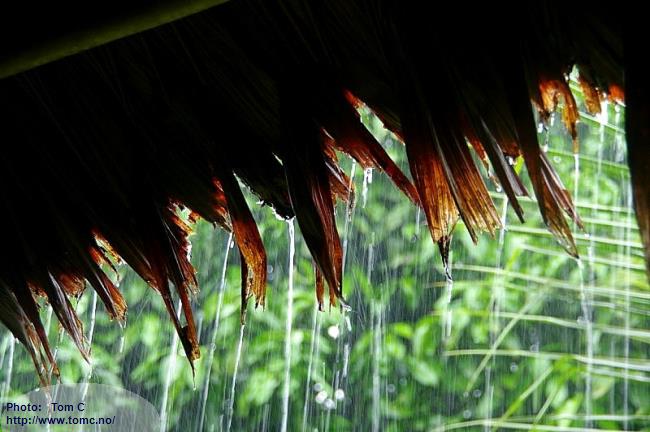
After a while, when the rain had stopped, we used our boat a short trip downstream the river, and entered the jungle on the other side.
Our fisherman caught this "in the air" with his hands: A beautiful shiny blue
Menelaus' Morpho Butterfly, Morpho menelaus:
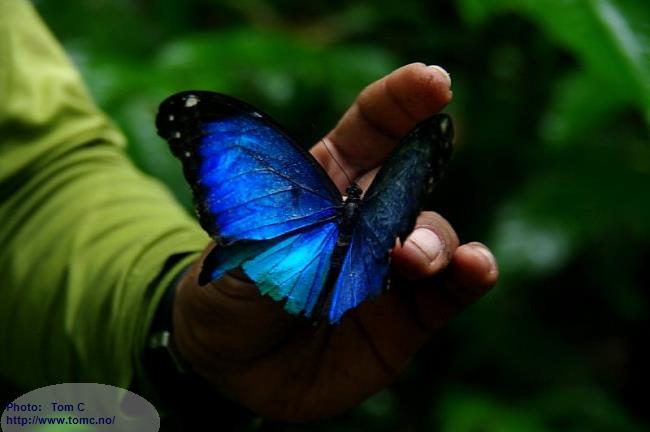
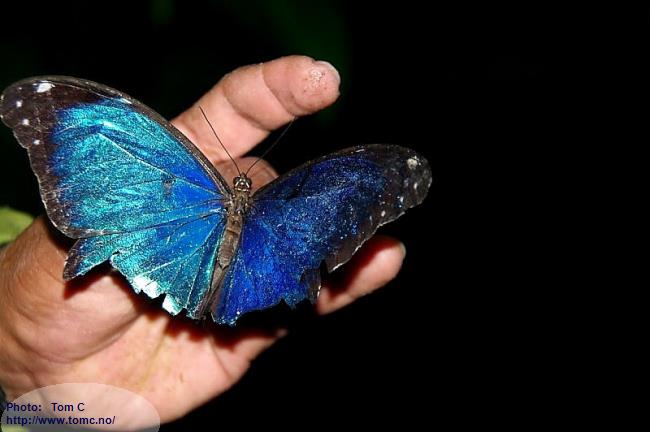
We almost immediately found interesting water:
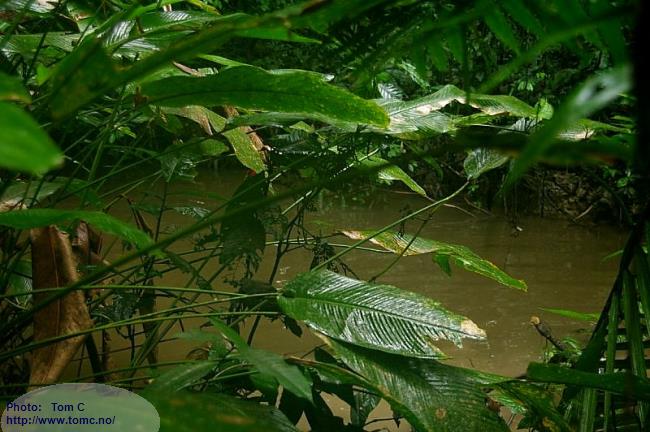
The water:
pH: 6.80
Conductivity: 81 microSiemens/cm
Temperature: 25.0 °C
As this was at the end of the dry season, with very little water in the jungle streams,
many different fish species had been trapped here, together:
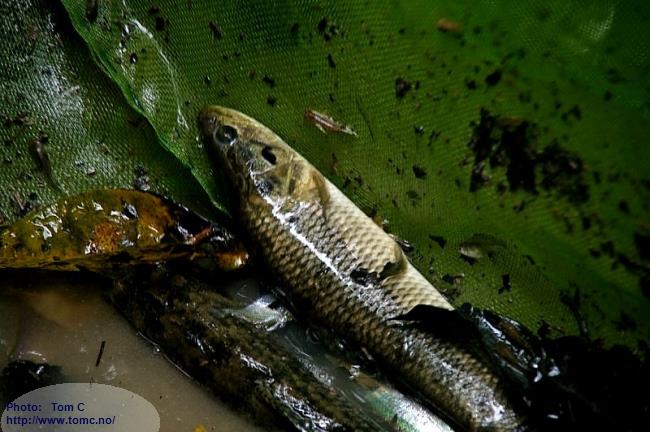
Otocinclus macrospilus (?):
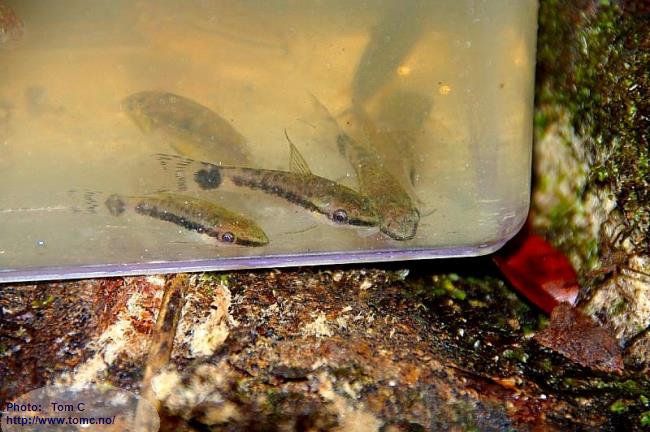
Small Corydoras:
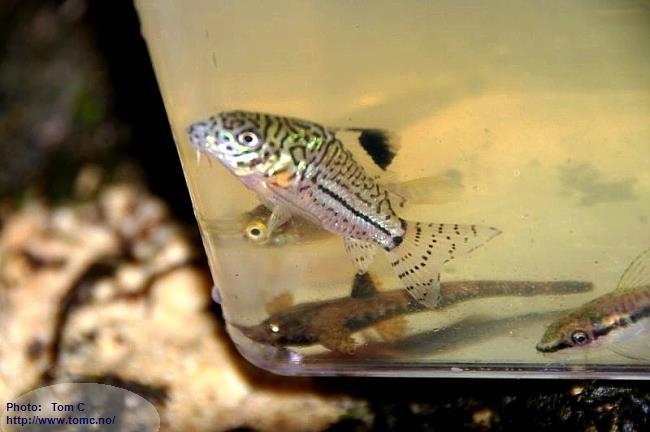
Bigger fish:
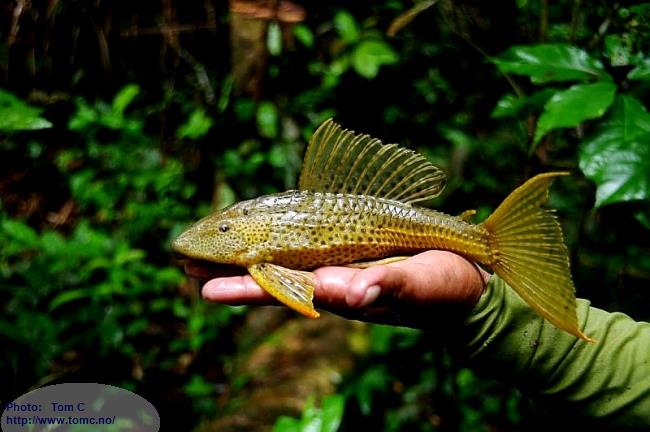
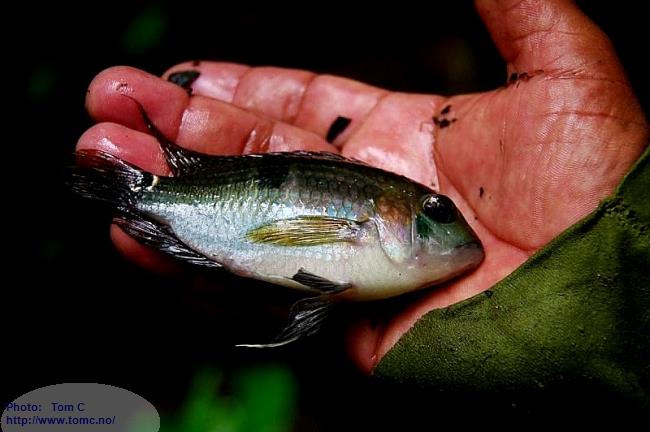
Copella nattereri (sensu Zarske) Copella callolepis (sensu Marinho):
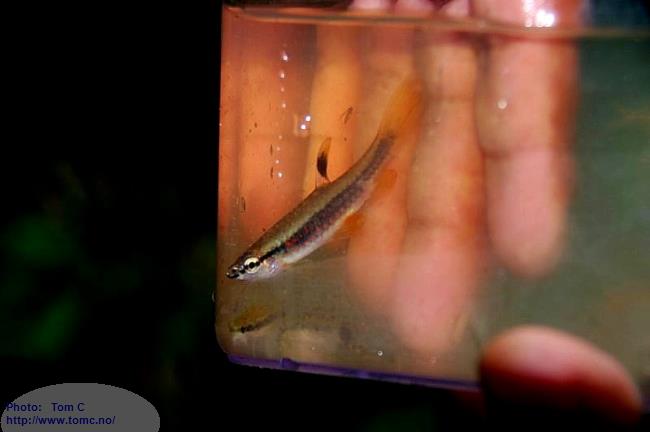
Crenicara punctulatum:
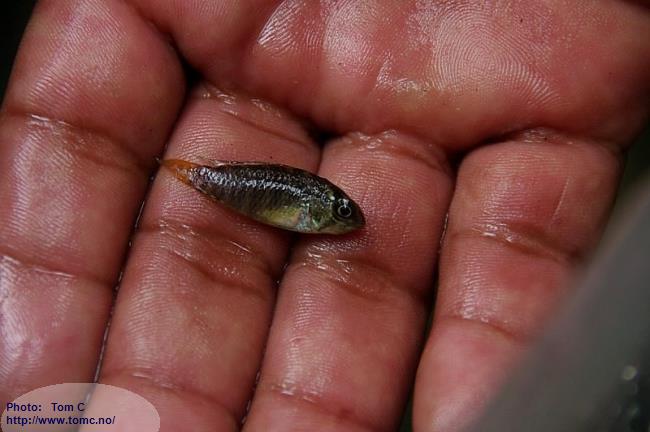
No idea what this is:
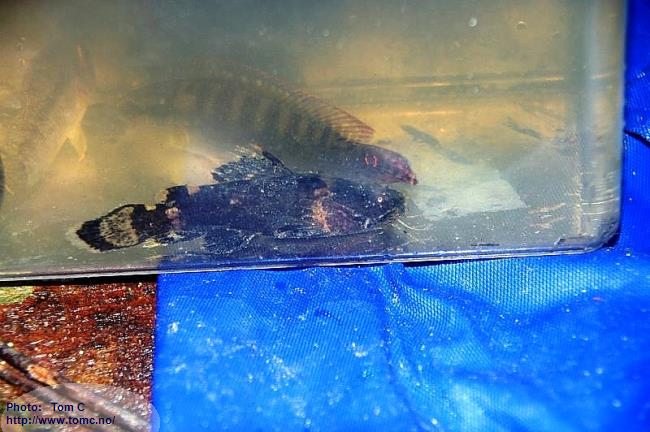
Apistogramma cf. eunotus to the left, with an unknown cichlid:
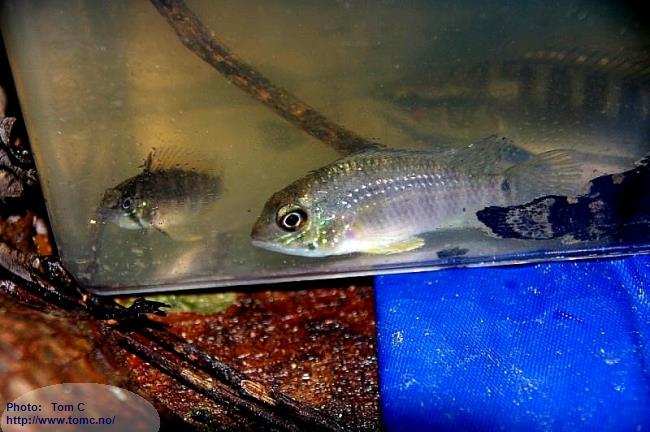
Crenichicla:
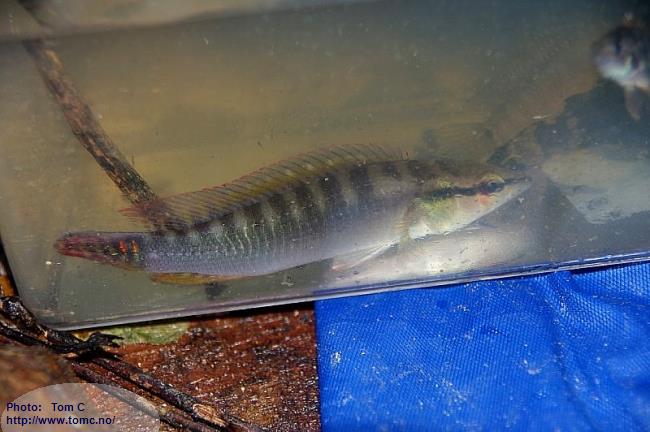
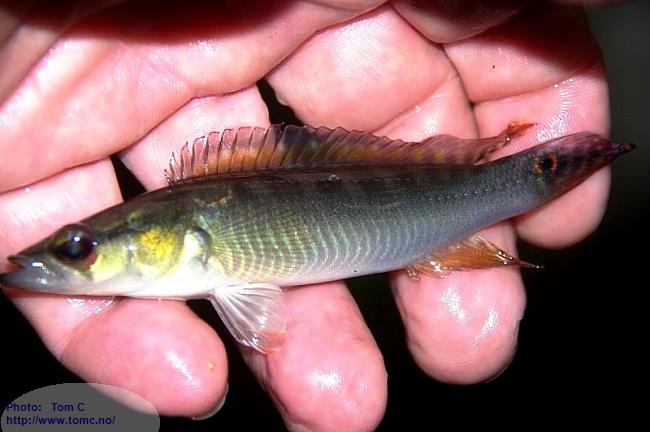
Unknown:
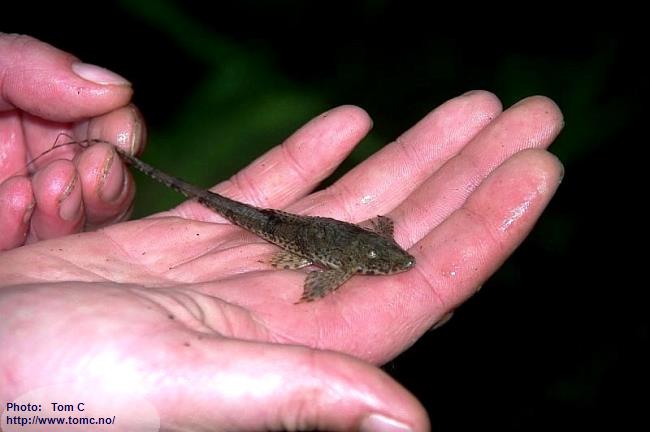
Apistogramma cacatuoides:
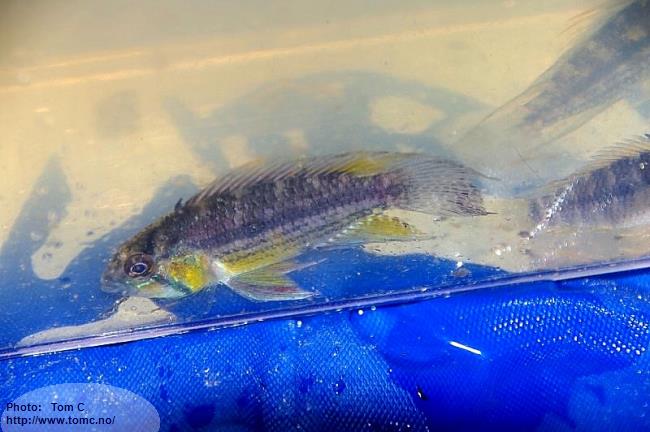
Apistogramma cf. eunotus (?):
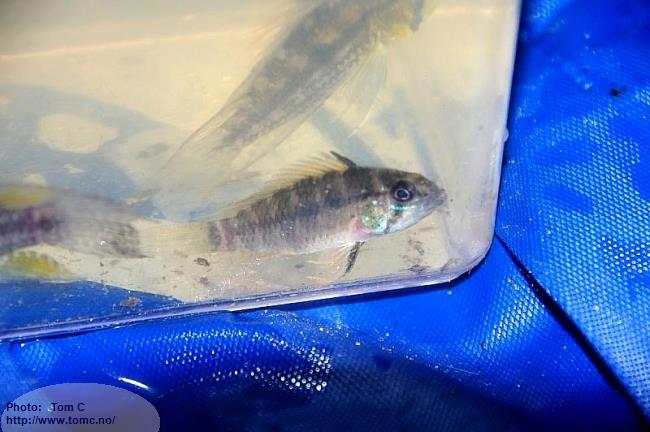
Beautiful Characins:
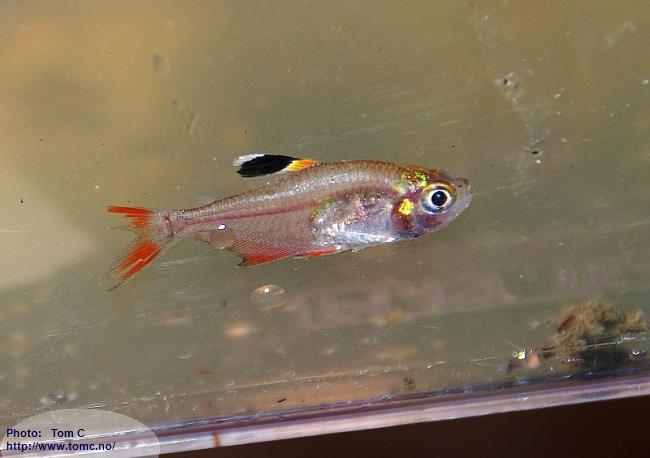
and my favorite flowers:
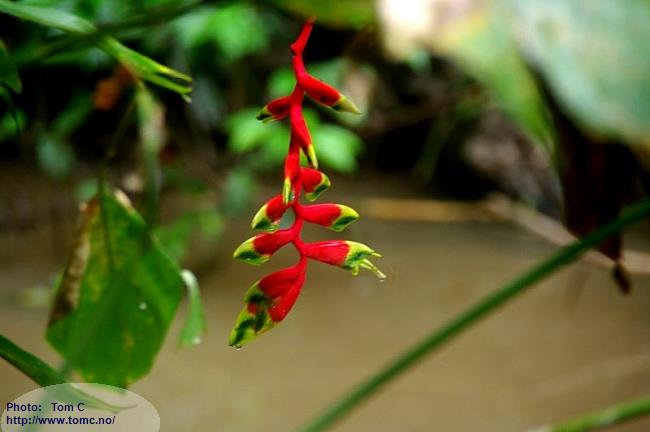
Just to show the humidity in the jungle:
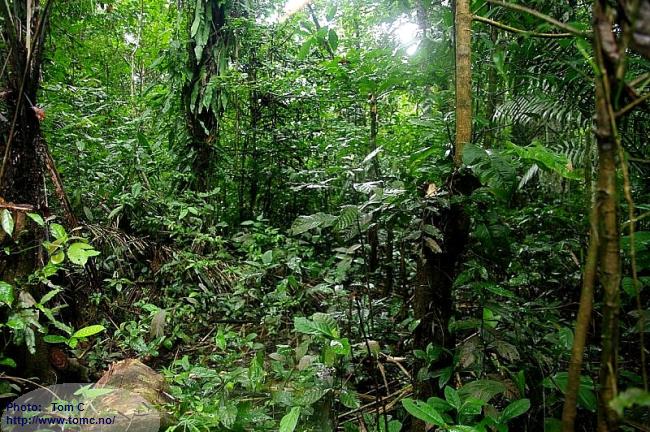
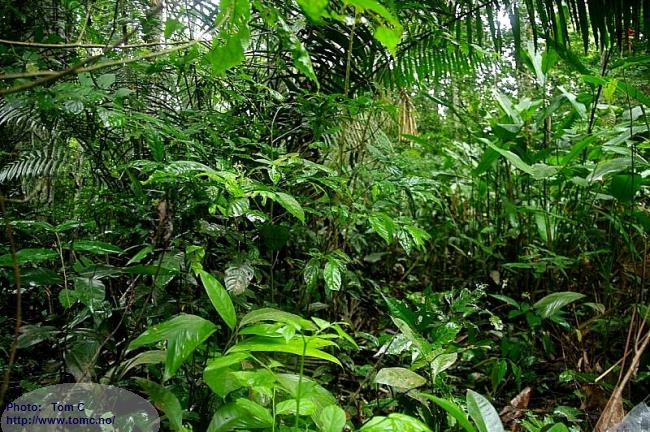
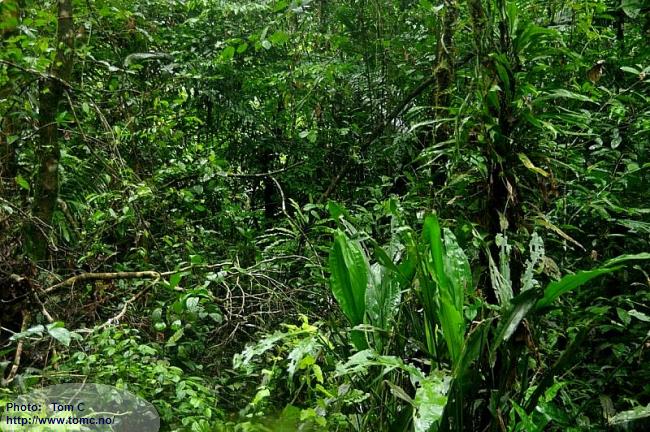
In another section of this stream, we collected more fish
Corys:
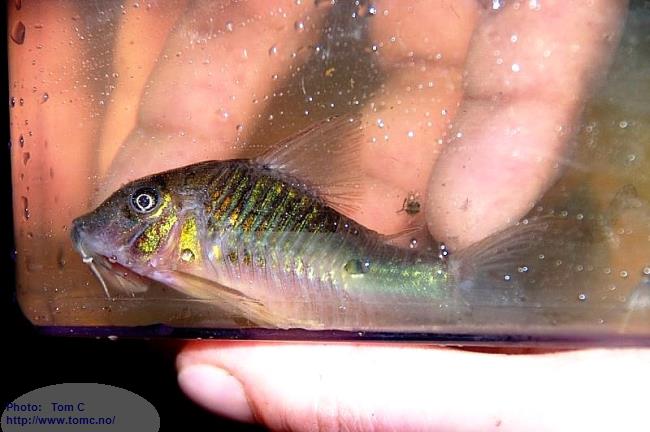
I've never seen this one before:
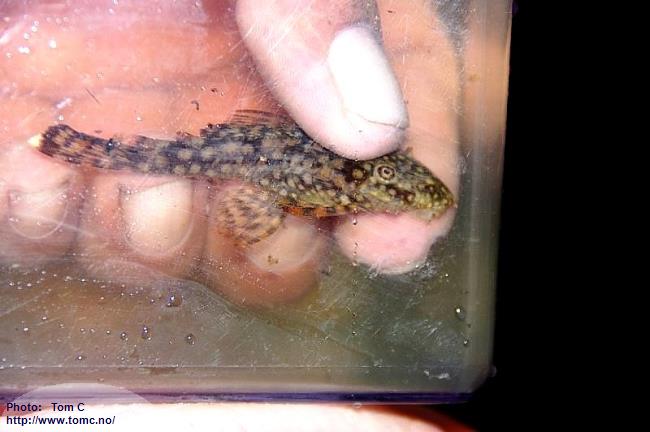
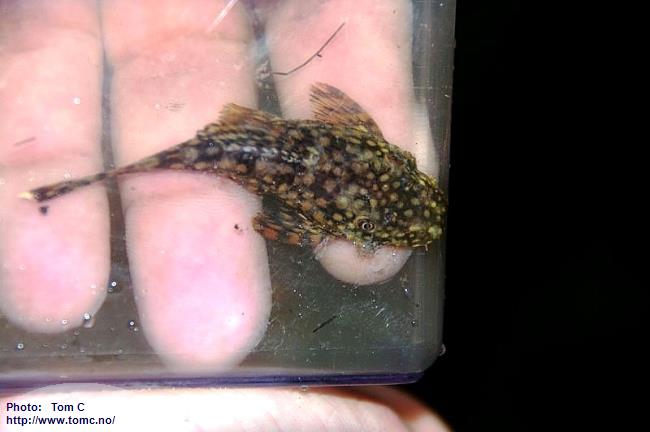
More Corys:
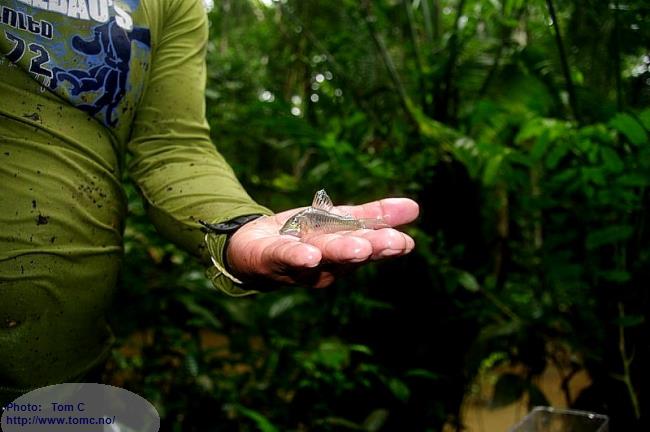
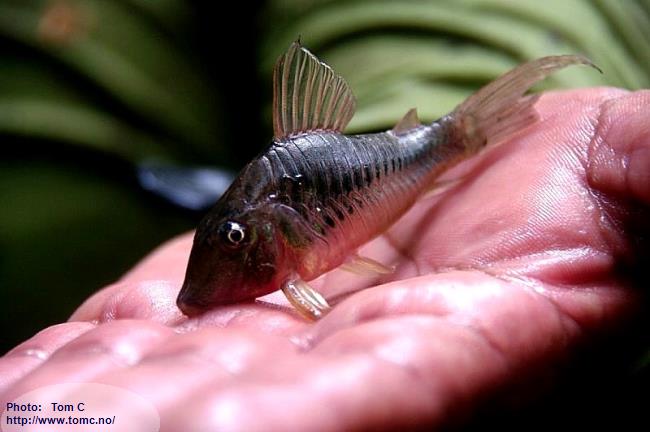
Cichlasoma amazonarum (?):
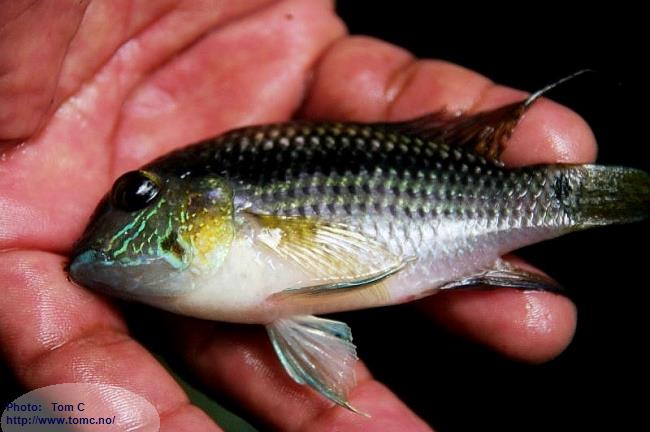
More Crenicara punctulatum:
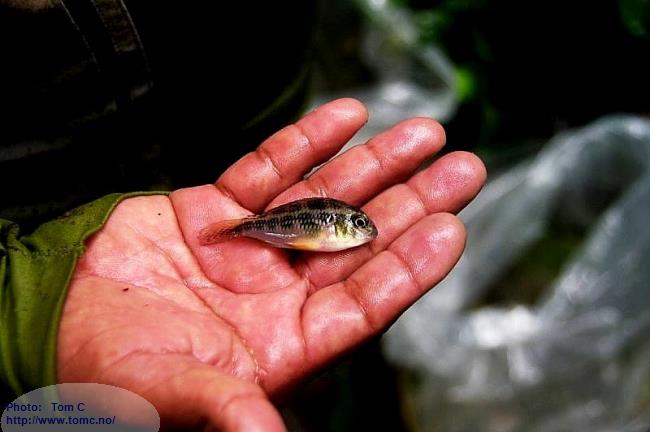
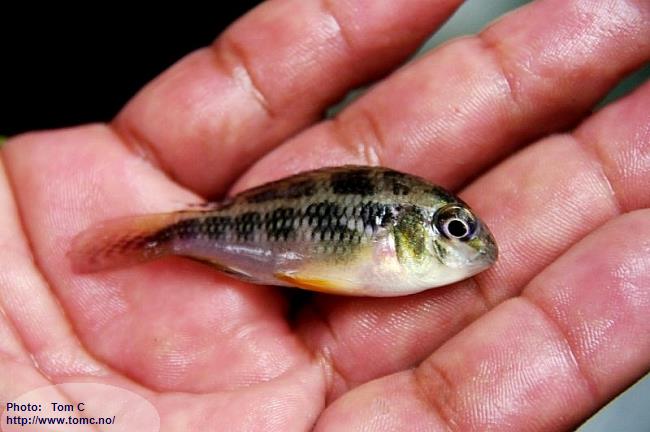
and more Corys:
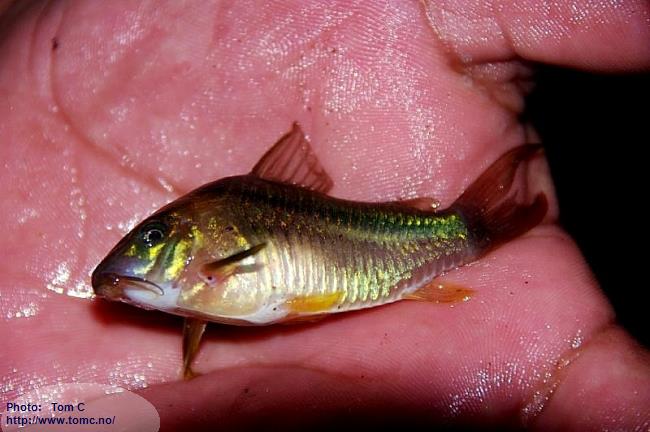
The next day, we started on the long way back to Requena and Iquitos.
We planned to stop in a couple of habitats to see what we could find.
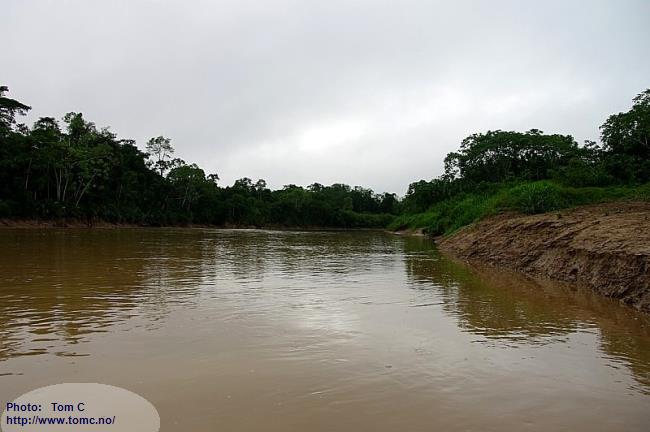
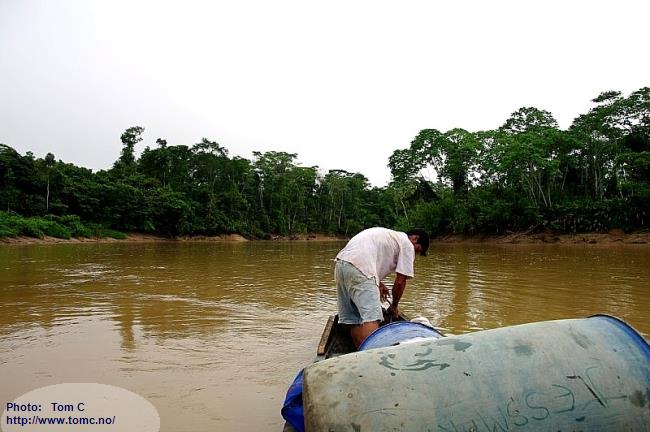
We were followed by a beautiful Little Blue Heron (Egretta caerulea):
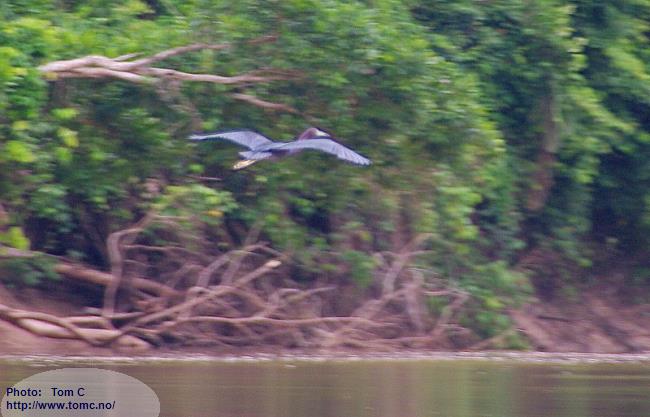
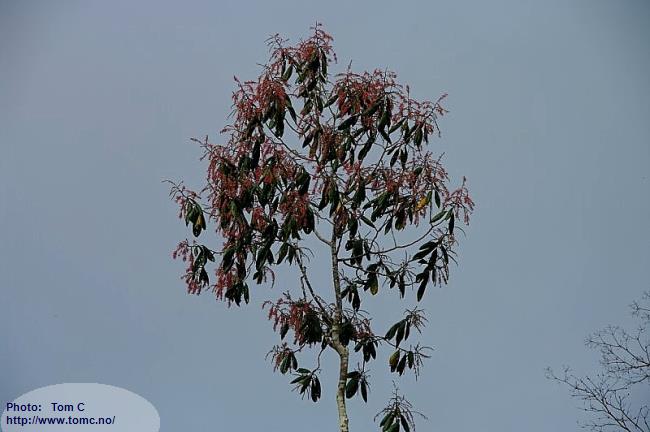
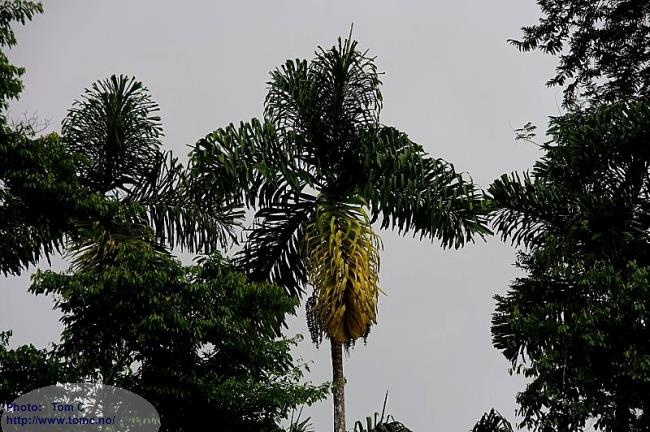
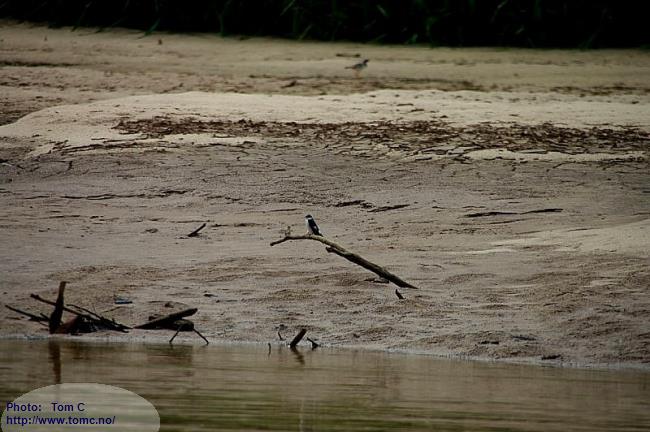
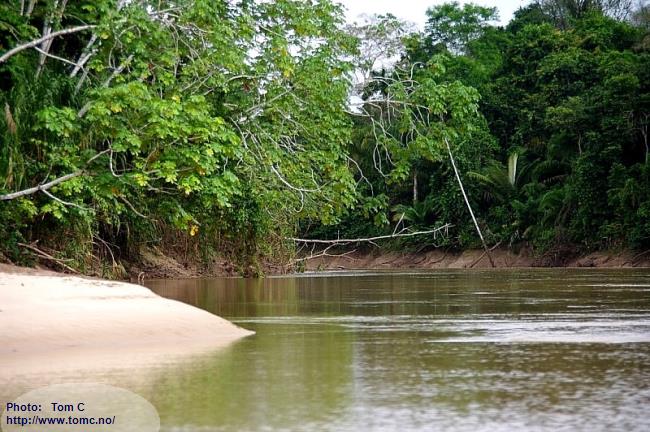
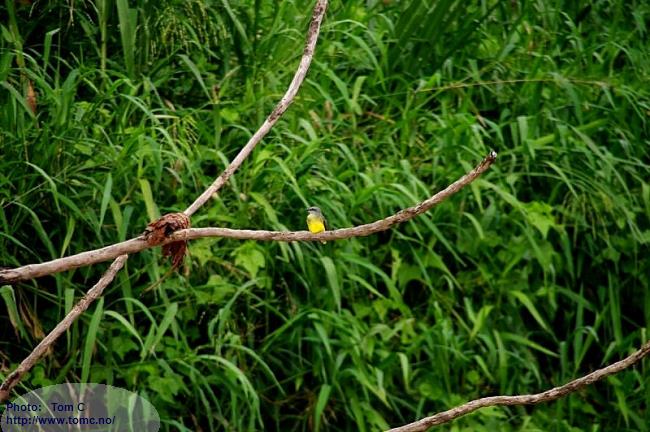
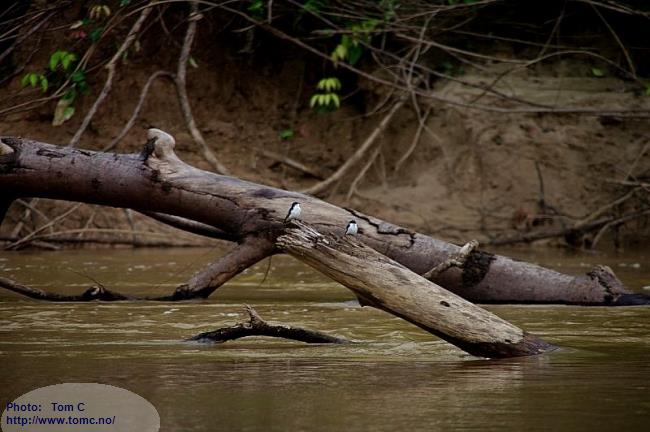
A pair of Masked tityre (Tityra semifasciata):
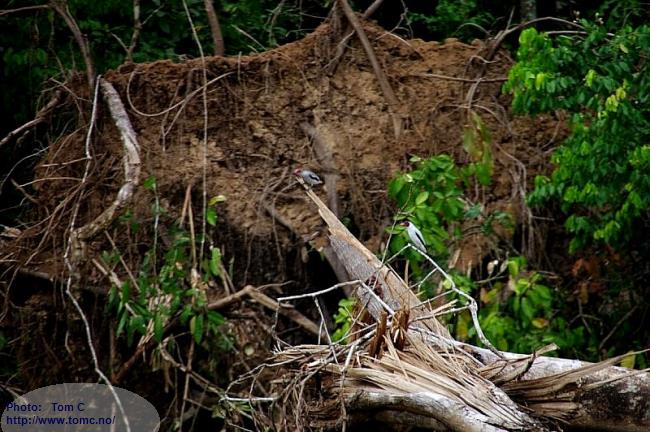
In this area, blackwater from the swamps strongly influences the main river:
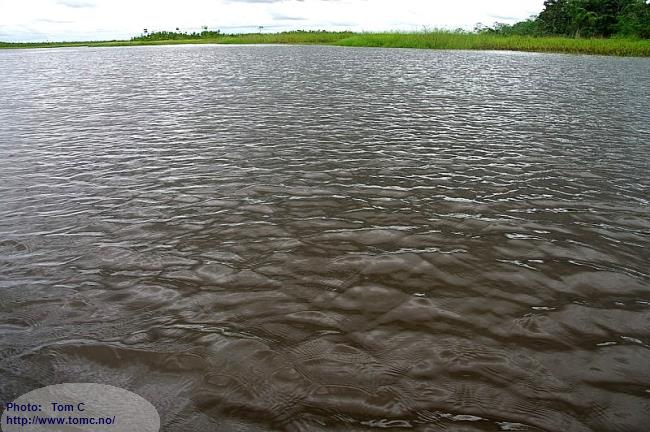
Whitewater in the main river (farthest) meets blackwater from the swamps:
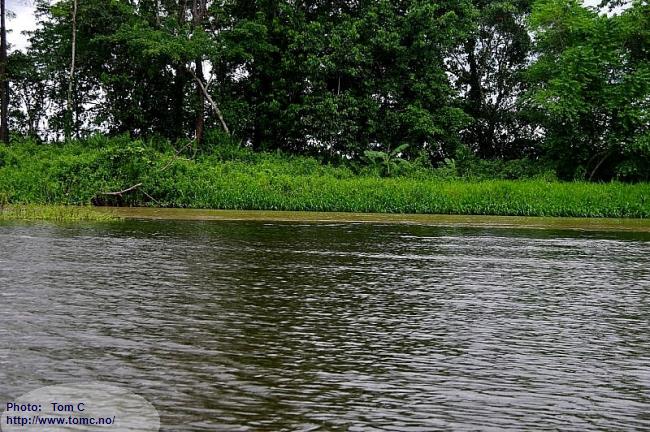
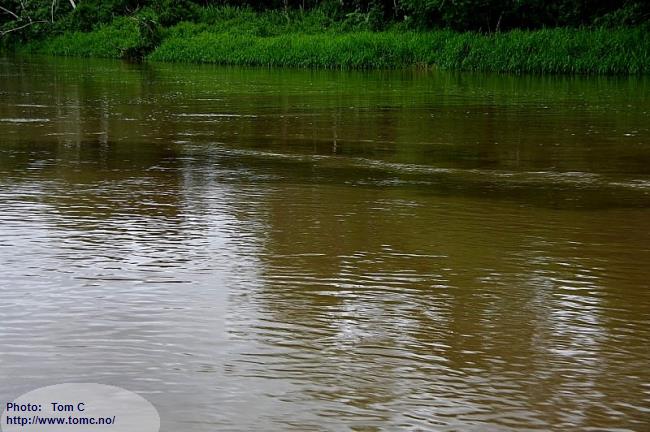
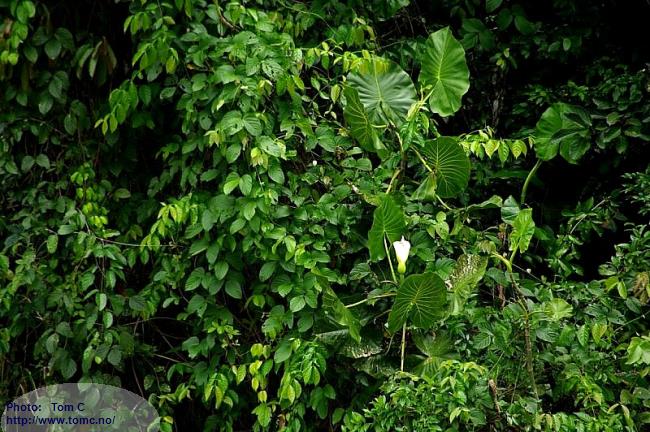
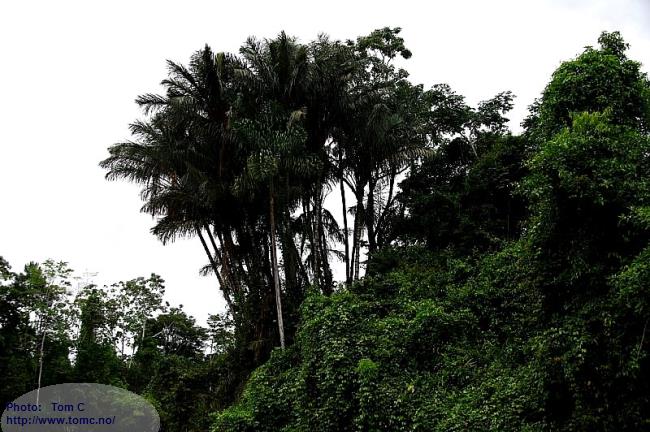
Serious danger: Easily hit with the boat, if you are not on the alert, or in the dark.
(In the dark, using a strong torch/flashlight to
avoid catastrophes like hitting things like these and end up in the water, together with all our luggage, we observed many light-reflecting
eyes of black Caimans. They were probably there all the time, waiting and hoping for a nice meal = gringos)
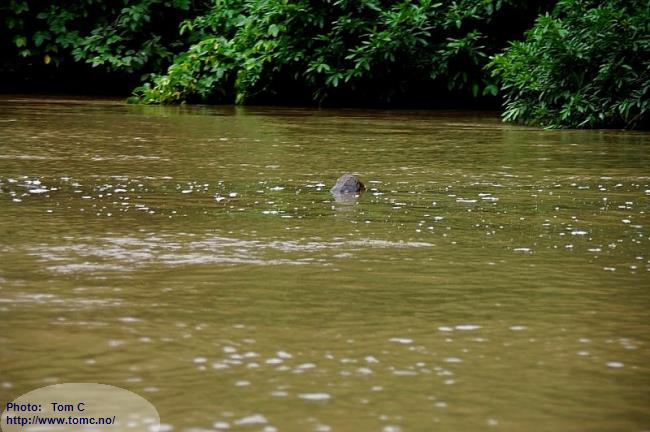
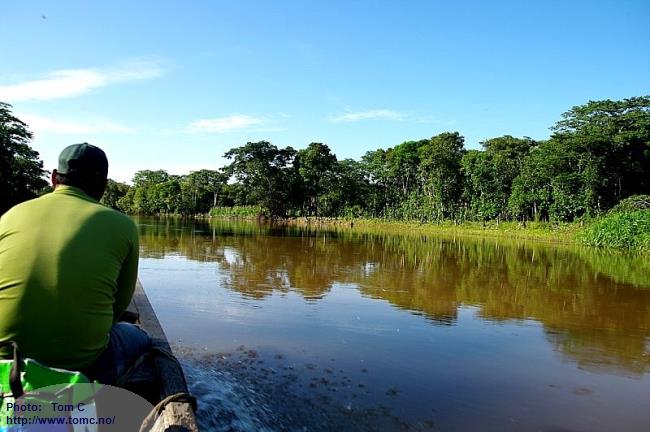
We stopped in a very small village, where they kept these ones as pets:
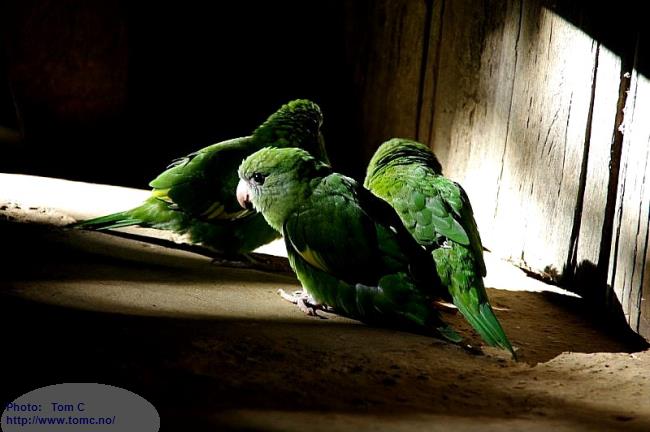
From there we went out in the jungle. The temperature must have been close to 40 °C.
Here we found blackwater everywhere:
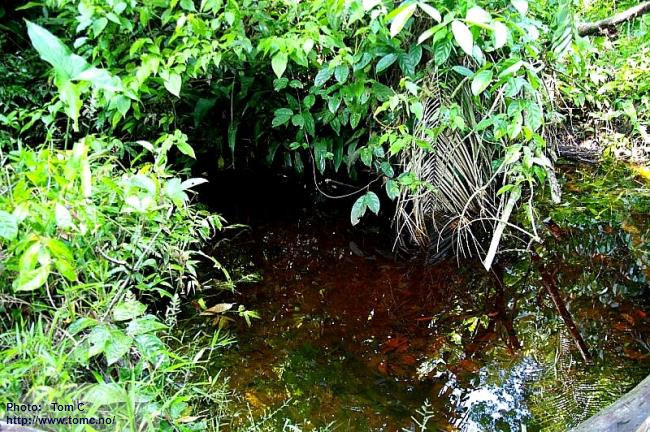
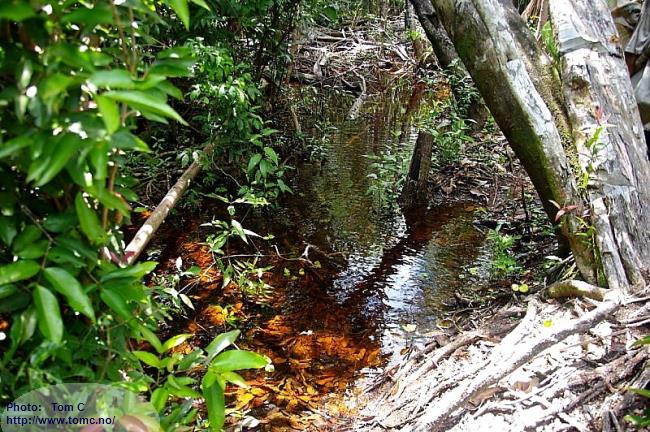
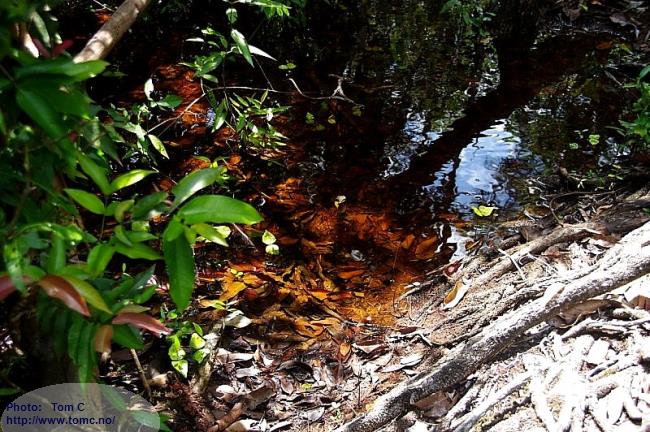
I can't imagine how it is possible NOT to fall in love with blackwater like this:
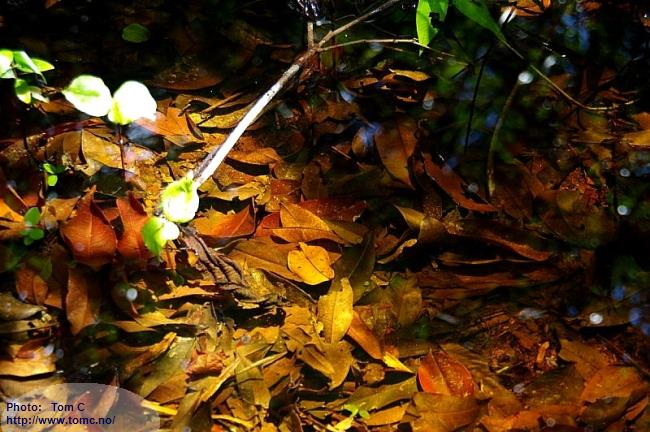
The water: (many samples)
pH: 3.97 - 4.67
Conductivity: 1 - 11 microSiemens/cm
Temperature: 26.7 - 28.8 °C
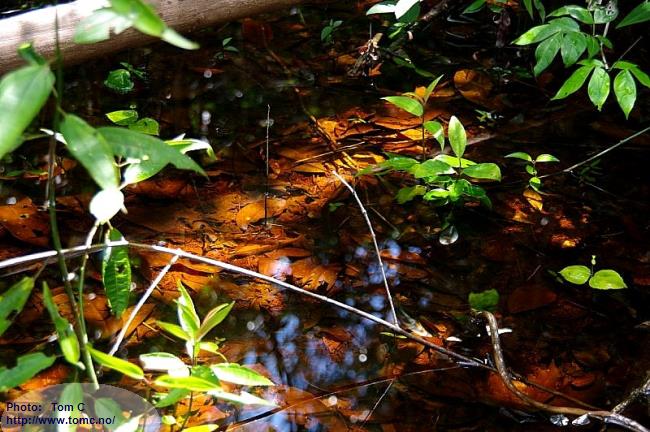
<
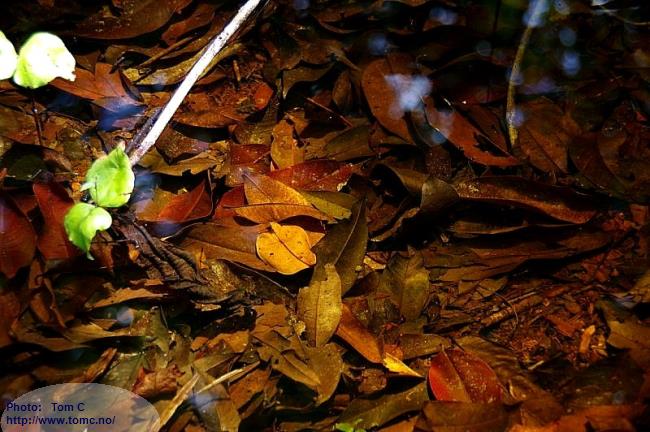
Beautiful and exotic birds:
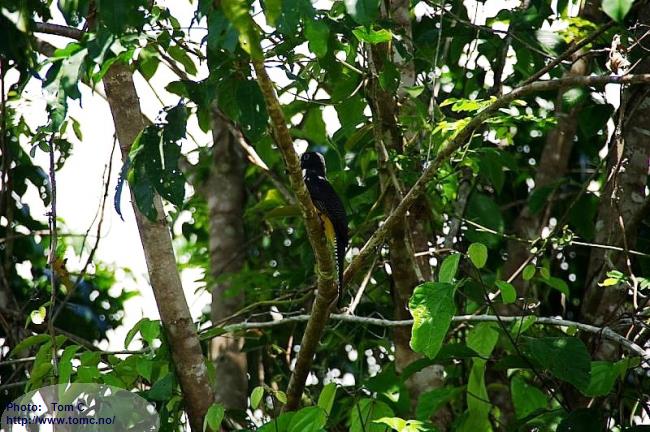
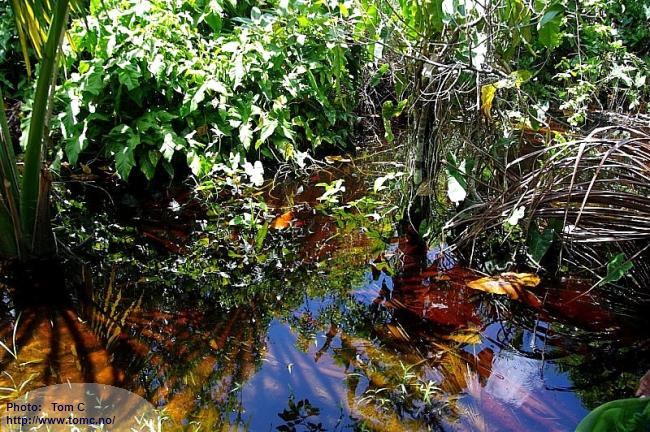
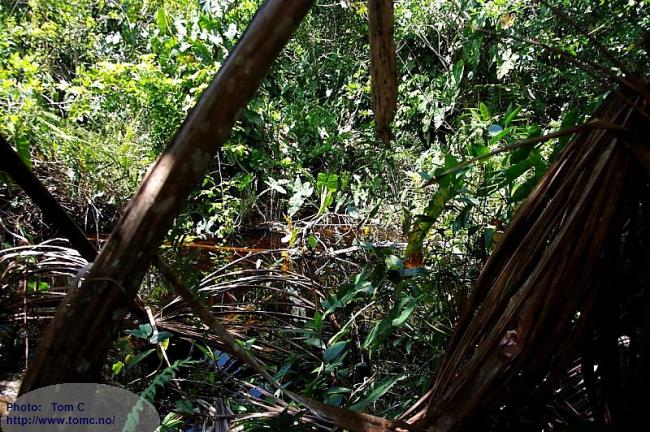
In these waters we found lots of fish.
Nice hatchetfish:
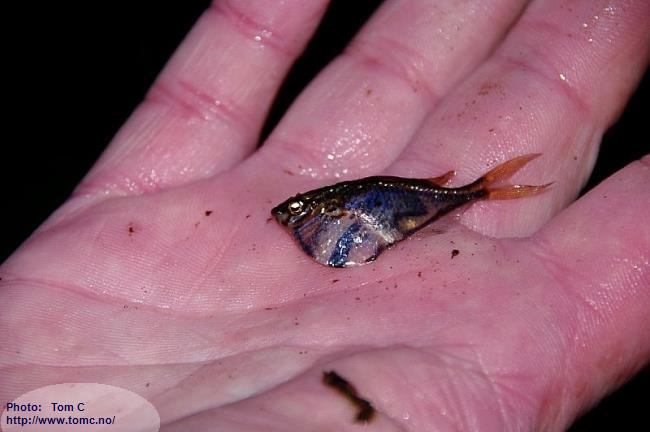
Copella, Crenuchus and other tetras
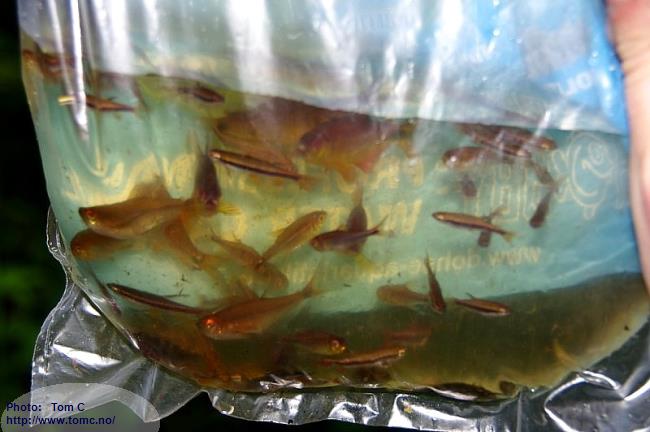
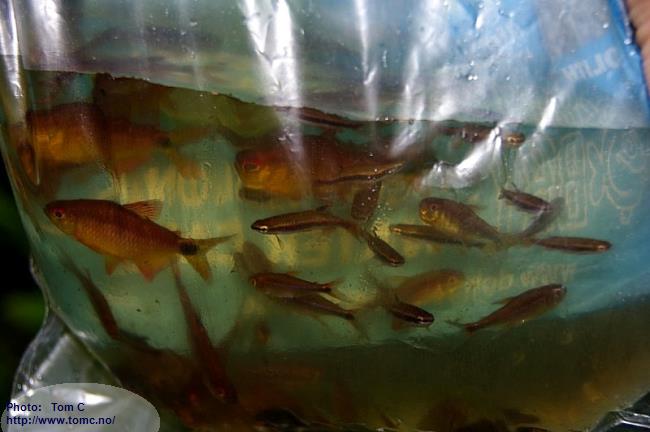
And among them: Apistogramma cf. huascar (as expected):
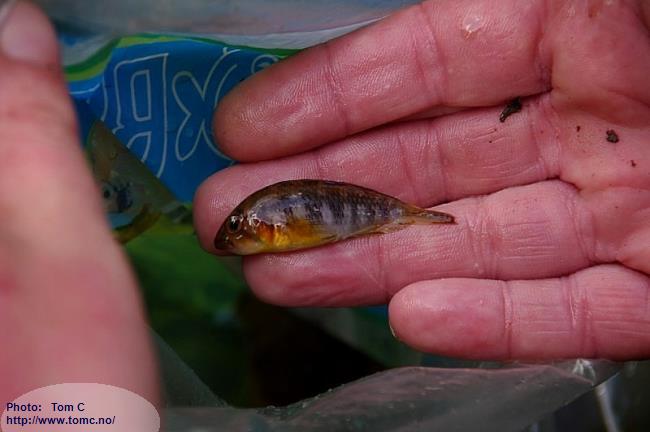
All the time with beautiful butterflies around us:
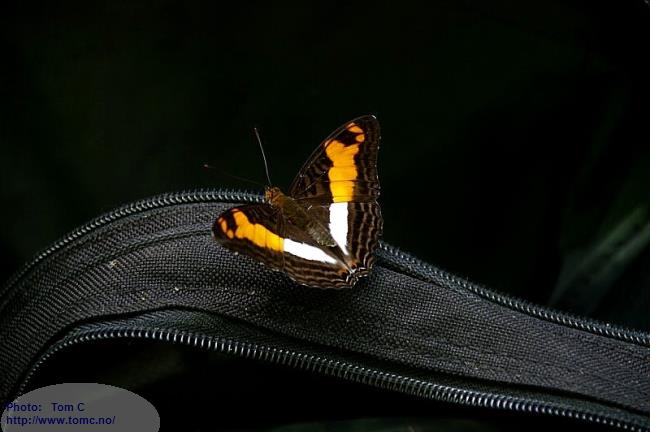
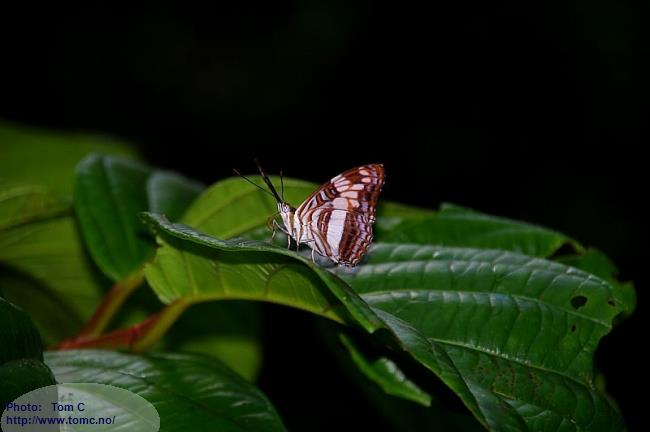
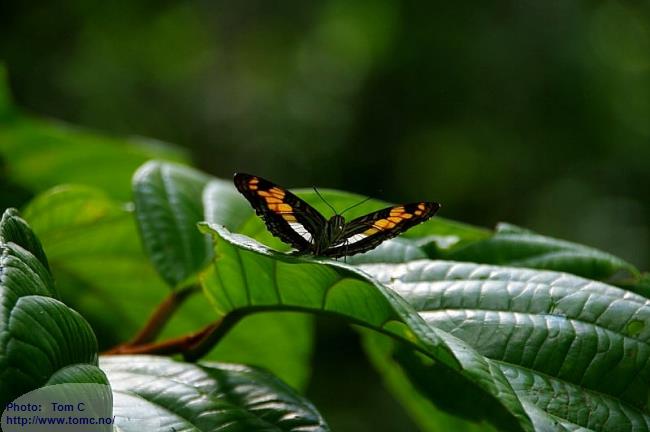
More Apistogramma cf. huascar:
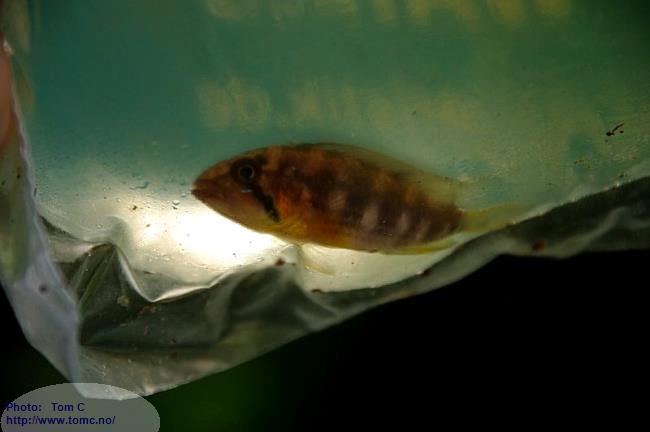
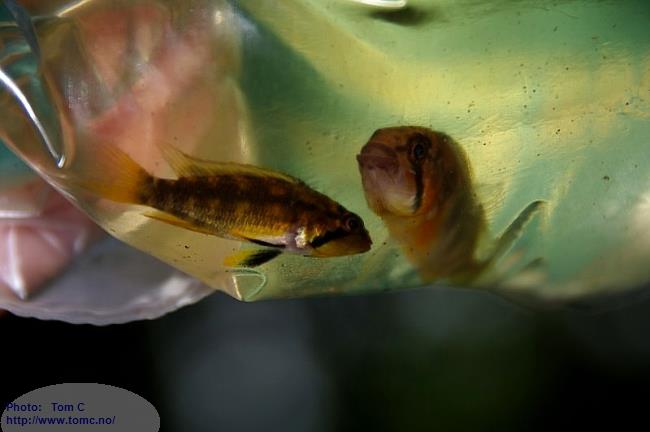
And unknown tetras:
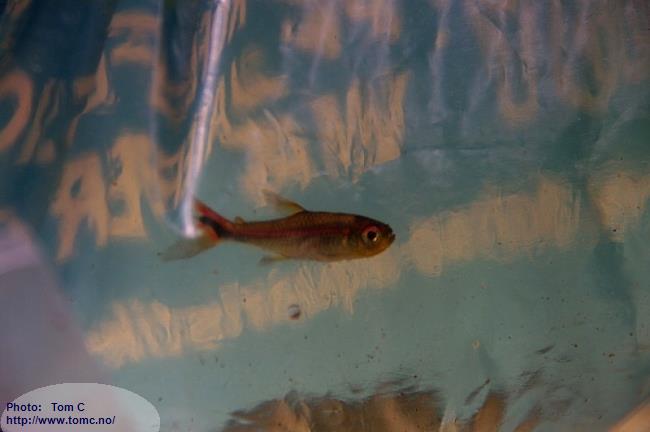
Copella nattereri (sensu Zarske) Copella callolepis (sensu Marinho):
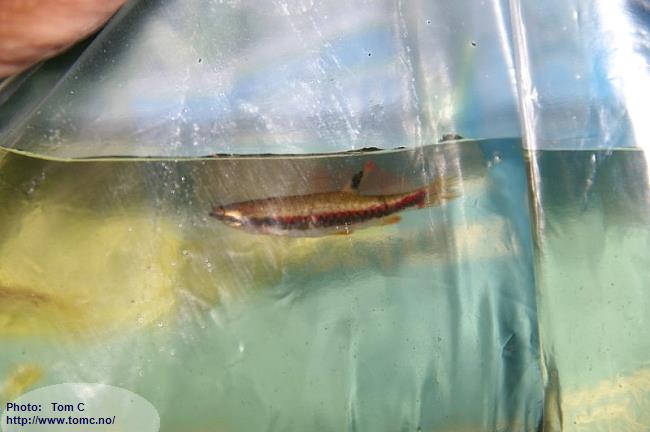
Seems to be Apistogramma cf. agassizii "Pastel"
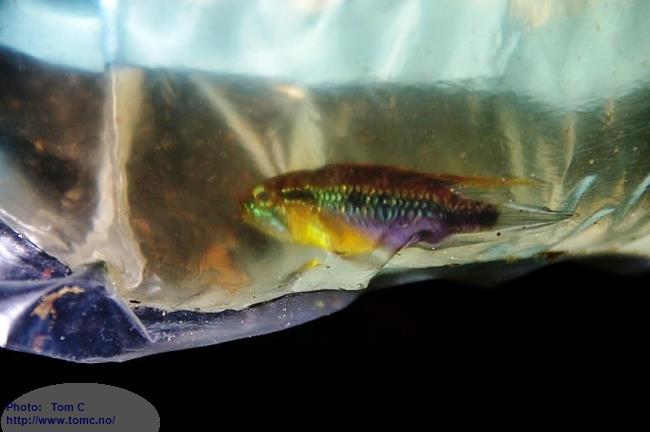
Other color forms of A. cf. agassizii were collected too:
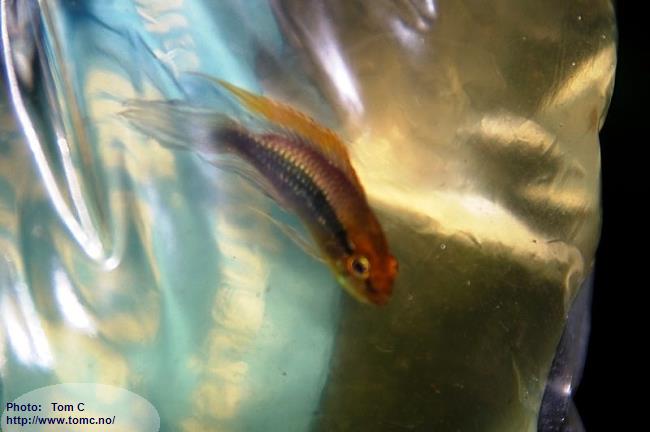
Flowering plants make the jungle showing a lot more than just shades of green:
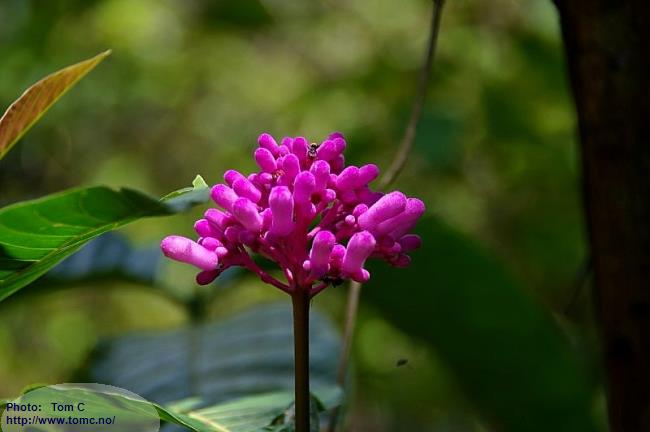
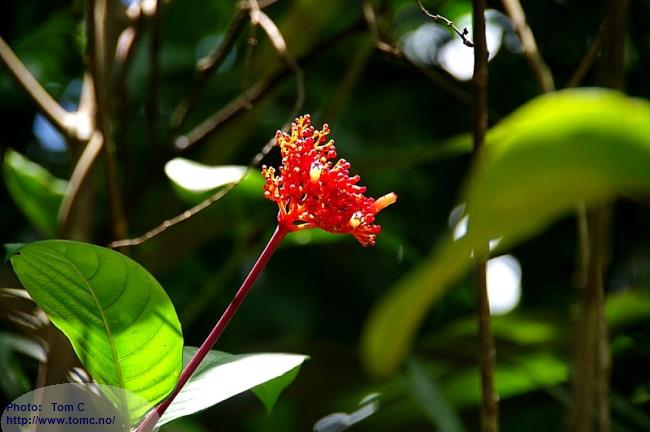
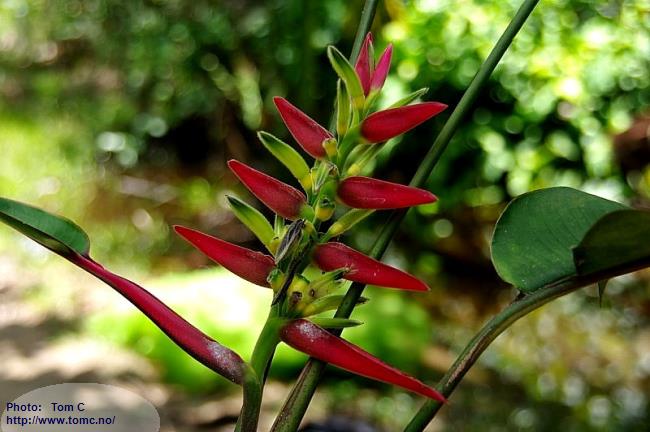
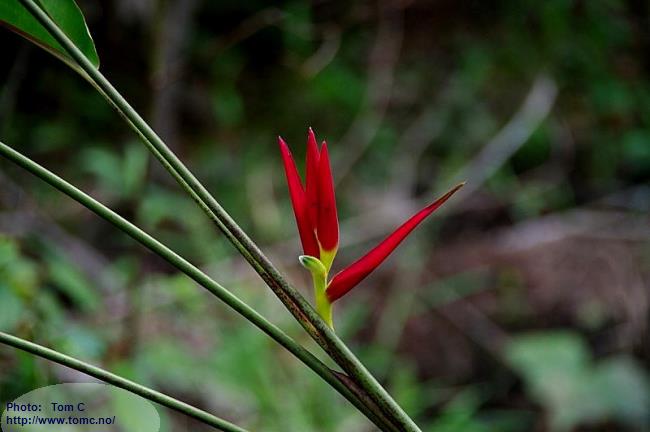
Further down, we examined a small lake. It is directly connected to the Río Tapiche,
even when the water is low:
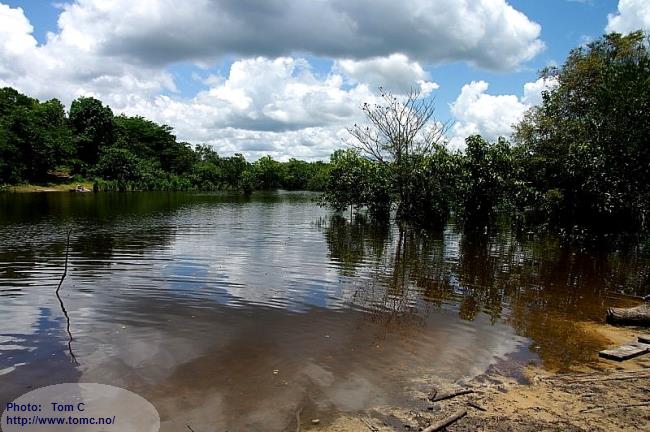
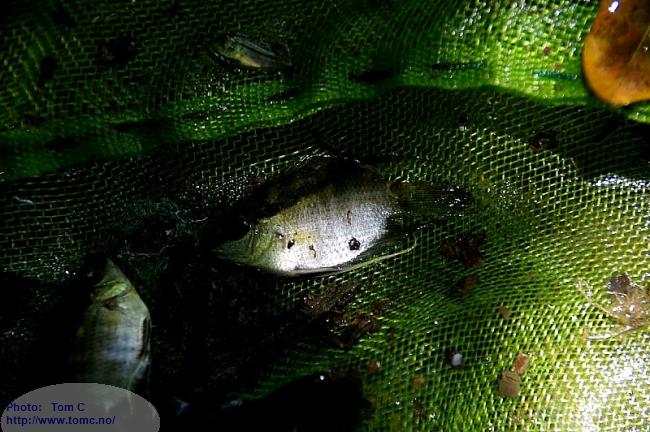
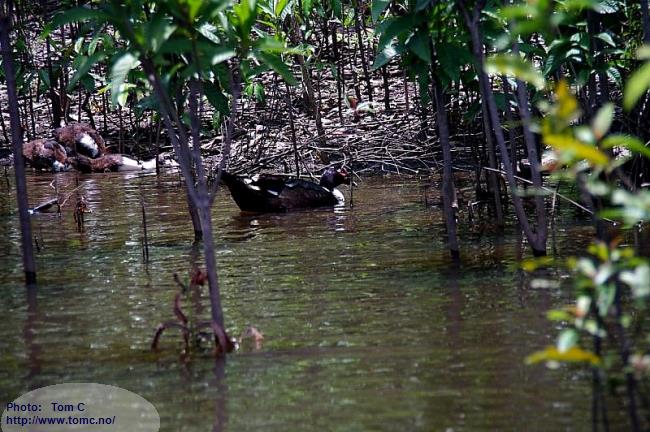
Our fisherman and a local guide with the net. Notice how shallow the water is (end of the dry season!):
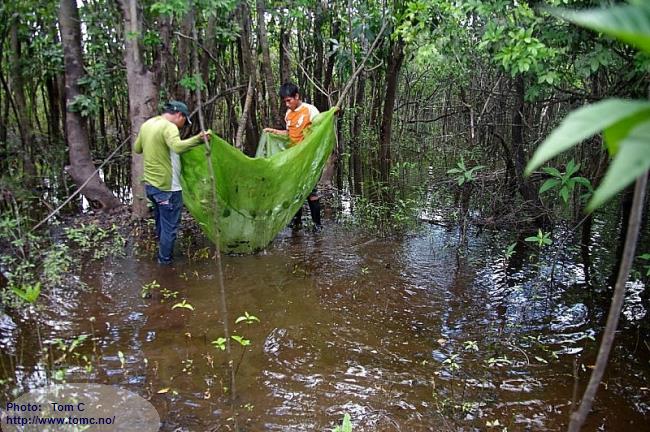
Exposed to the sun, the shallow water was so warm that we didn't believe fish could live in it:
The water:
pH: 5.49
Conductivity: 20 microSiemens/cm
Temperature: 34.4 °C!
The water contained Apistogramma cf. agassizii forms:
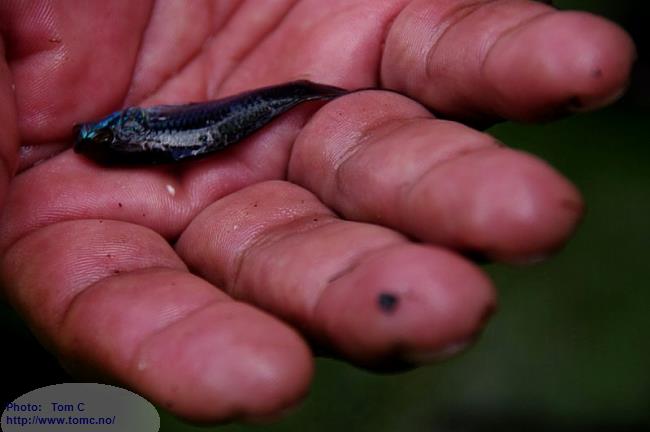
Amazingly, at least 4 (probably more) different color forms, where found in the same water!
This one resembles the color form A. cf. agassizii "Flamenco", which
so far only is found in the Río Tigre:
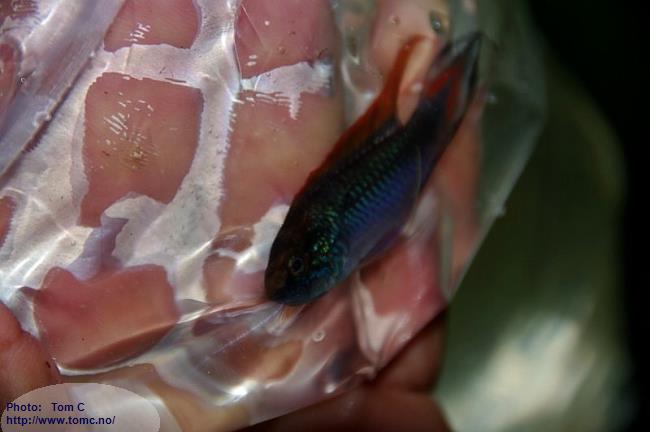
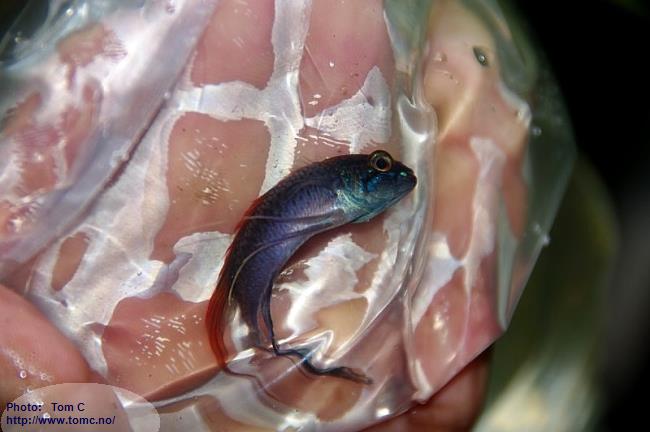
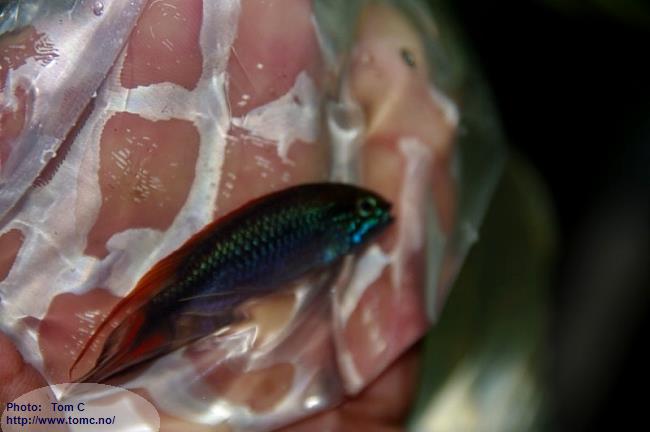
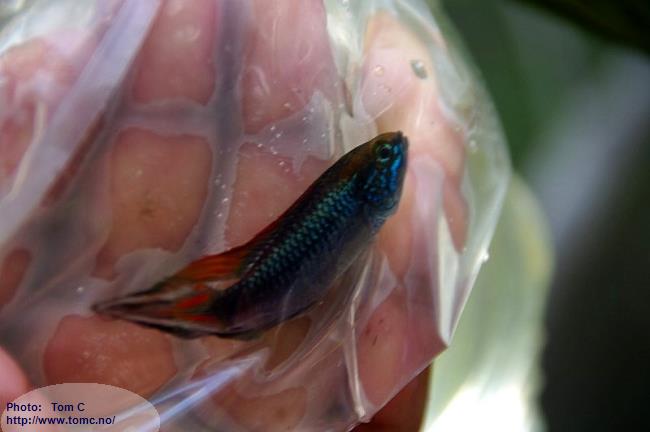
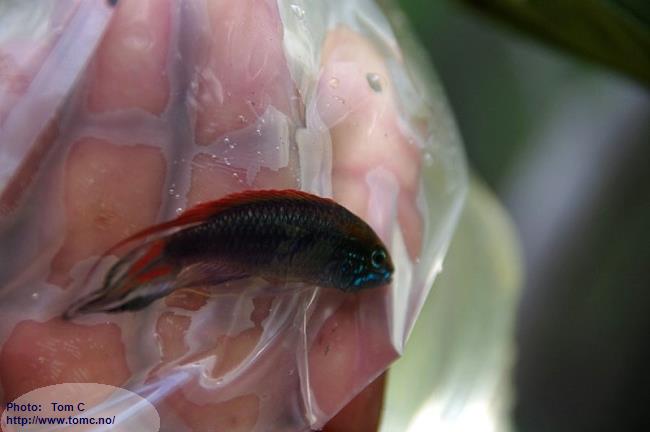
Leaf cutter ants were working around us:
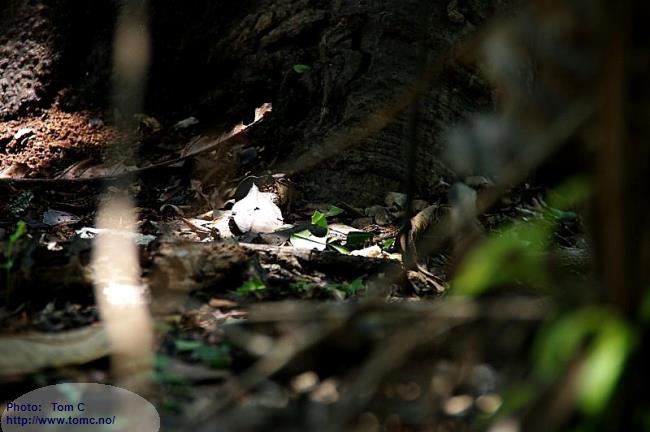
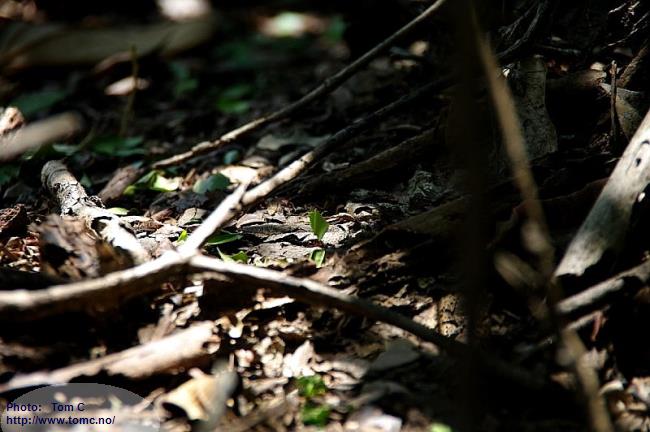
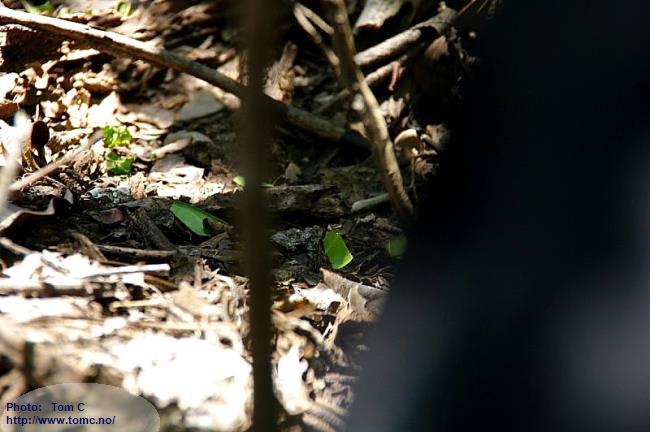
There were forms with red fins, with white fins and with almost transparent fins, specimens with yellow heads, red heads or blue heads,
and some with yellow and some with white chests.
And some reminded of the A. cf. agassizii "Pastel" form.
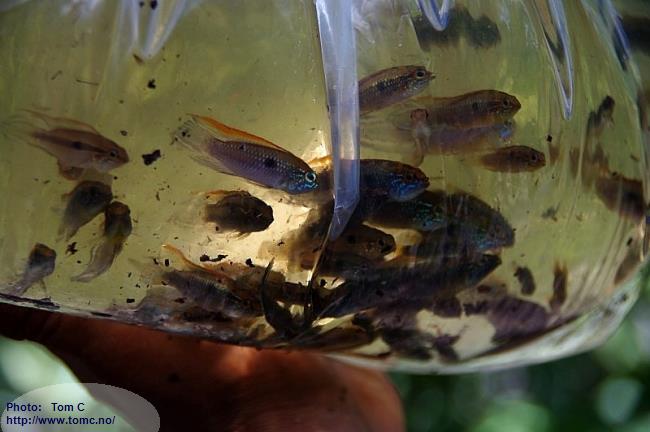
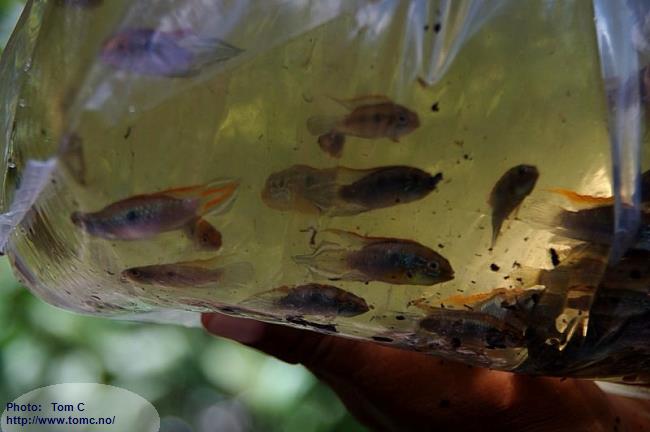
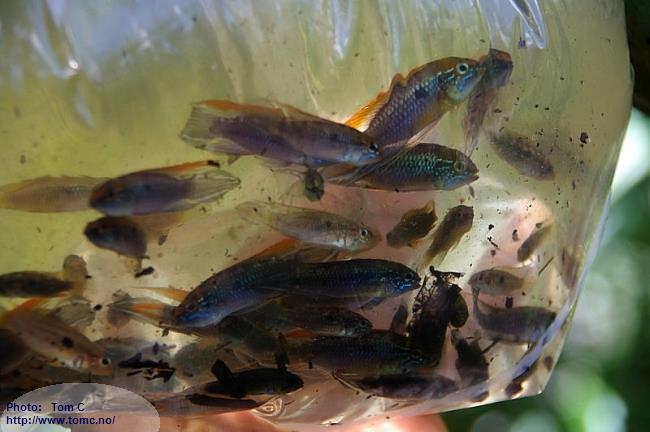
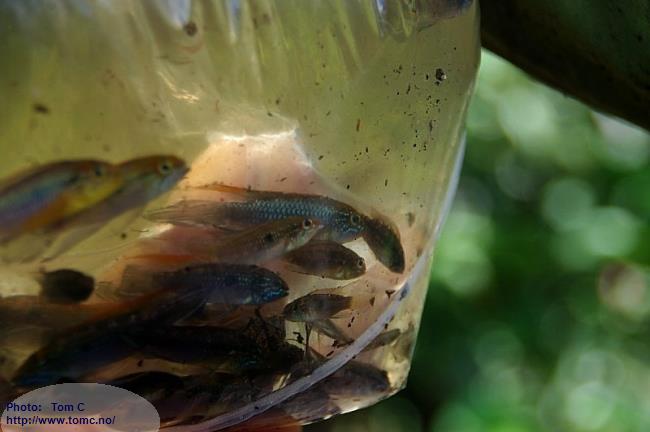
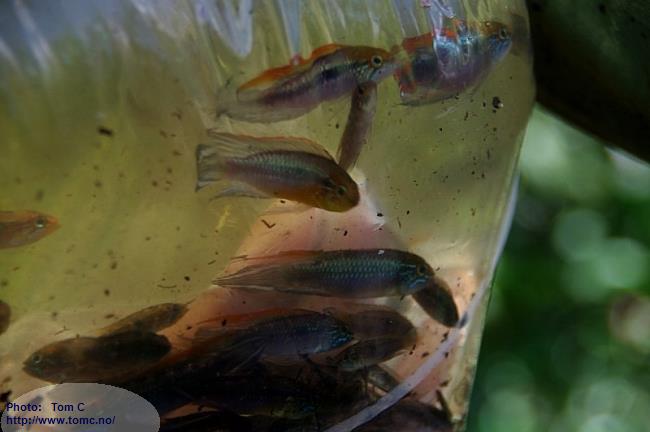
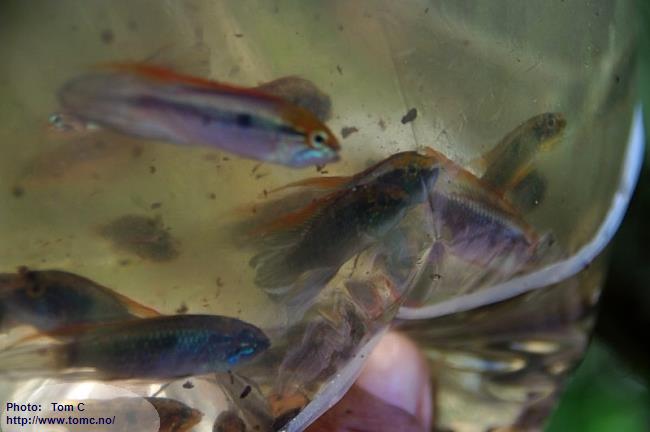
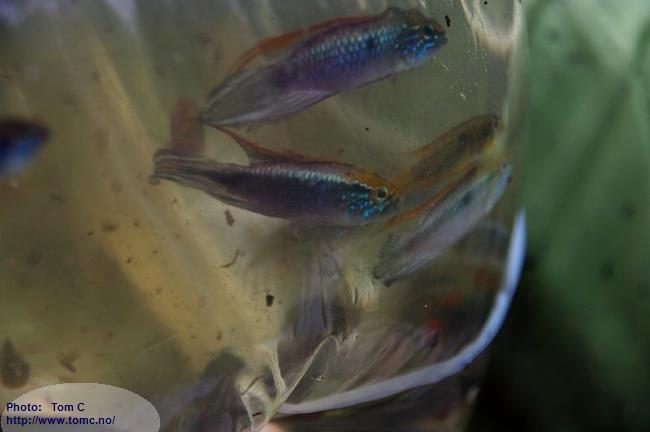
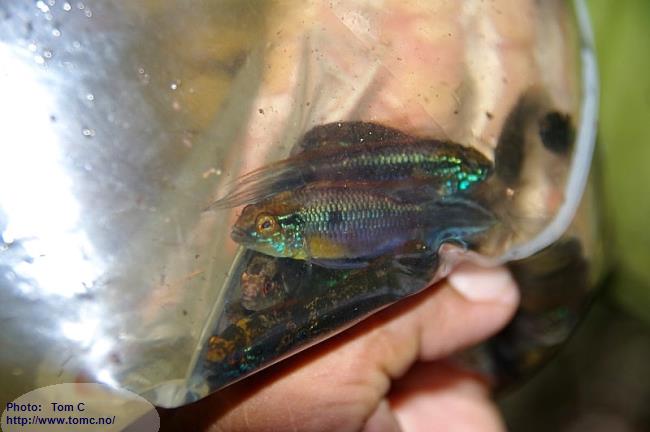
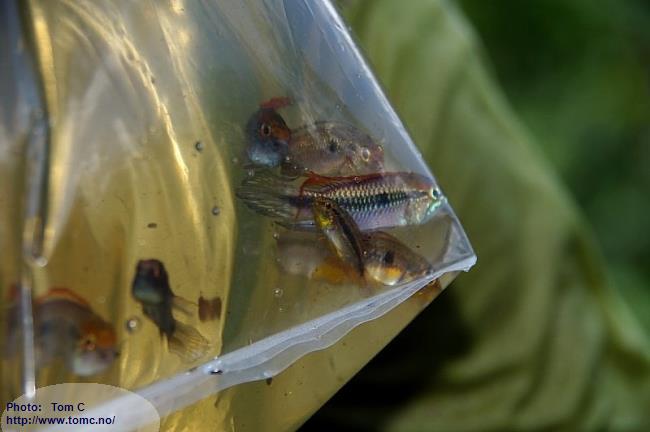
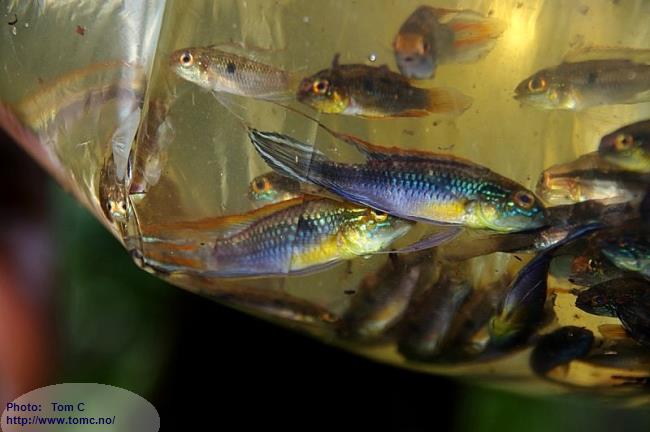
After this exiting discovery, we headed downstream:
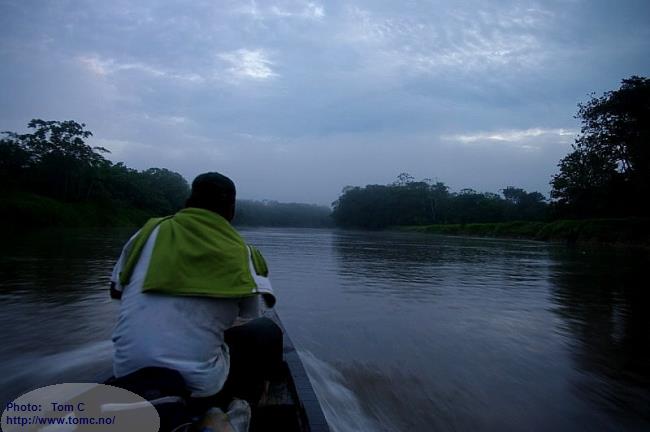
As usual, the nature offered us a shower while sitting in the boat:
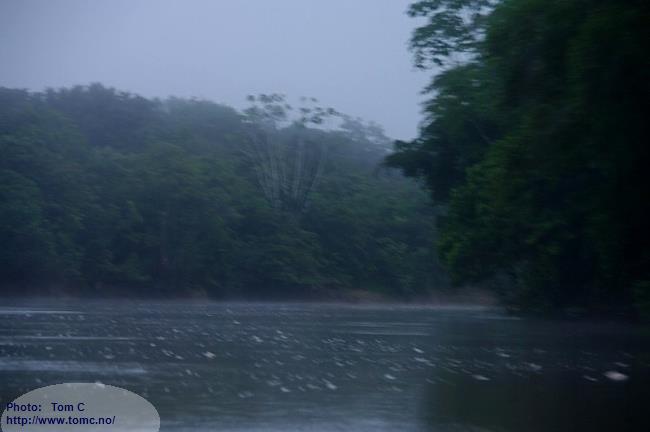
At last, we reached Requena again:
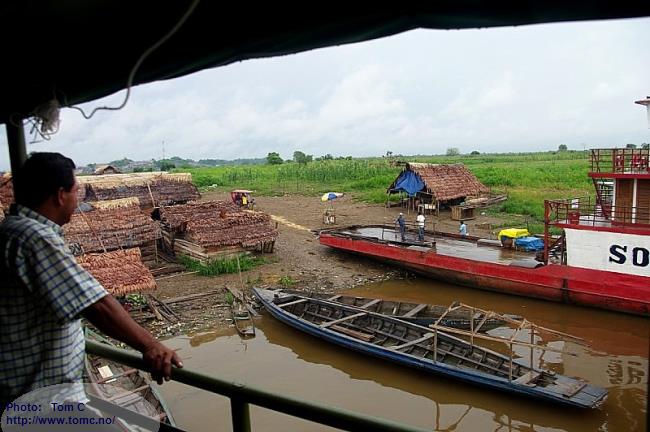
If you expect a big boat to arrive, why not try to make some money out of it:
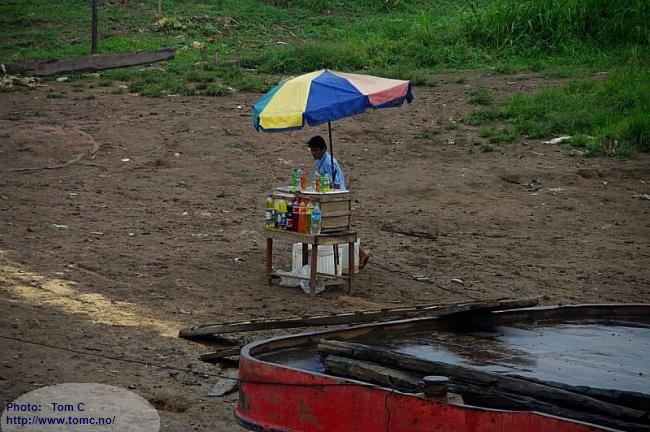
Local life in the harbor area:
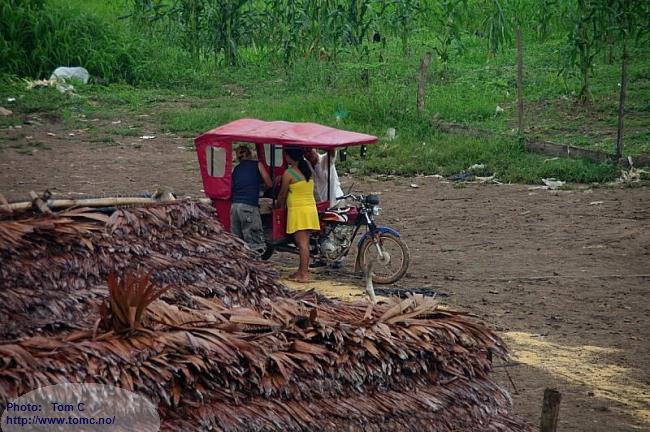
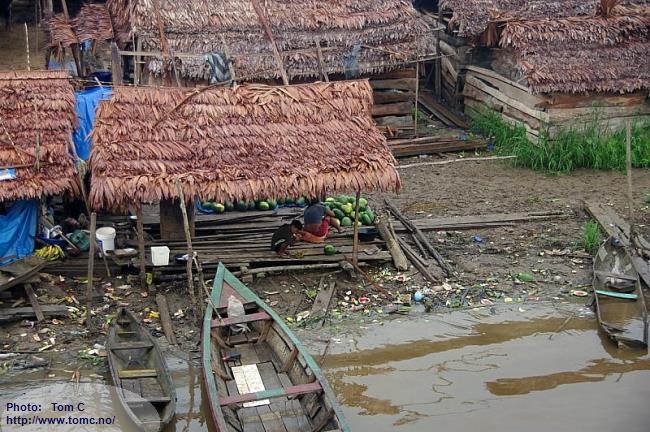
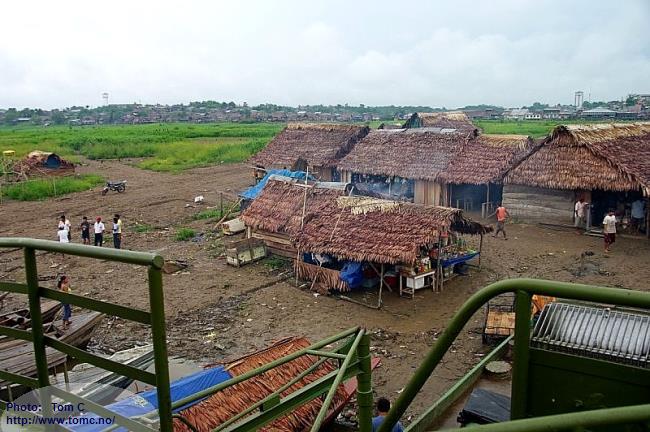
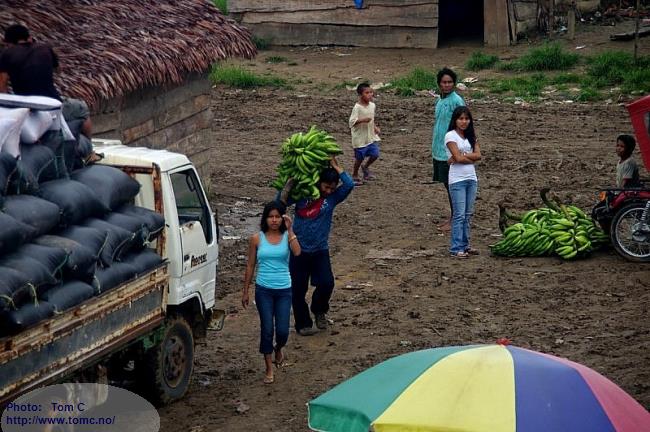
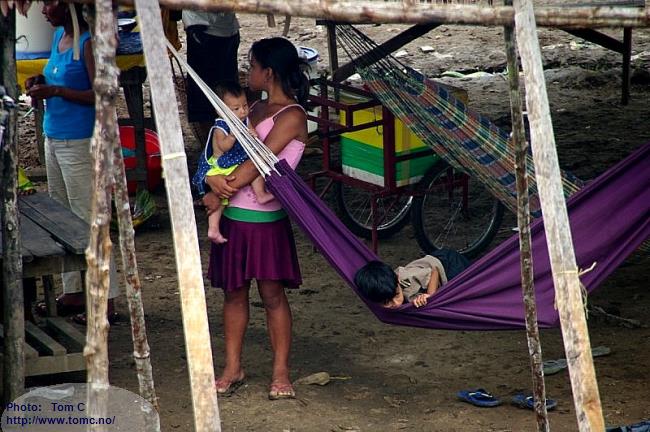
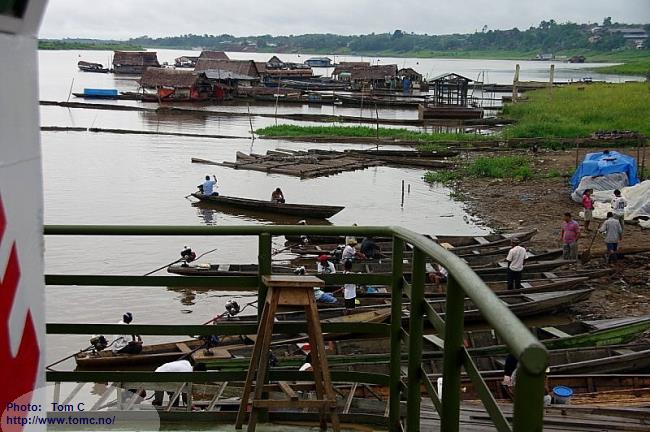
The same boat which brought us there, was ready to leave the next day.
We were allowed to have our rooms/beds one day too early, so we could sleep in the boat:
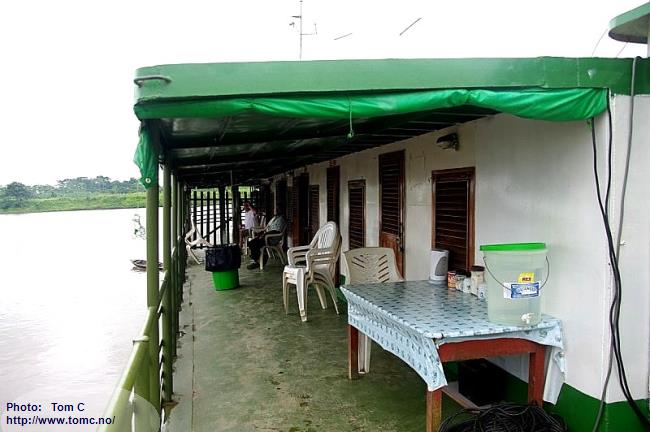
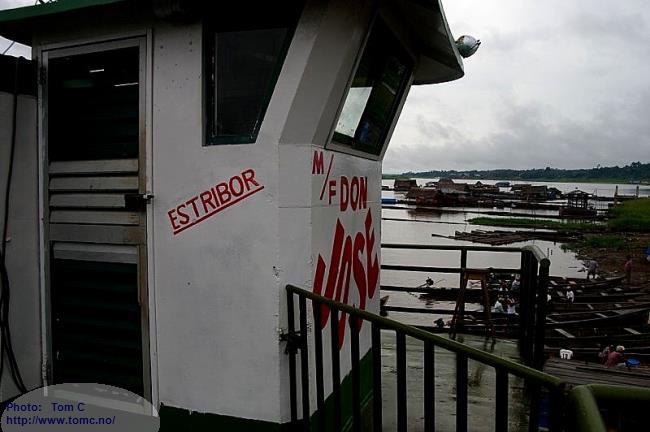
The next day we left Requena at 14:00 (02:00 pm).
Estimated time to arrive in Iquitos: 06:00 am the next day.
The boat stops to take on cargo at many small villages along the river (Ucayali). A very time consuming activity,
as the loading is done manually
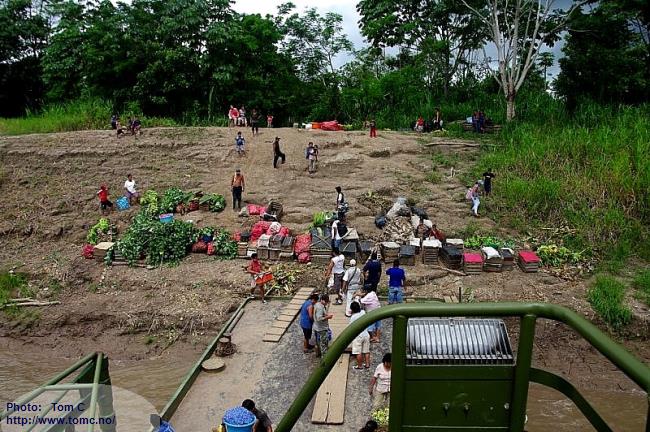
mainly by the young boys
(which gives them an opportunity to show the girls how strong they are :-D)

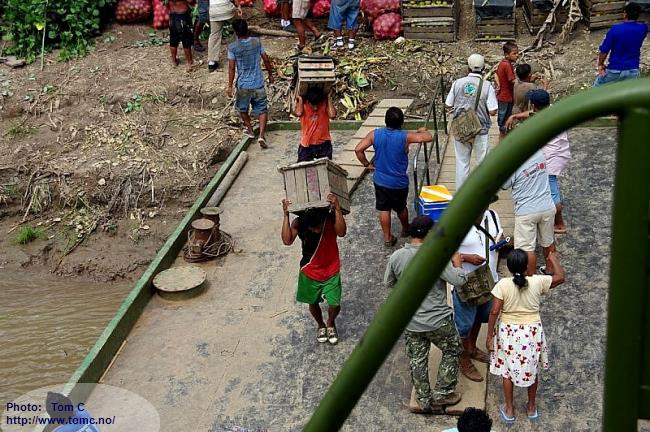
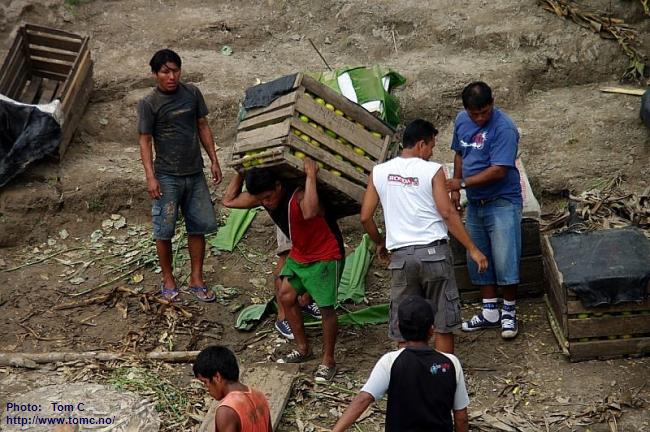
And they ARE strong:
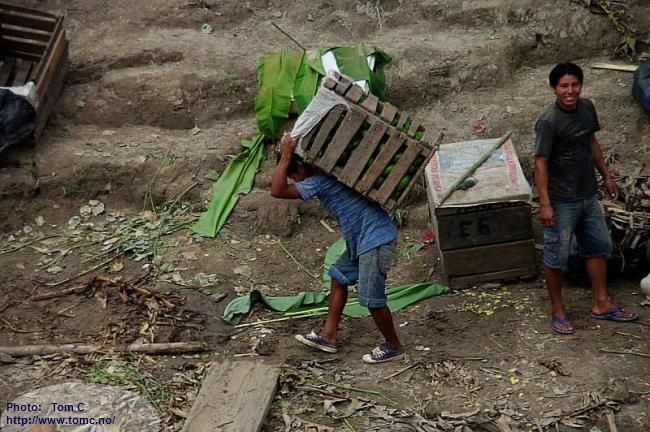
This trip lasted for almost 11days, and included traveling more
than 1100 km (700 miles) on the rivers.
After such a trip; happy with all the fish we collected, the amazing habitats, biotops and nature we had seen and all the small and big
experiences we had, but quite exhausted, hungry, dirty and tired, it is very nice to come back to Iquitos; Nice clean bed, dinner
(without rice!) at a restaurant, a long, hot shower, and a waterproof roof when it rains!
Thanks to our good friends, Francisco and Albertini, who helped us with everything !
http://tomc.no/
|
|
|
|
|
|